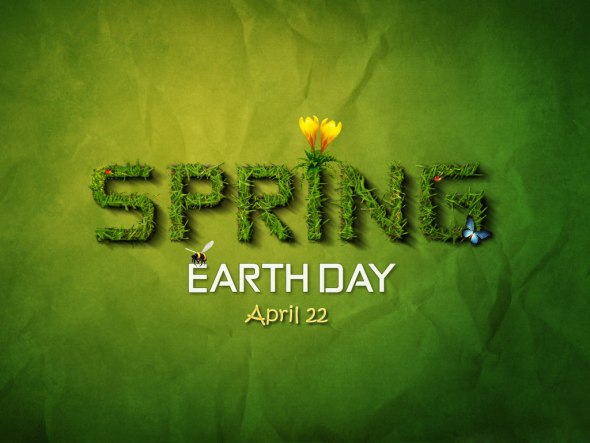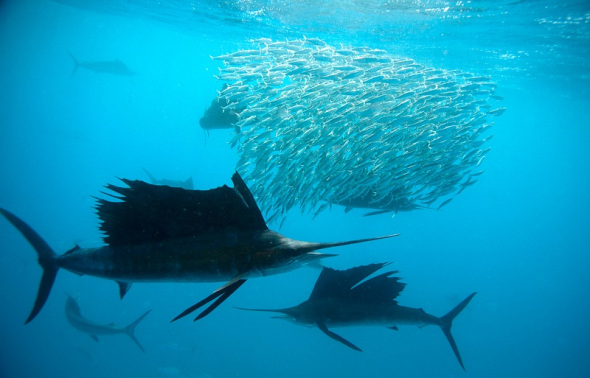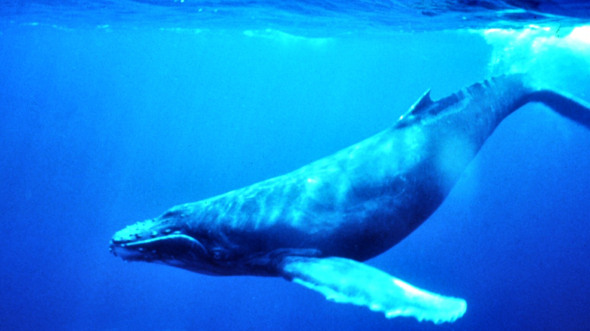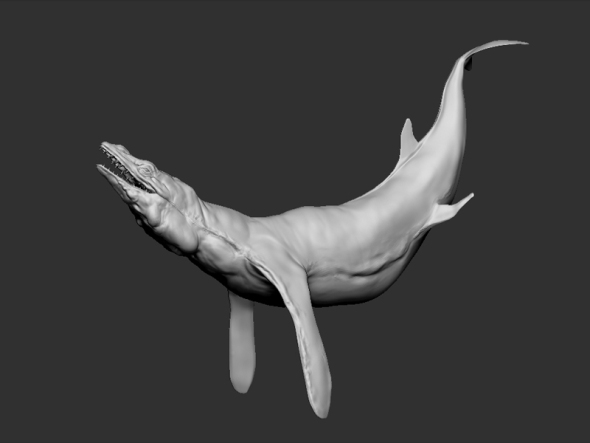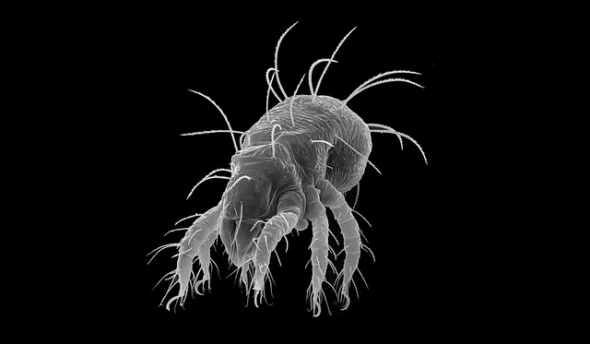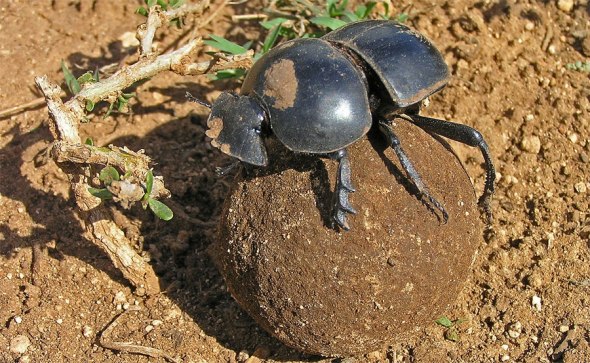Environmentalism - Chapter 33 April 22nd EARTH DAY
Good day everyone, thank you all that took part in Earth Hour March just gone internationally and locally however don’t forget that we have another world event day just a few weeks around the corner and that is Earth Day April the 22nd which we celebrate in style but was a little disappointed that some international and European governments didn’t celebrate to even few non-profit organisations.
Planet earth is suffering dearly and just making these simple yet large small environmental changes every now and then or even every day you’re contributing to slowing climate change destruction and reducing you carbon foot print all of which helps to increase a much healthier planet and soul.
International Animal Rescue Foundation © believes that Earth Day should be an everyday event and just imagine if we could utilise these simple changes below every day that would not just benefit ourselves and our children but also our flora, fauna, water, forestry and air quality too as well as a more comfortable way of living.
So were going to keep the write up very simple whilst demonstrating a few out of the one hundred and thirteen simple changes that we have chosen from our own events of which we would like you to practice.
Utilising these everyday changes will help to decrease and increase the following if we all band together and work as an international team of united citizens, conservationist’s and youth alike. Together we can make change happen and together we will.
Practising these every day simple steps below will help you and Mother Nature by;
- Decreasing atmospheric, land and marine pollution.
- Increase healthier oxygen intake and overall air quality.
- Decrease the melting of glaciers within Canada and Antarctica.
- Decrease landfills and marine wastes sites.
- Increase wildlife from insects, mammals, organism’s, plants to bees and bats and aquatics.
- Decrease your weight thus increasing your immune system and overall health.
- Reduce your energy consumption by almost 40% or even more.
- Preserve our tropical rainforests and endangered species of primates, Elephants and more
So how can we make these changes happen? Well your already utilising them now by reading and educating yourself and also these easy to adjust and adapt steps are cost effective of which is light on the pocket too thus giving you more money for your children and future retirement.
Mother Nature is crying and has been damaged by irresponsible governments and those that show negativity. Thirty years ago could of easily slowed down “global warming” however because of government ignorance and human overpopulation to mass increase in carbon emissions regrettably global warming has now altered thus changing to “climate change” from which there is no (stopping this trend now). However we can as united global green citizens slow the change.
International Animal Rescue Foundation’s © mission statement on climate change is simple we learn to adapt and not to fight the change, by fighting the change we will only lose thus increasing damage to Mother Nature more and ourselves. The damage has been done, and if you view the documentation through this site you will view how our atmospheric and climate change destruction has worsened since the early 1980’s that’s caused billions of dollars in economic damage thus pushing many species of mammalians to reptilians and aquatics plants and trees to extinction.
We have placed a handful of simple changes that you can utilise below; make sure you’re ready as April the 22nd 2013 is almost upon us;
Preserving energy within the home and business;
- Block gaps under doors to stop draughts.
- Turn off the lights when you’re not using them.
- Buy energy-efficient compact fluorescent lights when you replace bulbs.
- Use a power strip to turn off stand-by power in electronics and appliances.
- Select the most energy-efficient appliances.
- Walk, ride your bike, take public transportation or carpool when possible.
- If purchasing a vehicle, choose an energy-efficient one to reduce gasoline bills and emissions.
- Choose efficient windows and insulation for your home to save energy and money.
- Maintain proper tyre pressure to maximize your vehicle’s gas mileage.
- Learn more about your government’s actions to improve energy efficiency.
- Add energy performance to your selection criteria when buying or renting a house or apartment.
Preserving water loss in the home and business;
- Check faucets and pipes for leaks
A small drip from a worn faucet washer can waste 20 gallons of water per day. Larger leaks can waste hundreds of gallons.
- Don’t use the toilet as an ashtray or wastebasket
Every time you flush a cigarette butt, facial tissue or other small bit of trash, five to seven gallons of water is wasted.
- Check your toilets for leaks
Put a little food colouring in your toilet tank. If, without flushing, the colour begins to appear in the bowl within 30 minutes, you have a leak that should be repaired immediately. Most replacement parts are inexpensive and easy to install.
- Use your water meter to check for hidden water leaks
Read the house water meter before and after a two-hour period when no water is being used. If the meter does not read exactly the same, there is a leak.
- Install water-saving shower heads and low-flow faucet aerators
Inexpensive water-saving low-flow shower heads or restrictors are easy for the homeowner to install. Also, long, hot showers can use five to ten gallons every unneeded minute. Limit your showers to the time it takes to soap up, wash down and rinse off. “Low-flow” means it uses less than 2.5 gallons per minute.
You can easily install a Shower Start showerhead, or add a Shower Start converter to existing showerheads, which automatically pauses a running shower once it gets warm. Also, all household faucets should be fit with aerators. This single best home water conservation method is also the cheapest!
- Put plastic bottles or float booster in your toilet tank
To cut down on water waste, put an inch or two of sand or pebbles inside each of two plastic bottles to weigh them down. Fill the bottles with water, screw the lids on, and put them in your toilet tank, safely away from the operating mechanisms. Or, buy an inexpensive tank bank or float booster. This may save ten or more gallons of water per day.
Be sure at least 3 gallons of water remain in the tank so it will flush properly. If there is not enough water to get a proper flush, users will hold the lever down too long or do multiple flushes to get rid of waste. Two flushing’s at 1.4 gallons is worse than a single 2.0 gallon flush. A better suggestion would be to buy an adjustable toilet flapper that allows for adjustment of the flush per use. Then the user can adjust the flush rate to the minimum per flush setting that achieves a single good flush each time.
For new installations, consider buying “low flush” toilets, which use 1 to 2 gallons per flush instead of the usual 3 to 5 gallons.
Replacing an 18 litre per flush toilet with an ultra-low volume (ULV) 6 litre flush model represents a 70% savings in water flushed and will cut indoor water use by about 30%.
- Insulate your water pipes.
It’s easy and inexpensive to insulate your water pipes with pre-slit foam pipe insulation. You’ll get hot water faster plus avoid wasting water while it heats up.
- Take shorter showers.
One way to cut down on water use is to turn off the shower after soaping up, then turn it back on to rinse. A four-minute shower uses approximately 20 to 40 gallons of water.
- Turn off the water after you wet your toothbrush
There is no need to keep the water running while brushing your teeth. Just wet your brush and fill a glass for mouth rinsing.
- Rinse your razor in the sink
Fill the sink with a few inches of warm water. This will rinse your razor just as well as running water, with far less waste of water.
- Use your dishwasher and clothes washer for only full loads
Automatic dishwashers and clothes washers should be fully loaded for optimum water conservation. Most makers of dishwashing soap recommend not pre-rinsing dishes which is a big water savings.
With clothes washers, avoid the permanent press cycle, which uses an added 20 litres (5 gallons) for the extra rinse. For partial loads, adjust water levels to match the size of the load. Replace old clothes washers. New Energy Star rated washers use 35 - 50% less water and 50% less energy per load. If you’re in the market for a new clothes washer, consider buying a water-saving frontload washer.
- Minimize use of kitchen sink garbage disposal units
In-sink ‘garbage wasters’ require lots of water to operate properly, and also add considerably to the volume of solids in a septic tank which can lead to maintenance problems. Start a compost pile as an alternate method of disposing food waste.
- When washing dishes by hand, don’t leave the water running for rinsing
If you have a double-basin, fill one with soapy water and one with rinse water. If you have a single-basin sink, gather washed dishes in a dish rack and rinse them with a spray device or a panful of hot water. Dual-swivel aerators are available to make this easier. If using a dishwasher, there is usually no need to pre-rinse the dishes.
- Don’t let the faucet run while you clean vegetables
Just rinse them in a stoppered sink or a pan of clean water. Use a dual-setting aerator.
- Keep a bottle of drinking water in the fridge.
Running tap water to cool it off for drinking water is wasteful. Store drinking water in the fridge in a safe drinking bottle. If you are filling water bottles to bring along on outdoor hikes, consider buying a Life Straw personal water filter which enables users to drink water safely from rivers or lakes or any available body of water.
Taking the 30 day Vegetarian challenge;
Vegetarian or not, change the way you think about food, experiment and try new “meat-free” dishes in your diet.
Studies have shown that vegetarians (following a well-balanced low-fat high-fibre vegetarian diet) often have lower incidence of coronary artery disease, hypertension, obesity and some forms of cancer.
A vegetarian diet tends to be lower in total fat, and vegetarians tend to eat proportionally more polyunsaturated fat to saturated fat compared with non-vegetarians. (Animal products are the major sources of dietary saturated fat).
Vegetarians avoid meat, poultry, game, fish and slaughterhouse by-products such as gelatine and animal fats. The staples of the vegetarian diet are fruits, vegetables, legumes, grains, seeds and nuts. Most vegetarians eat dairy products and free-range eggs.
- Fruitarians: Avoid all animal products and processed foods.
- Vegans: Avoid all animal products.
- Lacto-vegetarians: Eat dairy products but not eggs.
- Lacto-ovo-vegetarians: Eat both dairy products and eggs.
- Semi-vegetarians: Eat fish and/or chicken but no red meat. They are not officially classed as vegetarians. (International Animal Rescue Foundation © has placed this option for those that are still unsure on this diet, are located within geographical continents where purchasing non-meat foods is not readily available daily, or for our younger generation that are wanting to start gradually) We see this as the most professional start for those that are concerned or may have eating disorders and/or phobias. However if you’re still unsure you can view our page here and speak to our expert nutritionists https://www.facebook.com/pages/Vegan-and-Vegetarian-foods-to-promote-healthy-living/193221637452747?fref=ts Just simply log in to Facebook.
Please note that International Animal Rescue Foundation is a non-extremist veganism or animal rights “group”. We are an animal and environmental organisation that has to be seen as being fair and helping those that want to change thus not forcing change upon them. We have managed to help since forming our health eating page 94 people turn to a healthy vegan and vegetarian diet since founding the main healthy eating organisation. You can also check our scrumptious thirty brain foods that are not just good for one’s brain but also your immune system. Take a look - http://www.international-animalrescue-foundation.org.uk/brain-food-for-thought/ You can also view and read in more detail the photographic album devised by our African Ambassador Miss Shaka Farthing here https://www.facebook.com/media/set/?set=a.306429822798594.71607.193221637452747&type=3
Credits Mr Phil Muriel - With much thanks and appreciation to this wonderful artist below.. Please log on to I Tunes to purchase his music. This is a fantastic piece of music incorporated with a story too and picturesque video. Thank you Mr Muriel
A vegetarian diet can be a very healthy option but it is important to ensure it is well balanced. You could stuff your face with chips and chocolate at every meal and be vegetarian but you wouldn’t be doing your health much good.
- Staples of a Vegetarian Diet
- A balanced vegetarian diet should include:
- Grains and cereals: Wholegrain bread, brown rice, whole wheat pasta, muesli.
- Legumes, nuts and seeds: Soya beans. kidney beans, split peas, lentils, almonds, cashews, sesame seeds
- Fruit and vegetables: As much as you want - think variety. Try new fruits and vegetables and include them in your diet every day
- Dairy or soya products: Look out for fat free and reduced calorie options for milk, yoghurts, and cheeses.
A typical vegetarian diet closely matches expert dietary recommendations for healthy eating, being low in saturated fat and high in fibre, complex carbohydrates, and fresh fruit and vegetables. As long as you eat a variety of foods you will be getting all the nutrients you need.
Try A Little Vegetarianism (for those that are unsure)
Abandon the idea that you have to eat meat every day and try a couple of meat-free days each week. You don’t have to be a vegetarian to enjoy vegetarian dishes.
Supermarkets, restaurants and fast food outlets all are now stocking a wide range of vegetarian options. Many “meat-free” dishes still have the meaty consistency, and are significantly lower in fat and calories than their counterparts. (Our panel of tasters have often failed to spot the hidden vegetarian option!)
Reducing carbon emissions;
- Buy organic and local.
When possible, buy organic or “fair trade.” There’s a better chance the food was grown in an eco-friendly way, and if it’s locally grown, it didn’t have to travel that far. This also goes for those double lattes — coffee often has a large carbon footprint because of the distance those beans had to travel to get here, and how they were produced. Also, try eating at restaurants that serve locally produced or seasonal foods.
- Pay attention to packaging.
When out shopping, try to go to stores or co-ops that keep packaging to a minimum. For example, you may choose to buy the loose tomatoes rather than boxed or plastic-wrapped tomatoes. Also, take reusable bags to the grocery store. When it comes to resources, plastic is better than paper — but a reusable cloth tote-style bag is better still.
- Ditch bottled water.
Bottled water has a huge carbon footprint — it’s bottled at one location in small plastic bottles and shipped all over. Try buying a reusable water bottle or canteen for your water. Also, a lot of restaurants have made the move from offering fancy bottled water, usually imported from an exotic source, to using in-house filtration systems that make tap water a good choice. Many plastic water bottles are recycled, but most are not, making the footprint even bigger.
- Energy-proof your home.
We’re not talking major upgrades here… Make sure your entire windows close properly and that the attic in your home is properly insulated. This can save you big bucks on your energy bill. Also, keep your heating and cooling systems properly maintained, and switch to reusable filters when possible. Try switching from incandescent to compact florescent light bulbs. Compact florescent light bulbs use about 75 per cent less energy than our normal light bulbs and last much longer. Compared to regular bulbs, the fluorescents are more expensive, but they will eventually pay for themselves due to lower energy costs.
- Go native.
Use native plant species to landscape around your home or business. The plants will probably grow better in a familiar environment, and the plants may also get shipped a shorter distance to get to your local nursery. Also, use organic soil when planting — it’s made using more eco-friendly methods, and uses less resources. And remember, green plants are a good way to offset carbon. So plant something, anything — it helps.
- Window shop.
If you have the urge to spend, try window shopping or browsing first. This helps ensure you are only buying things you really need, or really want, and you’re not just impulse buying. Remember, every item in a store, no matter how small, has a footprint — so if we are conscious consumers, we can reduce our own footprint and the overall footprint of our nation.
- Take a direct flight.
If you need to travel by airplane, try taking a direct flight when at all possible. Your impact is reduced when you take one flight, as opposed to hopping on a couple or more passenger jets to reach your final destination. You might also feel a little less harried when you arrive, because changing planes can be a real hassle.
- Switch water heaters to vacation mode.
Most water heaters have a “vacation” setting for when you are away from home for an extended period of time. Switching to that “away” mode still keeps the water warm, but will not use the energy it takes to keep a tank full of piping-hot water. Enjoy your vacation even more, knowing that you’re saving money and reducing your footprint.
- Unplug it!
Unplug appliances that you don’t use frequently. Most electronics have a standby mode that siphons energy even when not in use. Cell phone chargers, laptops, televisions, stereos — there’s a whole list of items that should be unplugged when not in use. Try using a power strip for groups of electronic items. One flick of the switch and it’s all off.
- Chuck your microwave.
Admittedly, this is a bit drastic. But this speaks more to those convenient frozen dinners some rely on because of their busy schedules. A freezer full of HEALTHY meals is actually more energy-intensive (FACT) — it costs more to freeze foods, ship them cold, display them frozen in the grocery store and keep them frozen in our homes. So while the modern convenience of the microwave and the Lean Cuisine is enticing, it’s much more resource-intensive. Cook fresh food when you can, and you’ll also find yourself eating out less often.
- Use cold water.
No, not in the shower but maybe in the washer, try using cold water to launder things that don’t need to be cleaned in hot or warm water. It takes a lot of energy to heat up water — multiply that by the number of loads, and that’s a big footprint. Most major detergent makers sell detergents designed to have the same cleaning power as with regular soap. Try washing mixed loads in cold water, too.
- Have the family over.
Family gatherings are a good way to spend some quality time with loved ones, with very little carbon impact. Cooking and entertaining for larger groups is more efficient and, per person, a lot less expensive. And who can put a price on these “carbon freebies”?
- Make time for errands.
A lot of us try to run errands in-between work and other commitments. Try bundling errands together to reduce how far you need to travel. Going back-and-forth to the same part of town on different days to run errands uses more gas than if you planned and did everything in the same area all at once. And if you really want to make it a “carbon freebie,” try carpooling and running errands with a buddy.
- The Three Rs: Reduce, Reuse, And Recycle – International Animal Rescue Foundation’s © environmental mission statement.
It seems like something from a kid’s sing-a-long, but sometimes we lose sight of just how much we buy. Try buying less, and reusing and fixing things when you can instead of buying new. And for a lot of people, recycling is as easy as rolling the trash bin to the curb. Just remember to do it at work, too.
Celebrate how your ancestors would off
Grow your own organic vegetables;
Growing your own organic vegetables decreases agricultural pollution, pesticides, insecticides, to CCD (Colony Collapse Disorder) that’s resulted in billions of European, American and Asian honey bee’s perishing;
- A VEGGIE/FRUIT GARDEN REDUCES THE CARBON FOOT PRINTAND GLOBAL WARMING.
- REDUCES THE CONSUMPTION AND THEREFORE PRODUCTION OF CHEMICAL FERTILIZERS AS LESS DEMAND WILL BE FOLLOWED BY LESS SUPPLY.IT INCREASES THE CHEMICALLY FREE PRODUCE THOUGH!
- IMPROVES ON THE HEALTHY DIET OF ALL THE FAMILY AS IT INTRODUCES HOME GROWN ORGANIC FOOD HARVESTED RIGHT FROM THE BACKYARD.
- SAVES ON THE GROCERY BILL -AND MEDICALL BILL AS HEATH IMPROVES -AND GROCERY SHOPPING DROPPS.
- BEAUTIFICATION IMPACTS ON THE NEIGHBORHOOD INCREASES AS MORE GARDENS ARE PLANTED.THEY BEAUTIFY YOUR CITY!
- QUALITY FAMILY TIME INCREASES AS MORE MEMBERS COME ALONG WORKING THE GARDEN .COMMUNICATION AND SOCIALIZATION EFFECT PAYS IN BETTER FAMILY INTERACTION.
- COMMUNITY GARDENS AS WELL AS HOME GARDENS FOSTER BONDS BEYOND THE FENCES.THEY PROMOTE DIALOGUE, CULTURAL DIVERSITY, TOLERANCE AND PROVIDE HEALTHY GREENS TO FAMILIES OF LESSER INCOME AND MEANS!
- GET THE LOCAL YOUTH AT SCHOOLS AND HOME ENGAGED IN PRODUCTIVE SOCIAL PROJECTS WITH LESS TIME SPENT ON TV, INTERNET GAMES ETC. PROVIDE OPPORTUNITIES TO LEARN ABOUT RECYCLING, LEADERSHIP, DIVERSITY, SUSTAINABILITY ETC
- PROVIDE AN EDUCATIONAL GROUND TO LEARN ABOUT OUTDOOR ACTIVITIES THAT ARE PRODUCTIVE LIKE GARDENING SKILLS, COMPOSTING.
- SUPPORT THR ECHO-SYSTEM,CREATE BIODIVERSITY AND BE A PRO-ACTIVE MEMBER IN THE NEW PARADIGM OF PERMACULTURE,SUSTAINABILITY AND GREEN ECOLOGY
Plant a tree or even a hedgerow thus increasing wildlife to your area;
Tree planting is the most popular Earth Day event and one of the most common activities people associate with helping the Earth. Millions of trees are planted by Canadians each year. Planting is an act of putting down roots and contributing to the future. The simple act of planting a tree, helps the environment in so many ways.
Trees undertake the following;
- Filter pollution from the air
- Help recycle water
- Prevent soil loss
- Create shade
- Give shelter from wind and rain
- Provide homes for animals
- Make food for humans and wildlife
- Provide an interesting, soothing, learning environment for children and your community and much more!

Smart cars;
Purchase a smart car if your living in city centres, this reduces your carbon footprint, increases your chances of parking, decreased road tax, no road tolls (Please check with the toll service) London, United Kingdom will not charge you that we are aware off;
Smart Cars are the vehicle that looks like they are small enough to be put into the back of an SUV and carried around. They are designed for maximum fuel efficiency, and regularly get 55 to 60 mpg. Although, due to their small size and delicate appearance, some people assume they are unsafe, they perform similarly to other small sedans in crash tests.
Mileage
- The primary advantage of a Smart Car, and the main attraction for the people who purchase one, is its gas mileage. According to the owners of the Southeast Smart Centre, they achieved 75 mpg with a Smart Car. While mileage during every day driving with loads, crosswinds and weather conditions is not likely to reach this level, the Smart Car is still one of the most efficient vehicles on the road today.
Environmental Benefits
- Along with the financial benefits of high fuel efficiency, Smart Cars emit fewer pollutants and particulates in the air, causing less damage to the environment than larger and less-efficient vehicles. Smart Cars still damage the environment, but their impact is less. In addition to their efficient gas mileage, they require fewer materials to manufacture due to their small size, and require less space and energy to dispose of when they are scrapped.
Parking
- The Smart Car truly shines when the driving is done and it’s time to park. Because it’s only 2.5 meters long, the Smart Car can fit into any standard parking spot with room to spare. In some areas with wide parking spots, a Smart Car can even be pulled directly into a parking space and parked perpendicularly, leaving space for another Smart Car.

Solar energy;
You already pay a lot for electricity today. In the future, you’ll pay even more. Nationwide, electricity rates have been increasing 6% per year over the last thirty years. When you go solar, you take control of your electricity costs and opt out of utility rate increases. You’ll save money with solar by locking in a lower rate for your electricity than you will pay for the next thirty years. Many customers start saving money right away.
If you use a lot of electricity and have a really high electric bill, you are likely to save a lot with solar right away. People who have smaller electric bills might not see substantial savings until a few years out.
Solar leases and PPAs allow you to invest just a small amount upfront and pay monthly, which means you, can start saving immediately. With a lease or a PPA, most people save a little bit immediately, and a lot over the long term. If you purchase a system or prepay a lease or PPA, your upfront investment will be bigger, so you won’t start saving until later.
- Is solar a good investment?
Yes. Of course, you’ll want to compare the return you’ll get from getting home solar to your other investment opportunities. When you get a solar proposal for your home, you’ll be able to see your projected monthly savings for twenty years. Those monthly savings will combine to surpass your original investment. All the money you save after that becomes your return on investment. Your return on investment will depend on the rate you pay upfront and some additional factors. You’ll be able to calculate your specific return on investment from any home solar proposal.
- How will solar affect my home value?
Adding solar panels can increase the resale value of your home and help it sell faster. (Please check though that by adding solar panels that you can take them with you, they do not decrease the price of your home should the second purchasers not want solar energy) Always read the small print and ensure that you shop and read online with regards to “solar panels and when you eventually come to selling or remarketing your home) International Animal Rescue Foundation © will answer these questions for you should you be unsure. Please email us at;
Help the environment with solar energy today
The electricity that most of us use is dirty. The majority of power in the United States is made from dirty fossil fuels including coal, gas, and oil. Burning fossil fuels releases toxic emissions, such as nitrogen oxide, sulphur dioxide, and heavy metals like mercury, along with soot, smoke, dust, and dirt. They contribute to smog and acid rain.
Electricity is the leading man made contributor to global warming in the U.S. Forty per cent of the United States’ greenhouse gas emissions come from power plants, with an additional fifteen per cent from home electricity consumption. This makes electricity the leading man made contributor to global warming. Every time we turn on our lights, we are creating pollution.
Solar allows you to power your home with clean, renewable energy. You can make a huge difference just by getting home solar. Over 15 years, solar on an average 3-bedroom home will offset over 80,000 lbs of carbon dioxide. This is the same as not driving 100,000 miles.
Going solar helps reduce dependence on foreign energy
Our increasing demand for energy has led to foreign wars, price spikes, and disasters like the Gulf oil spill. Aside from renewable sources, these sources are going to become more expensive and dangerous, and eventually run out. As we increase our dependence on foreign energy sources and funnel more money overseas, our national security and economy suffers.
These are some of the hand-picked yet useful energy efficient and environmentally friendly earth day events and jobs that you can now prepare for, for April 22nd Earth Day 2013. Utilising these useful and green alternatives doesn’t just save on the pocket it also preserves our earth thus decreasing climate change.
Please feel free to look through the sites documents on other environmentally friendly alternatives you’ll be amazed at the impacts you and your family can have on Mother Nature.
Thank you for reading
Dr J C Dimetri Director & International Nation Ambassador’s
Working for a greener future – Preserving natural biodiversity for generations to come.
www.international-animalrescue-foundation.org.uk
Environmentalism Chapter 30 - CoP 16 Report on Wildlife Crime
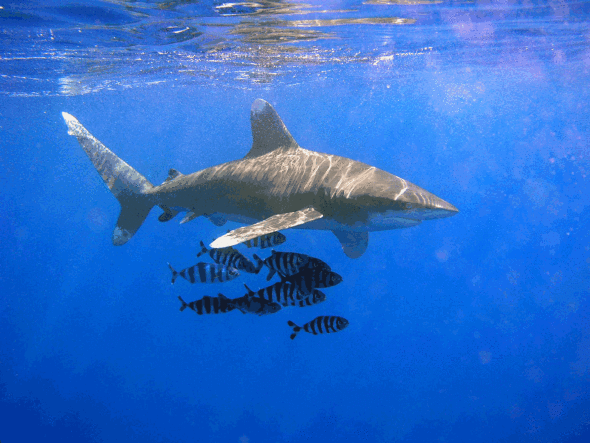
International Animal Rescue Foundation © is pleased with the overall majority of the meetings at the 16th conference of parties (CoP 16th) held in Bangkok, Thailand from the 4th March to the 14th March 2013, although a handful of critics state otherwise regarding Tiger, Elephants and Rhinoceros, Polar Bears and other species listed within the 34,000 species that are brought up within the meetings every three years.
We are though somewhat disappointed in other decisions of which Asia was seen to group mostly together with nations that deal in illegal ivory, Rhinoceros horn but mostly illegal weaponry taking most of the floor.
Convention on International Trade in Endangered Species of Wild Fauna and Flora), also known as the Washington Convention adopted in 1963 and then consequently signed March 3rd 1973 by the then 177 nations which some sceptics seem to be forgetting Cites are not law makers as such. Cites is simply a “signed agreement” that consisted of 177 parties or countries with the majority of them nations from the European Union with one new nation entering four days that now consists of 178 parties in total.
Cites and the IUCN’s aim is to ensure that international trade in specimens of wild animals and plants does not threaten the survival of the species in the wild, and it accords varying degrees of protection to more than 34,000 species of animals and plants.
In order to ensure that the General Agreement on Tariffs and Trade (GATT) was not violated, the Secretariat of GATT was consulted during the drafting process. The agreement has also as of the 40th anniversary implemented and founded new adoptions such as task forces M.I.S.T from which nations will now work on forming an international conservation rescue unit to combat illegal poaching, pseudo hunting, illegal wildlife trade in plants and animals to the preservation of our water ways, soil and natural environment.
Should a serious event of poaching or natural disaster happen placing species in critical danger of extinction or other then transnational agencies will reach out to help other continents in dealing within in a multitude of tasks of which will be effective we hope within the next forty days. Forwarding on from the 15th March 2013, new Deoxyribonucleic acid laboratories will be set in place and internationally recognised departments dispatched and organized to now hit poaching and wildlife crime harder than before, although this is going to take some time to establish we will await and view what the outcomes of M.I.S.T and how effective other orders implemented will come about.
Cites and the International Union for the Conservation of Nature DO NOT see “hunting as a crime” or major problem from which it clearly explains that “sustainable utilization” to protect species is a must as explained in part of their mission statement above to not threaten the survival of the species in the wild http://www.cfr.org/natural-resources-management/convention-international-trade-endangered-species-wild-fauna-flora-cites/p21750 http://www.iucn.org/about/union/commissions/cec/cec_how_we_work/
Sharks, Tiger, Elephants and Rhinoceros;
Much confusion is floating on the international networks that Cites has been caught with its pants down as is only thinking of monetary gain, this is complete utter nonsense. CITES is an international agreement to which States (countries) adhere voluntarily. States that have agreed to be bound by the Convention (‘joined’ CITES) are known as Parties. Although CITES is legally binding on the Parties – in other words they have to implement the Convention – it does not take the place of national laws. Rather it provides a framework to be respected by each Party, which has to adopt its own domestic legislation to ensure that CITES is implemented at the national level.”
In laymen’s terms each nation has to engage in protection of some 34,000 species from which they can ignore such as most of Asia has. However should the “signed parties” FAIL then sanctions can and will be placed of which evidence is shown by the nation’s effected to those that are want action or are concerned with crime in their continent.
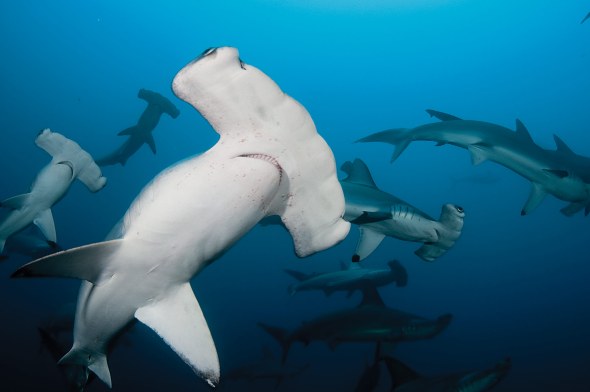
The states then voluntary agree by VOTING that sanctions will be implemented. By applying these sanctions this then BANS the aggressor nations from importing, or exporting any of the listed 34,000 species of plants and animals that would see the violating the nations revenue hit drastically.
Sharks
The 16th meetings of the Conference of Parties (CoP) finally after much debate and disapproval by Asia and some African nations, listed the Ceanic White-tip sharks, three species of Hammerhead Sharks, Scalloped Hammerhead, Great Hammerhead, and Smooth Hammerhead, Porbeagle sharks and manta rays. We are very pleased by this as some 100 million Sharks and Rays a year are slaughtered for their fins to produce Asian Shark Fin soup and Traditional Chinese Medicine.
Had this very historical move by all nations not of been implemented then the Sharks explained above would have been pushed to near extinction from over fishing, poaching, hunting, and the Traditional Chinese Medicine trade which in turn would also have seen a mass over population of their prey thus placing more small species of marine aquatic life in danger we would also of seen a colossal loss of such amazing species effecting marine biodiversity more.
Asia are the main number one offenders and should such nations NOT abide by the ruling that will come into place after the honey moon period of 40 days then sanctions could be placed at any alternative meetings plus17 Conference of Parties (CoP) thus seeing ALL trade banned.
Tiger
Although the Tiger species was not mentioned much about in the meetings it was actually spoken about on the just before the meetings of which Cites quoted the following;
Police and customs heads from 13 Asian countries agreed today to tighten controls and improve cross-border cooperation to curb the illegal smuggling of tigers and other critically endangered species. The accord came at the conclusion of the two-day international “Heads of Police and Customs Seminar on Tiger Crime”, which brought together top Police and Customs Officers from countries that still have tigers living in the wild.
Hosted by the International Consortium on Combating Wildlife Crime (ICCWC), and organised by INTERPOL, in cooperation with the United Nations Office on Drugs and Crime (UNODC) and the World Customs Organization (WCO), and with the technical and financial support from the Convention on International Trade in Endangered Species of Wild Fauna and Flora (CITES) Secretariat and the World Bank, the Tiger Seminar objective was for participants to agree on a robust set of law enforcement-based solutions to protect tigers and other rare and highly threatened species.
“The tale of the Tiger is not simply about conservation, it is also about crime,” said Mr. Yury Fedotov, UNODC Executive Director. “It concerns transnational organized crime, high profits, widespread corruption, money laundering, fraud, counterfeiting, and violence.”
The Tiger Seminar brought together 26 delegates from 13 tiger range countries as well as senior representatives from ICCWC members and key partner organisations operating in the field of tiger conservation and wildlife crime. A critical Tiger Seminar activity was to raise awareness among Police and Customs authorities of the impact wildlife trafficking has on wild tigers.
“We must take immediate and urgent action to save these magnificent animals from extinction,” said Mr. Kunio Mikuriya, WCO Secretary General. “The global Customs community is firmly committed to working closely with its partners to stop criminal trafficking in endangered species and other environment sensitive goods, by ensuring more vigilant and effective border enforcement among a range of measures.”
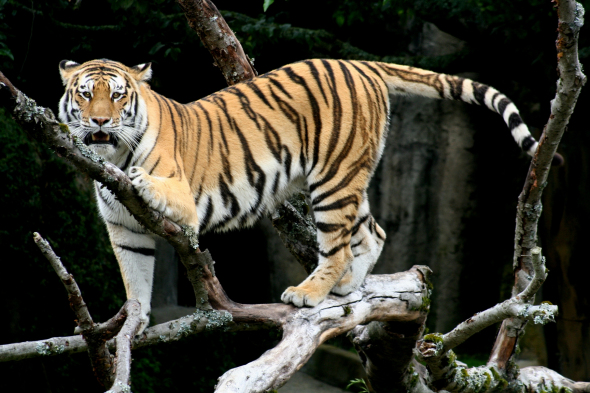
Environmental crime is a serious international problem with a detrimental impact on the global economy and security. Criminals violate national and international laws through increasingly sophisticated techniques and highly organised networks. Their activities directly affect human health, and threaten the environment and global biodiversity.
“Our efforts to fight tiger crime must not just result in seizures - they must result in prosecutions, convictions and strong penalties to stop the flow of contraband,” said Mr. John E. Scanlon, CITES Secretary-General. “If we get the enforcement system right for the tiger, we will help save countless other species together with their ecosystems.”
Tiger conservation experts presented an up-to-date situation analysis of wild tiger conservation threats, particularly worldwide and Asian trans-national organized crime links to wildlife crimes, including the trade in tigers and tiger parts.
“Wildlife and other environmental criminals too often operate in remote areas with impunity, evading detection, and circumventing full prosecution under the law,” said Mr. Keshav Varma, Program Director, World Bank Global Tiger Initiative. “The World Bank and Global Tiger Initiative fully support the resolve of the police and customs officials from tiger range countries to collaborate on intelligence. We applaud efforts to intensify pressure on the organizers of criminal networks and corrupt officials who shield them.”
Working with environmental crime experts, participating tiger-range country police and customs senior officials agreed on cross-border action points, opportunities and cooperation strategies, after discussing national priorities, challenges, and reviewing best practices.
“This important seminar has highlighted the environmental crime challenges facing senior law enforcement officers and the need for enhanced international cooperation.” said Mr. Jean-Michel Louboutin, INTERPOL Executive Director of Police Services. “Criminals cannot prosper from abusing our shared natural heritage.”
Tiger Seminar attendees discussed the need to develop a coordinated response to combat tiger crime.
“We need to work collectively through our respective environmental programmes,” said INTERPOL’s Mr. Jean-Michel Louboutin. “In this context, the INTERPOL Global Complex for Innovation in Singapore will from 2014 provide a key platform to fight environmental crimes in the 21st century.”
The Seminar also recognised INTERPOL’s Project Predator, which aims to develop the effectiveness of law enforcement agencies and form National Environmental Security Task Forces.
“If we lose an emblematic species like the Tiger, mankind will be acknowledging that it is prepared to lose any animal on the planet. This must not be allowed to happen.” said Mr. Yury Fedotov, Executive Director of UNODC. “By our actions, we must show that we have the capacity, the ability and the commitment to protect other species living on this planet.”
Compelled by the need to urgently respond to the burgeoning threat of environmental crime, five inter-governmental organisations formed in 2010 the International Consortium to Combat Wildlife Crime or ICCWC (read I-Quick). These organisations are: the Secretariat of the Convention on International Trade in Endangered Species of Wild Fauna and Flora (CITES), INTERPOL, the United Nations Office on Drugs and Crime (UNODC), the World Bank and the World Customs Organisation (WCO). The consortium seeks to scale up wildlife law enforcement effectiveness, by intelligence-led interdiction and advanced investigative methods.
The “Heads of Police and Customs Seminar on Tiger Crime” is one of the Consortium’s first activities. It is a follow-up to the November 2010 St. Petersburg Summit on Tiger Conservation, during which Heads of Governments of 13 tiger range countries committed to increase their cooperation to eradicate poaching, smuggling, and the illegal trade in tigers and tiger parts. Addressing illegal trade is an essential part of the Global Tiger Recovery Program, a comprehensive 12-year strategy endorsed by all 13 countries to double the population of wild tigers by 2022, the next Year of the Tiger.
The Seminar also addressed Decision 15.48 made at the 15th Meeting of the Conference of the Parties to the Convention on International Trade in Endangered Species of Wild Fauna and Flora (CITES) held in Doha in 2010, which states: “The Secretariat shall seek funds to convene, as soon as possible, a seminar involving senior-level Customs and police officers from tiger range States, to brief them on the threatened status of this species, particularly the impact wildlife crime has upon it. The officials shall also be briefed by the Secretariat regarding the Global Tiger Summit, planned under the Global Tiger Initiative, so that the law enforcement community throughout tiger range States is prepared to engage in efforts to safeguard this species and respond to measures adopted at the Summit. The Secretariat shall collaborate with ICPO-INTERPOL, the United Nations Office on Drugs and Crime and the World Customs Organization in preparing the seminar.”
Cites recognises that the PAOCHING crises is more of a challenge and by hitting this hard and also WARNING the offending nations that should they NOT cease or tackle poaching then by CoP 17sanctions will be placed and that will effect over twenty three nations. Cites and the signed nations have also agreed to input more Tigers into the wild, which would boost their number up by 3,000. Should the violating nations then not ACT sanctions could be placed on all nations.
Placing sanctions would be seen as catastrophic to those that deal in animal and plant part trade, many people rely on animals and plants that brings in on the “legal market millions” in revenue on the illegal market though the entire animal part trade is bringing in an estimated $25 million a year with the illegal plant trade taking in over $12 million. Think of it like a school child being given a warning “misbehave again and all your pocket money is removed”. However in order for all nations to agree on FIRMLY on this at the next meeting then the Tiger and other big cats need highlighting more.
With regards to Tiger bine wine it has been suggested in many reports and those reports from ourselves that most Tiger bine wine is now counterfeit, or is in fact a substitute. Other wildcats are being used for such non-medicinal liquors from the Lion to the Ocelot. The same applies to the Tiger balm and Rhinoceros horn of which 80% of Rhinoceros horn is indeed fake/imitation made up of fine resins and minerals.
Rhinoceros and Elephant;
The ivory trade is the commercial, often illegal trade in the ivory tusks of the hippopotamus, walrus, narwhal, mammoth, and most commonly, Asian and African elephants.
Ivory has been traded for hundreds of years by people in such regions as Greenland, Alaska, and Siberia. The trade, in more recent times, has led to endangerment of species, resulting in restrictions and bans.
While African elephants have been hunted for several centuries, the exploitation of elephant herds on a massive scale began in the 1970s. Organized gangs of poachers used automatic weapons, profited from government corruption, and laundered tons of elephant tusks through several African countries to destinations in Eastern and Western countries.
Threatened with extinction, the elephant is theoretically protected from international trade by their listing on Appendix I of the Convention on International Trade in Endangered Species of Wild Fauna and Flora (CITES) since 1989. The enforcement of this ban, the level of compliance adhered to by CITES Parties, the response of non-CITES members, as well as the policy question as to how trade “interventions” best serve the environmental objective of species preservation, are all key concerns of this dispute.
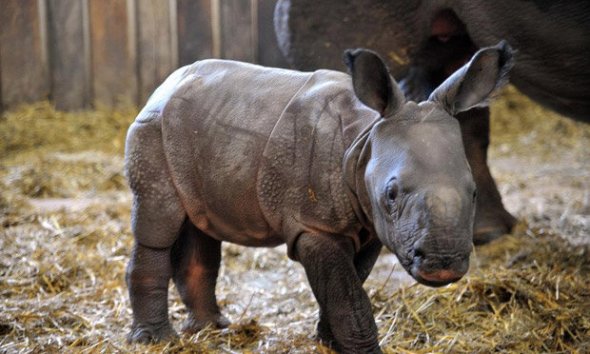
Both Asian (Elephant maximus) and African (Loxodonta africana) elephants are listed on Appendix I of CITES The Asian Elephant is now heavily endangered. Male Asian elephants have small tusks and Asian females are tuskless.
Remaining herds are located in small numbers in Nepal, India, Sri Lanka, Thailand and Sumatra and are now populated for 2012-13 at 22,000. The Asian species once was found throughout Southern Asia, was severely over-hunted. Although ivory trade has experienced sustained growth since the 1940s, the huge increase that occurred during the 1970s was the result of automatic weapons availability and widespread government corruption in many exporting countries which decimated elephant populations across Africa.
In the 1960s, raw ivory prices remained between $3 and $10 per pound. In 1975, the price reached $50 because ivory was perceived as a valuable hedge against rising inflation. By 1987, the price was $125 per pound. The relative price inelasticity of ivory also fuelled demand.
New manufacturing techniques which enabled the mass production of ivory carvings along with rising demand in East Asia led to increased elephant kills.
Hong Kong was the primary consumer of raw ivory from 1979 to 1987 and probably remains important today. Japan was the second largest consumer in this time (whose market share dropped markedly during the period), followed by Taiwan (whose share rose). For both Hong Kong and Taiwan, there is significant trans-shipment of product to China. In 1979 the EC began was a major consumer, but by 1987 its share dropped to 4 per cent. At the same time, the United States market share rose from 1 to 6 per cent
Cites quoted at CoP 15 the following;
“There has been increasing willingness within the Parties to allow for trade in products from well-managed populations. For instance, sales of the South African white rhino have generated revenues that helped pay for protection”. “Listing the species on Appendix I increased the price of rhino horn (which fuelled more poaching), but the species survived wherever there was adequate on-the-ground protection. Thus field protection may be the primary mechanism that saved the population, but it is likely that field protection would not have been increased without CITES protection”.
Trade in both Ivory and Rhinoceros horn is banned so there is not much now that Cites can do other than now order an ultimatum to the main twenty three nations that should the poaching not be ceased by the removal of ivory and tackling poachers, couriers, purchasers, kingpins to drug barons then Cites will as explained above impose immediate sanctions which would severely impact on the economy hard off the violating nations. However could placing sanction’s then increase poaching more?
This is the main worry that Cites has hence why they are cautions with regards to listing other Elephant and Rhinoceros species. So these offending nations are being given the chance, with the help of increased law enforcement, M.I.S.T and environmental policing agencies and “HELP of the Google to now remove all banned animal parts thus hitting demand harder and pushing the criminals into the streets which International Animal Rescue Foundation © required to now combat crime and cease all trade in three years. SHOULD it fail then sanctions will be implemented.
The conference has identified 23 countries including China, Nigeria and the Democratic Republic of Congo that are key to the supply and consumption of ivory.
A committee of the conference will outlined the actions that each of these countries must take to stem the trade. If these steps are not taken by the summer of 2014, sanctions could be applied.
It depends though on how much progress there is, but if there is absolutely no intent to follow up on those actions, sanctions are a very real possibility,” Targets for countries like Nigeria were achievable.
If you see ivory being sold at the airport terminals, all they need to do is shut it down. These are do-able actions, they are not ones that would require a great deal of new resources.
Governments were no longer seeing these species issues as being about biodiversity - they were seen as threats to national security. The criminals who are now poaching elephants and smuggling tiger parts are the same who are funding terrorism and funding militias.
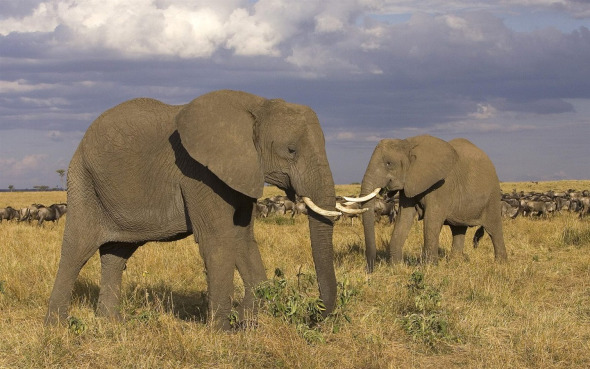
Hong Kong is already at the front line with colossal seizures from 2011-2013 http://www.scmp.com/news/hong-kong/article/1190036/hand-organised-crime-ivory-trade
Tourists are being urged now to STOP purchasing ivory from which International Animal Rescue Foundation © has seen much off and sent many papered documents to the environmental law enforcement agencies to now cease this, the press have launched now a multi-national appeal to STOP purchasing ivory this hitting trade even more http://www.asianewsnet.net/Thailand-tourists-urged-to-refrain-from-buying-ivo-43984.html
Please read following reports http://www.cites.org/eng/news/pr/2012/20120621_elephant_poaching_ivory_smuggling.php
Taiwan has stated it will also burn all ivory and ban all market trade before the next summit, Taiwan is the largest distributor and importer of ivory internationally with China and Vietnam being the second and third. http://www.bangkokpost.com/news/local/338598/thailand-in-landmark-pledge-to-end-its-ivory-trade all reports can be viewed here http://www.cites.org/eng/news/cuttings/2013.php
Rhinoceros is also under the same predicament and although there was not a mention of the trade being lifted at the Cites conference it has been seen by some “mostly Rhinoceros owners and some wildlife” agencies as unfair to allow the ivory trade to commence yet “not the Rhinoceros horn” however that is just blatantly ridiculous as on cannot de-tusk as Elephant of which all monies amassed from “sized Ivory” went into conservation protection “although that protection is to still to be seen” the sale never actually decreased poaching just made matters worse by supplying the market thus keeping the demand flow high and lucrative.
The Chinese government also then after purchasing the ivory re-sold this on for 10X the price they paid for it “that’s why poaching didn’t decrease”. The same in theory has been applied to the Rhinoceros from which the Department of Environmental Affairs quoted that the “the Rhinoceros horn debate will NOT “be lifted BUT has to spoke on as this a taboo area.
This clumsy researcher that was born in Africa that now resides in Australia printed this article on the Rhinoceros horn debate then instructed all of his friends and family, university students and more to not sign the AVVAZ petition https://www.facebook.com/photo.php?fbid=10150614157465933&set=a.10150167025165933.306936.633775932&type=1&theater then consequently contacted the DEA and other agencies to pressure the South African government on legalising it. Maybe he simply doesn’t understand a simple thing of what actually happened to the Elephant species. - http://www.abc.net.au/pm/content/2013/s3701680.htm
Most of the demand for rhino horn comes from China and Vietnam, where it is used to treat ailments ranging from headaches to cancer. The horn has no real curative powers, however–it is composed of keratin, the same material human fingernails are made of. Delegates to CoP16 in Bangkok, Thailand, congratulated the Department of Environmental Affairs for its initiatives to combat rhino poaching on the sidelines of the conference saying initiatives presently being undertaken in South Africa would enhance the global effort to fight all trans-boundary wildlife crimes.
The Department of Environmental Affairs then stated http://za.news.yahoo.com/south-africa-mulls-legal-rhino-horn-trade-123704593.html trade “has to spoke about of which SHE DID NOT state that the Rhinoceros trade WOULD be lifted. The DEA minster quoted;
“I must state categorically that there is no decision by South Africa on whether to apply to CITES at CoP17 to legalise the trade in rhino horn, or to permit the once-off sale of rhino horn stockpiles to fund conservation efforts, has been made.”
Edna Molewa 2013 March - Statement issued in the 8th March;
Update for Rhinoceros poaching 15th March 2013 is 158 Poached dead https://www.environment.gov.za/?q=content/stats_rhino_poaching_update
We were concerned about this statement though of which is going in favour of the hunting fraternity that see sustainable utilization as the only answer to control “species over population”. In our eyes there is no such thing as “animal species over population”. Our concepts are clear of which habitat destruction is the main number one issue that has to be tackled. The DEA minster quoted;
“South Africa’s position will be informed by, and based on, sustainable use principles with the long term conservation of species as the overall objective. Proposals that will ensure responsible utilization and conservation of the species concerned will be supported by South Africa”.
“Over 90 per cent of Africa’s white rhino and approximately 35% of Africa’s black rhino occur in South Africa. Rhino populations occur in formally proclaimed conservation areas as well as on private land, with the private sector contributing approximately 2.2 million hectares of land towards rhino conservation, with more than 4 000 rhino in private ownership. The populations occur throughout South Africa in all its provinces”.
“South Africa developed a Biodiversity Management Plan (BMP) for the Black rhino, aimed at ensuring the long-term survival in nature of the species, and is in the process of developing a BMP for white rhino. Key elements are the maintenance of existing ranges, the promotion of long term genetic viability and the establishment of new viable populations. South Africa shared information relating to the status of its rhino populations and interventions implemented and planned to secure its long term survival”.
South Africa has seen an increase in the illegal killing of its rhinoceros population, especially the white rhino population in the Kruger National Park where 425 animals have been poached for its horns in 2012.
While it is clear that rhino poaching has increased, so too has the focus and activities of the South African security forces in attempts to protect the rhino. South Africa has implemented various measures to counter the slaughtering of its rhino population, but 2012 saw the greatest number of rhinoceros killed in a single year, i.e. 668.
The side event at CITES CoP 16 was intended to show participants, attending the CoP, what South Africa has done in the fight against the illegal killing of rhino and illegal trade in rhino horn; and what additional measures are required to ensure the safety and security of our rhinoceros population.
The current annotation to the Appendix II listing of the white rhino populations of South Africa and Swaziland restricts trade to live specimens to appropriate and acceptable destinations and hunting trophies. A proposal to prohibit the export of hunting trophies until at least CoP 18 was submitted by a Party for consideration to the 16th CoP to CITES. This proposal was opposed by South Africa and Swaziland and it highlighted the need to have a discussion on the role of trade in the conservation of the species. During the side event presentations were made to elicit discussions relating to this important topic.
The Department of Environmental Affairs (DEA) is currently leading the development of the UNEP-GEF project ‘Strengthening Law Enforcement Capabilities to Combat Wildlife Crime for Conservation and Sustainable Use of Species in South Africa (target: Rhinoceros)’. The main aim of the GEF project is to improve the forensic and intelligence/information sharing capabilities of relevant groups to better control the recent upsurge in poaching of rhinoceros in South Africa’s protected area network, especially Kruger National Park. South Africa shared the information relating to the project with the CITES Parties and NGO community.
South Africa participated in the CITES and Livelihoods side event that reflected on the role international trade plays in terms of livelihoods of communities and the challenges and opportunities that it presents. The case study of the Tyhefu Traditional Council Aloe Project was presented by a community member of the project itself, Mr Mangwanandile Witness Mjoli.
Please read below the key components for your interest;
https://www.environment.gov.za/sites/default/files/docs/rhinopopulation_stateownedland.pdf
https://www.environment.gov.za/sites/default/files/docs/protection_ofrhino_species.pdf
https://www.environment.gov.za/sites/default/files/docs/unep_gef_project.pdf
One must not yet look at everything in all doom and gloom, the facts have been clearly stipulated and proven above, we must now all work as an international TEAM to combat illegal poaching, reduce demand, and protect our species of which transnational law enforcement forces are now undertaking. We must also remember that the Rhinoceros horn trade HAS NOT been lifted and the Rhinoceros is still listed as near threatened and not vulnerable.
Focusing on these key important areas thus using every piece of technology, equipment, funding, team work and more must NOW be seen as critically important for the next meeting at CoP 17 to be held in South Africa.
Thank you for reading
International Animal Rescue Foundation
Director
Co- Founders
International Delegates
Administrative Delegates
Youth Ambassadors China, Amazonia, America, Malaysia
http://www.grida.no/publications/rr/elephants/ (THE CRISIS CAN BE ADDRESSED)
There are 500,000 African Elephants left in the wild - Please download the most comprehensive and up to date research. Please watch the video above as it’s most important. There is also a 40Mb Pdf FILE that you can download. ELEPHANT range is now second to POACHING - Agriculture, supplying markets outside of Africa, land conversions from which South Africa ha now ceased all migrants from purchasing land so South Africa has known of this problem for some time. Habitual loss and human over population are KILLING the Elephants too. This now MUST be seen as MOST important that need’s tackling.. 60% decline is very worrying
RRAivory_draft7 Download Elephants in the Dust
25,000 left in the wild however hunting is declining in this with increased crime efforts to combat illegal trade and wildlife trade in vulnerable species.
Environmentalism Chapter 28 - Wildcat Conservation
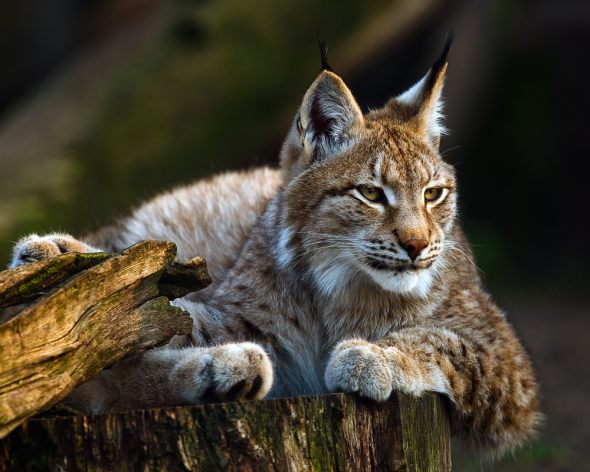
The big cat family we absolutely adore within the animal kingdom that have roamed for planet for over a million years virtually left untouched by man, consumer greed, increasing wildlife part medicine trade and fur/skin trade, to habitual destruction, agriculture, pet trade, mining, pollution and human species conflict. (Picture above is Eurasian lynx)
Wild cats are one of a prized species of wild felidae’s that share almost the same appearances but are not all generically related to one another such as the Tiger and Lion, and of course all being prime carnivores that hunt their prey stealthy, with precision speed, compact agility, and power to stay alive in today’s demanding and competitive world.
Mostly nocturnal they will take their prey in the dead of night or early mornings. The larger felid family though that have no real known predators will hunt both morning and night to sustain their colossal carnivorous diet that normally ranges in between 11Lb and 25Lb of fresh hunted meat a day every day. We have heard of “one to two” larger felids consuming a plant based diet however it’s unheard of and [very rarely] practised in the Zoological society, this diet can also cause malnutrition and severe illness, arthritis, bone and skin disease to eventual death.
Over one hundred years ago the population sizes of our most precious wild cats that range from Lions, Cheetahs, Tigers, Jaguar, Jungle Cat, to the Pampas cat down to the near threatened [NT] Sand Cat that is almost identical to the domestic feline cat Felis silvestris catus populated the earth in the thousands.
Unfortunately we are now losing our wild cats very rapidly for many reasons that we can as a human species control if other nations reduced a range of environmentally damaging factors such as mining, palm oil to and poaching, pet trade and a vast reduction in fur trade both legal and illegal that’s seen many celebrities that was against fur now return to this repulsive trade.
Those celebrities were adored by many for their stance against the fur trade, environmentalists and activists were most thankful regarding the awareness they created thus educating many, sadly with so many now returning to their old past life style behaviour more animals suffer with many wildcats pushed to nearing extinction.
There are some thirty six species of wild cats within today’s world of which some are listed as least concern [LC] on the International Union for the Conservation of Nature [IUCN] to others that are critically endangered [CR] only living in the hundreds, to the Amur that’s population count stands at a mere thirty individual cats left within the Eastern European wild.
The most precious critically endangered wild cats that still inhabit the earth in small populations are going to be pushed to extinction within the next three to five years unless immediate action is taken by Asia and Eastern Europe “members of the Cites agreement” in ceasing the illegal wildlife parts trade imminently.
Since the start of the Cites summit in Bangkok, Thailand 4th March 2013 from which 35,000 species of animals and plants fall under the Washington agreement there was very little mention with regards to the wildcats, no sanctions placed against China or Thailand in banning them from all importations of all 35,000 species which would have been seen as exceptional punishment for trade and poaching violations.
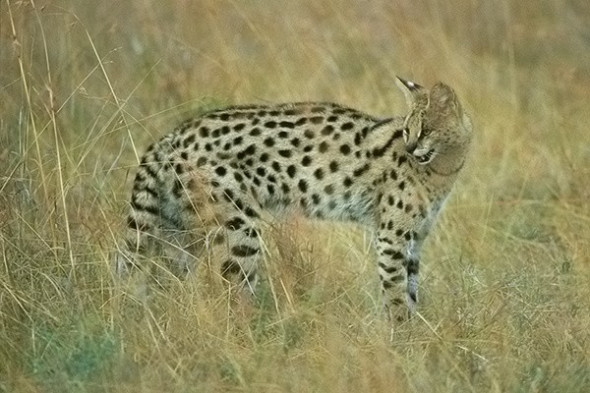
The Convention on International Trade in Endangered Species and the I.U.C.N did explain 10th March 2013 that more Bengal Tigers were to be pushed into the wild thus increasing population size. The problems we see though with the Tiger Bone Wine trade. Is how can one possibly protect our Bengal or Sumatran unless imminent sanctions are placed to at least give populations time to increase.(Picture above is the Serval)
Pushing more species into the wild is merely pushing them into the poacher’s hands thus increasing more money and demand. Please view this link. https://www.facebook.com/permalink.php?story_fbid=176332405848682&id=199685603444685
Immediate action must now be implemented to end the barbaric Traditional Chinese Medicine [TCM] and Traditional Indian Medicine [TIM] trade cultures that are seeing many animals slaughtered for their bones, claws, skins, to organs, and genitals for fake medicines, cultural myths and urban legends that supposedly bring you luck and good will to improving one’s health which is complete fantasy.
I have identified, detailed and highlighted some of the most precious and extremely endangered wildcats from the least concern to critically endangered, that still inhabit the earth today.
The thirty six wildcats within the wild are as follows;
The African Golden Cat, Asian Golden Cat, Andean Mountain Cat, Bay Cat, Black-footed Cat, Bobcat, Caracal, Cheetah, Chinese Desert Cat, Clouded Leopard, Cougar, Fishing Cat, Flat-headed Cat, Geoffrey’s Cat, Iriomote Cat, Jaguar, Jaguarundi, Jungle Cat, Kodkod, Leopard, Leopard Cat, Lion, Little Spotted Cat, Lynx Canadian, Lynx Eurasian, Lynx Spanish, Margay, Marbled Cat, Ocelot, Pallas Cat, Pampas Cat, Rusty-Spotted Cat, Sand Cat, Serval, Snow Leopard, Tiger, Wildcat-African, Wildcat-Asiatic, Wildcat-European.
All thirty six cats are of the most colourful, powerful, yet stunning, skilled hunting mammals that still walk the earth today, unfortunately as explained they are under enormous threat and we cannot as conservationists to the general public just simply look at the most critically endangered thus leaving others out of the equation. We have to look at the entire race in the same identical fashion to all flora and fauna that inhabits this destructive world.
Should we lose our concentration or let ones guard down we will most certainly view more species pushed further to the end of the cliff like lemmings, thus losing some of the most beautiful species of wildcats that have roamed shifting continental plates for hundreds of thousands of years.
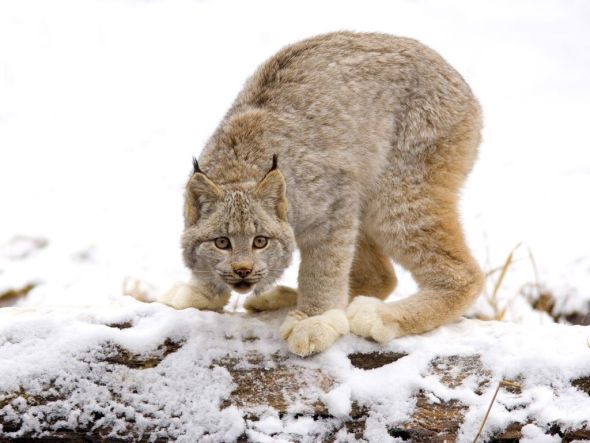
All thirty six species of wild cats inhabit Africa, Asia, North America, South America, and Europe and the Middle East [United Arab Emirates], most populations and species are normally located within the warmer climates, with few species such as the Snow Leopard Panthera uncia located high above sea level in the snowy cold central mountains regions of Asia throughout Pakistan, and Afghanistan to China.(Picture above is the Canadian Lynx)
Panthera unicia is native to these areas yet regrettably being pushed higher up the ridges as their own prey that ranges from the Yak, agricultural wild stock to rabbit and birds are losing their own territory that they would normally feed on due to an array of reasons from climate change, habitual destruction, and pollution to over grazing which is rapidly seeing the Panthera unicia lose its fight for survival.
FELID HISTORY PAST & PRESENT;
The earliest fossil records of the modern felid ancestors come from a period of just under 10 million years ago. However findings of such fossils are rare and it is difficult to piece together a comprehensive picture of the early relationship between the felid species.
The small cats, those grouped in the “genus felis”, are poorly represented, with the exception that is, of the ancestor of the modern day Lynx. The early descendants of the lynx first appeared around four million years ago and are known as the Issoire Lynx (Lynx issidorensis).
This early Lynx was larger than the forms found today and is said more to resemble those species from the genus felis, notably in having shorter legs than the lynx of today.
It is now commonly believed that the Jaguar and Leopard both share a common ancestry, centred in Eurasia a little over 2 million years ago. However whereas the Leopard spread west into Europe the early Jaguar travelled east and crossed the Bering land bridge into North America. The early Jaguars that inhabited the Americas were both larger and longer legged than the modern species.
Ancestral Tigers were thought to have originated from Central Asia and China and spread out both east and west to cover most of Asia from the Caspian Sea to the Russian Far East. It is thought that the modern day Tiger, found in northern China is “perhaps” the closest direct ancestor of the earliest forms of the species.
Fossil records indicated that the Lion appeared on the scene considerably more recently than the other members on the genus Panthera. The earliest known records date back to around 750,000 years ago and stem from Western Africa. From here Lions spread north into Asia and Europe, were the Cave lion (Panthera spelaea) and Tuscany Lion were found in the Balkans and Northern Italy respectively.
The ancestral Lion also crossed from [Asia] into North America and the American lion (Panthera atrox) spread south as far as Peru. It is believed the Lion species evolved from eastern Asia of which then introduced “sub-species” within central Africa.
Early forms of the Cheetah are also believed to have inhabited North America as far back as 2½ million years ago (Acinonyx studeri) to as recently as 12,000 years ago in the smaller form of Acinonyx trumani. The early ‘Old World’ form, Acinonyx pardinensis found in Europe, closely resembled the modern day cheetah apart from being noticeably larger.
HISTORICAL DATA;
There are twenty-six species of “small wild cats belonging to the same group or genus as the domestic cat”, identified as the Felis, and these, together with three species of Lynx, six species of large cats (Panthera), and the cheetah (Acinonyx), make up the family of the Felidae which completes the full set of living species numbering thirty six, excluding though all domestic species of Feline.
There are currently over 73 breeds of domesticated cats recognized by the IPCBA (International Progressive Cat Breeders Alliance), while the more conservative CFA (Cat Fanciers’ Association) gives the nod to only 41. Developing and registering a new breed of cats is a long, involved progress, and not every attempt is successful. For example, the CFA steadfastly refused to admit cats bred from “wild stock,” such as the Bengal, or the Savannah, although these breeds are both accepted by TICA and IPCBA.
There are 45 titled in this link of which extra non-classified members such as the White Lion, White Tiger I have placed herewith for your interest – However please note that there are only 36 recognized wild true species alive. https://www.facebook.com/photo.php?fbid=445618188851424&set=a.445618178851425.1073741826.199685603444685&type=1&theater
With the exception of the Cheetah, the felids are a contiguous group of meat-eaters which are all recognizable as belonging to the same family of mammal. They all have long legs, short faces, and sleek, athletic bodies with beautiful coats.
In addition, they can all retract their claws, have a keenly developed sense of smell, and they all purr. With the exception of the lion and two sub species of critically endangered Asian wildcat, all the felids are solitary hunters, kill rather small prey, and usually hunt at night. Interestingly, the lion is the most social of the felids, and lives and hunts in a family group which we call a “pride”, we note that not all wildcats that live within “social groups” are clearly identified as a [pride] though.
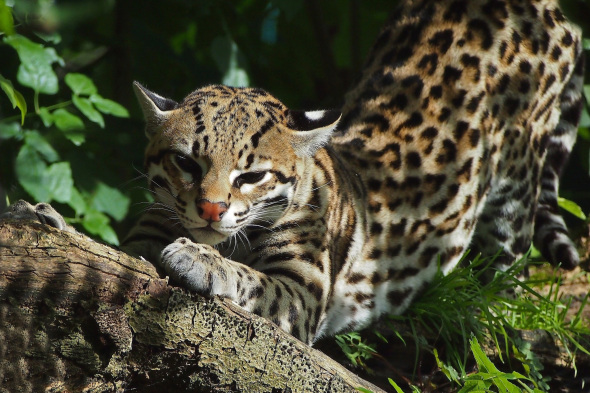
It is now thought that because the diet of the cat has remained the same for thousands of years, this may explain why the thirty six species of wildcats resemble each other so closely, with the exception of their size and the traits necessary for appropriate camouflage.(Picture above is Ocelot)
Cats have had no reason to change! Excellent hunters since the Lynx-like “Ur-cat” of the Miocene from whom the modern cats descend, the cats have had no need to adjust their bodies or their diets in response to major changes in the world’s climate. This is because the diets of the cats didn’t change. To a cat, a fish that eats algae, a bird that eats berries, and a giraffe that eats acacias are all meat for the hunting.
So while the glaciers came and went, while the vegetarians struggled to try and digest new plants and adapt themselves to overwhelming global changes, the cats simply kept on hunting, waiting to pounce on whatever managed to survive into the next epoch. It is the same limber body of the cat that hunted successfully in the Pliocene that hunts successfully today. - http://www.ucmp.berkeley.edu/tertiary/pliocene.php
WHY ARE THE NUMBERS OF FELIDS REDUCING?
- Illegal wildlife trade that mixes clothing with fake Asian medicine – Funding off illegal arms with regards to local and international civil war and terrorism. http://www.guardian.co.uk/environment/2012/dec/12/wildlife-trafficking-national-security-wwf
- Over hunting that’s not seeing the species rejuvenate in time. http://www.africanskyhunting.co.za/trophies/lion-hunting.html
- Habitual destruction/depletion of natural resources that wildcats rely on caused mainly from commercial and domestic construction and trade such as the manufacture of the palm oil plantations, over grazing, pollution, deforestation, over population of which the Planet Earth has some 800+ billion people that inhabits the earth with one child born every minute. http://uk.oneworld.net/article/view/166165/1/
- Human and species conflict which unfortunately see’s wild cats always come the worst off, slaughtered in the most extreme sickening ritualistic fashions, mostly by armed gangs seeking revenge for an attack on family and/or friends.
- Capture and breeding – We now have more Bengal Tigers in Chinese and Thailand zoo’s and temples that are being kept in the most appalling of conditions, then left to starve for the production of Tiger Bone Wine and now Lions are being slaughtered for counterfeit Tiger Bone Wine. Lions are mostly hunted then their bones are sent to Asia via the hunter that makes vast sums of return money. Whereas the Tiger as explained above is left to starve to death then their bodies are stripped from the bones and placed within a vat of Rice Wine which apparently in Chinese medicine cures many diseases, improves impotency, and now cures Human immunodeficiency virus which is complete and utter nonsense. Tiger Bone Wine like Rhinoceros horn doesn’t cure any illness, and never has, it is complete myth. http://mg.co.za/article/2012-07-04-sa-breeders-embrace-growing-asian-demand-for-lion-bones http://www.lionaid.org/blog/2012/09/concentration-camps-for-tigers-in-china.htm
- Hunting traps that poachers or illegal hunters have set for smaller animals or primates that are lain down near commercial land of their own accord or have been paid by palm plantations, or mine owners to keep roaming predators away from working areas. The innocent Tiger or Leopard then accidently roams into these areas that were once their homes just to have their leg caught in a snare/trap. The more they struggle the more the snare or metal trap tightens. It has been noted that some cats have been left for days if not weeks in these traps from which they are then slaughtered by the poacher/hunter or humanely euthanized by a rescue unit that gets to them first or are called by the forestry commission. http://www.eyesontheforest.or.id/?page=news&action=view&id=561
- Pollutions and poisons – This year already we have seen 1 Bengal Tiger that was poisoned found floating in a river. We are not sure of the outcome of this investigation as yet. It could be a silent poaching incident, deliberate poisons to keep Tigers and other big cats out of populated villages, or commercial poisoning that we are now seeing on a regular basis. This commercial poisoning was also linked although not yet proved to be the cause of death of over 16 Pygmy Elephants next to plantations that grow palm oil trees. http://edition.cnn.com/2013/01/31/world/asia/malaysia-pygmy-elephants - https://www.facebook.com/photo.php?fbid=565401643478744&set=a.400871756598401.99979.400620306623546&type=1&theater
The main losses to our wild cat populations are primarily due to poaching, illegal wildlife trade for fake Asian medicine that doesn’t cure any illnesses at all or increase sexual libido, Tiger/Lion bone wine trade, habitat fragmentation, and retributive killing which is seen more in India, Indonesia Thailand and Malaysia.
The cats wander into what was their own territory that results in possible attacks on human’s mostly causing serious injury or great fatalities. As there are no wildlife officers within many regions they cannot get to the scene fast enough to halt the vigilante gangs that then proceed to hunt the wild cat down. Sadly the wild cat is stoned, whipped with metal chains or sticks, or on one case this month trapped into a cage then set alight. The Leopard suffered horrendously taking some toe to five minutes to perish in excruciating agony. . One report here http://www.indianexpress.com/news/3-leopards-killed-in-4-days-no-arrests-yet/1085525/ quotes how a Leopard was “axed to death” with another here http://www.thesun.co.uk/sol/homepage/news/4652281/girl-killed-by-leopard.html that reports a child was snatched by a Leopard then mutilated, there are no other reports on this sickening yet concerning story.
SPECIES IN DANGER WORLDWIDE;
All species listed below are of concern to International Animal Rescue Foundation © and all other conservation societies. Red listings have been updated from various lists that have failed to update their classifications. We have as an organisation since contacted them to inform them of their update.
Africa – Lion (Panthera leo, - (Vulnerable as listed on the IUCN Red List)
Cheetah Acinonyx jubatus (Vulnerable as listed on the IUCN Red List)
Both species are currently under enormous threat not to mention that they are also still canned hunt which International Animal Rescue Foundation© is currently working to put an end too.
Panthera leo
The Lion (Panthera leo) numbers have dropped to as low as 32,000, down from nearly 100,000 just 50 years ago, the research is the most comprehensive assessment of lion numbers to date for December end.
(Extracted data) 2012
African savannahs are defined as those areas that receive between 300 and 1500 mm (approximately 11 to 59 inches) of rain annually. “These savannahs conjure up visions of vast open plains,” said Stuart Pimm, co-author of the paper who holds the Doris Duke Chair of Conservation at Duke University. “The reality is that from an original area a third larger than the continental United States, only 25% remains.” In comparison, 30% of the world’s original rain forests remain.
Lions in West Africa are at highest level of risk, researchers found. “The Lions in West Africa have suffered the greatest declines,” said Andrew Jacobson, another co-author from Duke. “Giving these Lions something of a fighting chance will require substantial increases in effort. The next 10 years are decisive for this region, not just for lions but for biodiversity, since Lions are indicators of ecosystem health.”
(End of Extract)-
Should the ecological systems that the Lion uses to hunt within, then be fragmentised even more, it will push the Lions prey that range from Kudu to Impala, Antelope and more away thus placing other species of animals in danger from lack of food and water sources.
The Lion and Cheetah requires these eco systems as they hunt using stealth tactics, and the grasses and high plains is what the female Lioness use as basic camouflage and safe haven to keep her cubs safe from other predators such as the Hyena, and wild dogs.
Should botanical ecosystems such as tree’s and grassland’s swamps, marshes and lowland scrub plants then come under threat from habitat destruction, pollution, and climatological destruction then the big cats prey and both Lion and Cheetah are forced to move on thus placing more areas in danger. The prey the Lion and Cheetah feed on could also become under immense threat thus causing eventually massive ecological catastrophic failure leading to one or more species pushed further into extinction.
Climate change and over population within Africa is now seriously playing a copious role with regards to the decrease in Lion species from which if no immediate and direct action is taken to sustain the species and environment then we could lose them in less than 10 years 2018 being the starting point of overall lion species decline.
Pseudo hunting, and the decreasing numbers of the world’s remaining Tiger populations in Russia and Asia is seeing the Lions exploited for fake medicine and counterfeit Tiger Bone wine. We now have on average within Africa a rough total of 32,000 Lions in the wild with numbers decreasing rapidly.
BRIEF TIGER BONE HISTORY;
As wild-tiger populations dwindle, poachers are now turning to Lions to feed the insatiable Chinese appetite for potions made from big-cat bones. The Lion is genetically similar to the Tiger and therefore Lion bone can be promoted as having similar healing properties.
The most infamous Tiger-breeding farm in China, Xiongsen Tiger & Bear Mountain Village in Guilin has bred many hundreds of Lions as well as Tigers with Tiger-bone wine openly on sale at the park. http://iheartchina.com/location/Xiongsen-Bear-and-Tiger-Mountain-Village - http://www.china-tour.cn/Guilin/The-Bear-and-Tiger-Village.htm
The endangered Asiatic Lion population in India is initially most at risk. In 2007, the Wildlife Protection Society of India (WPSI) raised the alarm that a new phase in wildlife poaching to meet Chinese demands could wipe out the world’s only Asiatic Lion population.
WPSI said: “This serious new development points to the fact that since Tigers are so scarce in the wild, these poachers are now targeting the last remaining population of Asiatic Lions. Gir’s Lions are an easy target, since they are comparatively used to people and live in open scrub forest.
Their bones are also virtually indistinguishable from those of Tigers. There is no market for big cat parts in India, and their poaching and the trade is entirely driven by demand from outside India’s borders, for use in traditional Chinese medicine’. - http://en.wikipedia.org/wiki/Asiatic_lion
Also in 2007, environmental photojournalist Debby Ng wrote in “Asia Magazine” that both Leopards and Lions are now used as common substitutes for Tiger bones.
As well as Asiatic Lions, this trade is threatening the already-declining African Lion population and demand for Lion bone may also be met by Lion farmers in South Africa.
In December 2009, the Department of Environment, Tourism and Economic Affairs, Free State Province approved the export of Lion bones from a captive-Lion-breeding facility. Please read the information below from www.cannedlion.org
“On Tuesday, 1st December 2009, the permit committee of the Department of Environment, Tourism and Economic Affairs, Free State Province decided to approve the permits for the exportation of Lion bones to one Cobus van der Westhuizen.
The Free State is one of the worst provinces in South Africa for captive Lion breeding. Lions are bred in South Africa in enclosures, just as a Pig farmer breeds Pigs in crates, for slaughter. The difference between raising Pigs and raising Lions is that the Lion abattoir has been turned into a lucrative ‘sport,’ colloquially called ‘canned Lion hunting.’ Various spin-offs from this grisly trade have already been successfully established, including cub-petting, walking with young lions, and the promotion in USA of Lion meat consumption which is still on-going.
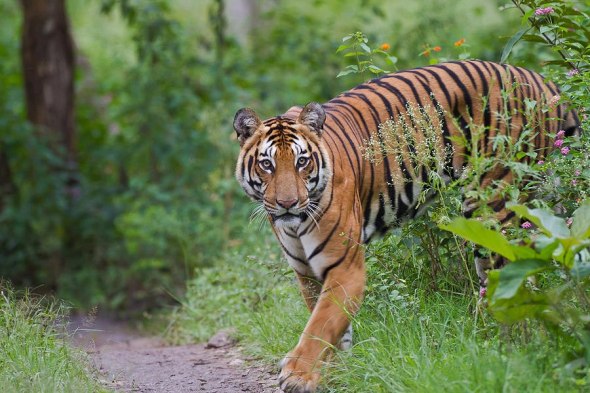
International Animal Rescue Foundation © is aware off seven cub petting and walking with African wildcats off which one has British and Dutch Links named as the Daniels Cheetah Foundation run and owned by Wild Cats World and one concealed British owner that we believe to have some form of operation in.(Picture above is the Bengal Tiger)
On challenging this owner 2012 August of which it was clearly evident that there was a colossal six breeding farms and abattoirs within the vicinity we was threatened along with others too that had made attempts to question the owners in Holland.
We have tried to warn the government and many other’s from which we would not off been made aware unless the general public that had visited, viewed and raised questions to then contacting ourselves and others of this situation. Canned hunters have been linked to the vicinity, however we have been refused to meet in person to even attacked verbally via email communications.
We have serious problems in SA regarding conservation of biodiversity, due partly to a well-orchestrated campaign against any civilized notion of animal welfare, and partly to dysfunctionality in many areas of conservation - especially in some provinces. Now, with the approval of the permit, our worst fears and imaginings have been realized.
The door to the huge market for “Tiger bone” in Asia has been opened. Furthermore, *the demand for free-ranging Lion bone is much higher than that for captive Lions* and we fear the worst for our African Lion populations. Big money is involved, and we all know what that means.
Should the remaining 1,500+ plus Wild Tigers be pushed to extinction then our Lion’s will most certainly be next. International Animal Rescue Foundation’s © Conservation Crimes team have noted many bones up for sale on African and European classified advertisement’s from which every single buyer is purchasing from the the nations of Thailand, Vietnam, China, ,Malaysia, Singapore, Indonesia, and again the United States to the even United Kingdom (London – China Town)
Cheetah - Acinonyx jubatus
The Cheetah species is within the same predicament as the Lion although there is no proof as of yet that they are being used for the making of Traditional Chinese Medicine as “yet” however the threat is still there should we lose our Tiger and even Lion species. We must also point that other species of Asian cats are being used for substituted Tiger Bone Wine then mislabelled as Tiger Bone Wine that in turn keeps the demand up.
“Illegal hunting within Africa, and India, to poaching all play a role within the decrease off populations off one of the world’s fastest land mammal”
Cheetahs are mostly hunted however we have noted within many road side seizures and arrests that Cheetahs are being used mainly in the production of Eastern European and Asian home decors, coats, rugs, carpets and upholstery to even “fur ornaments” that is seen within Europe as the new craze. This trend though is mostly confined to Russia, Poland, Czech Republic, Serbia, Kosovo, and Romania.
Hunters will obtain a permit to hunt of which they know that the skins in the black market and fur trade can actually fetch them depending on the size and age of the Cheetah up to $80,000 per skin. We ourselves have also noted on Russian EBay and classified advertisements some furs selling for up to $100,000. All sales are conducted from what appears to be a “shop on line” however on later investigations via meetings and Internet Protocol search the owners actually turn out to be hunters living in a house within Moscow.
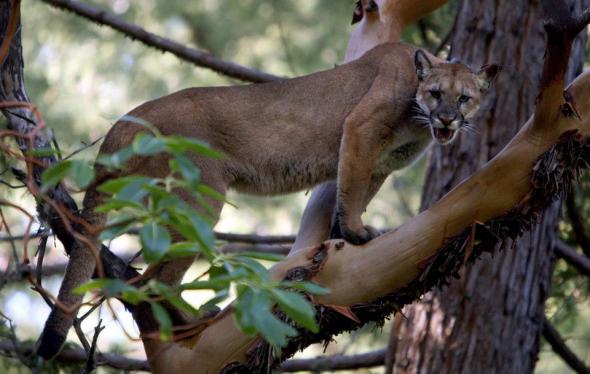
One site under investigation was a Russian site named as www.avito.ru that had a total of 4 Tiger skins on sale, Leopard, Zebra, and Giraffe, Lion and many illegal arms, to even Rocket Propelled Grenade Launchers. The site has since been ordered to remove and the traders arrested that had breached the Russian environmental and poaching laws. Law enforcement has also since become involved within Moscow based on our reports from January 2012 after investigating an [unnamed fur trader].(Picture above is the Borneo Bay Cat)
The hunter would normally pay in between $20,000 and $30,000 for a hunting holiday of which they know they can easily obtain a much higher revenue back on the taxidermist product itself, which is [unusual to see] from a finished dipped and shipped trophy however intelligent and supplicated criminals have the knowhow on removing then selling on which does concern us as the hunting trade is being exploited in all directions. We will continue to demand a moratorium on hunting investigating and analysing all avenues until it is drafted into place.
The problem is without adequate policing agencies to help in gathering this intelligence then sadly this will be a long drawn out battle that will see some of our wildcats and other larger mammalians pushed further to extinction.
“Poaching as explained above is on the increase and this again relays back to the European and American fur trade market”.
With the fur trade now taking off again and skins to rugs fetching enormous prices then sadly the poachers will continue to desolate our wild Cheetah species more, the imitation products [fake Leopard and Cheetah] skins are also increasing the [demand] for the real item that buyers quote “there’s nothing better than having top quality animal fur to keep you warm in the winter months”.
Cheetah cubs also have a high mortality rate that regrettably see’s mum lose two to three of her cubs from natural deaths, Lion or Hyena attacks. It has been suggested that the low genetic diversity of Cheetahs is a cause of poor sperm, birth defects, cramped teeth, curled tails, and bent limbs. Some biologists even believe that they are too inbred to flourish as a species
The species has been re-introduced back in to India as of the populations being desolated by hunting, illegal poaching, habitual destruction, and human species conflict. Cheetahs where currently extinct in India form the 1940’s however conservationists have pushed them into India that has seen some success although minimal.
It has also been suggested although again we have seen no current recent evidence of importing, that South Africa is importing Cheetahs into India, which is fair as long as they are introduced into well managed zones that are away from the general public, with efforts to combat poaching in these areas.
Leopard - Panthera pardus
The Leopard is currently listed as near threatened off which we do believe that should poaching, habitual destruction, pseudo hunting, illegal hunting, human species conflict and better park management not improve within the next ten to fifteen years then we could see the Leopard at critical point.
The Tiger species must be preserved and education to awareness within the fur trade must be paramount to demonstrate to buyers what carnage they are causing. Leopards are virtually solitary cats that are occasionally mistaken for the Cheetah.
Leopard species are located in Siberia, Russia, South Africa and Africa as a whole with some states seeing them extinct. Asia holds the current highest populations although both Africa and Indian critics quote different.
In 2008, the IUCN stated that leopards may soon move from a “Near Threatened” to “Vulnerable” status due to heavy hunting and poaching mainly for the commercial trade in Asia, persecution due to human-conflict situations, poorly managed legal trophy hunting, and habitat loss and fragmentation. Leopards are also persecuted in Africa by local tribes who use leopard skins for ceremonial dress and body parts for traditional uses.
African cats that are listed within the International Union for Conservation of Nature
- African Golden Cat - Profelis aurata – Near Threatened
- Black Footed Cat - Felis nigripes - Vulnerable
- Sand cat - Felis margarita – Near Threatened (located in mainly Asia although some species have been found in the African Sahara
- Lion – Panthera Leo – Vulnerable
- Cheetah - Acinonyx jubatus – Vulnerbale
All other remaining wildcats from the Serval to Caracal are of least concern on the IUCN list [however as explained this could change if we see the entire Tiger species wiped out].
North America big cats range from the Bob Cat, Puma, Canadian Lynx, Jaguar, Jaguarundi, and the Ocelot. Although we are not seeing a great decline the Jaguar is of the most important in this region of which there numbers are decreasing rapidly.
Panthera onca better known as the Jaguar is now near threatened of which we do believe is soon going to be moved up to vulnerable status for many reasons that I have listed below;
- Farms, ranches, mines, roads, towns, residential subdivisions and border infrastructure are increasingly being built in areas important to Jaguar survival, destroying Jaguar habitat and blocking migration routes.
- Human species conflict although rare in these dense forests where many plantations from Palm oil to Cocaine and Cannabis fields are grown, conflict still occurs. Most individuals in these areas carry hunting rifles or hand pistols that then take the cat down should conflict or intrusion occur.
- Palm oil plantations are a massive risk to the Jaguar as explained and should reduction in obsessive consumer demand not decrease or other alternatives be used, regrettably there will be a substantial decrease in numbers.
- Poaching is a major worry as usual with regards to the fur trade, and animal parts trade. The Jaguar is used mainly though for its skin as it brings in much illegal black market revenue. Native and non-native settlers that reside in the forest of Amazonia also hunt the Jaguar for bush meat.
- Their life span is crucial at such a small age from which they face many threats from snares, and the tropical pet trade.
Jaguars are the largest of South America’s big cats. They once roamed from the southern tip of South America’s continent north to the region surrounding the U.S.-Mexico border. Today significant numbers of Jaguars are found only in remote regions of South and Central America—particularly in the Amazon basin.
These beautiful and powerful beasts were prominent in ancient Native American cultures. In some traditions the Jaguar God of the Night was the formidable lord of the underworld. The name Jaguar is derived from the Native American word yaguar, which means “he who kills with one leap.”
Unlike many other cats, Jaguars do not avoid water, in fact, they are quite good swimmers. Rivers provide prey in the form of fish, Turtles, or Caimans—small, Alligator like animals. Jaguars also eat larger animals such as Deer, Peccaries, Capybaras, and Tapirs. They sometimes climb trees to prepare an ambush, killing their prey with one powerful bite.
Most Jaguars are tan or orange with distinctive black spots, dubbed “rosettes” because they are shaped like roses. Some jaguars are so dark they appear to be spotless, though their markings can be seen on closer inspection.
Jaguars live alone and define territories of many square miles by marking with their waste or clawing trees.
Females have litters of one to four cubs, which are blind and helpless at birth. The mother stays with them and defends them fiercely from any animal that may approach—even their own father. Young Jaguars learn to hunt by living with their mothers for two years or more.
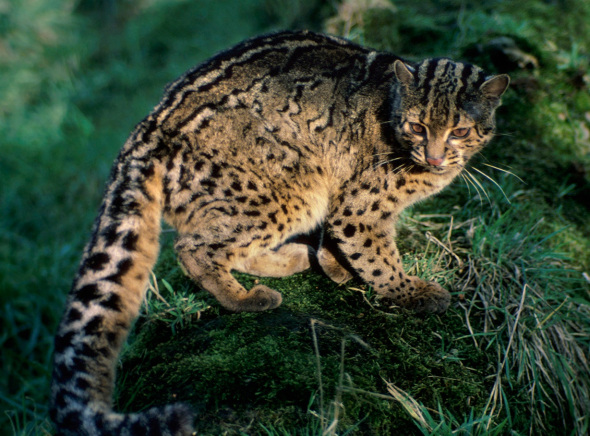
South America consists of ten species of wild cats that are native to both South and North America and are mostly confined to the regions of Amazonia. As listed on the International Union for the Conservation of Nature the three wild cats that are most at risk are the Jaguar as explained above that’s now moved from vulnerable status to endangered, the Andean Mountain Cat of which should no major conservation efforts be enforced then we will lose these cats in 1-5 years if that, and the Kodkod Leopardus guigna that’s listed as vulnerable that’s similar in appearance the Andean cat.
Andean Mountain Cat - Leopardus jacobita
There are now no fewer than 2000 of the Andean Mountain Cat left in the wild with very few in Zoological Gardens. The Andean Mountain Cat is nearing extinction rapidly and within our eyes it would be seen as professional to then take at least a half of these cats then place them in to protective captivity to push numbers up thus after releasing into a protective wild reserve increasing numbers more. Once numbers are within the thousand mark then a slow release into the wild must begin.
There are no known sub species although this still has to be ascertained as the Andean cat was only discovered by conservation biologists in the late 1980’s.
Threats that face the Andean Mountain Cat are listed below;
- Climate change is playing a huge factor in the reduction off numbers.
- Deforestation is making a huge impact on the desolation of numbers from which the Andean Mountain Cat lives within tall grass lands and areas that food is widely available, yet now rapidly decreasing. Illegal and sustainable logging is damaging the surrounding ecosystem thus reducing the numbers via starvation or taking much larger risks to obtain prey within its own predator’s areas. Viscachas and Chinchillas, small birds and even Lizards are all being pushed out of the Andean’s cat ecosphere which will eventually kill the species of.
- Tropical pet trade is also a player in this area as their likeness to the actual domestic cat, the female (Queen) as it is better known has very small kittens that can fetch anywhere in between $500 to $5000 on the black market.
- Species competiveness/conflict, within the Andes range, there are other species of my larger cat such as the Puma, Pampas cat, and Jaguar that all compete to survive and within such harsh environments that’s coupled with illegal logging, mining, agriculture and poaching competing to stay alive and being one of the most smallest out of the wild cats of which the Andean Mountain Cat is no larger than a domestic pedigree cat is difficult for them to live and survive in now cramped zones. The Andeans cat’s kittens are also small prey for the larger cat of which the Tom (male) will occasionally guard the kittens however this is not always the case and mom will/can lose up to 2-3 “kids” if not “all” from predators that are all hunting within the same areas. http://en.wikipedia.org/wiki/Andean_mountain_cat please read more regarding this cat within the link provided. Please also note that more has to be done to now conserve these very small and agile cats.
Kodkod - Leopardus guigna
The Kodkod is the smallest cat within the region of South America of which Argentina and Brazilian conservationists have numbered the cats population to be no higher than 7,000 now from which only three years ago there was an estimated 10,000 adult Kodkods in the wild.
Confined to mostly Chile and Argentina the Kodkod was listed in 2002 on the International Union for the Conservation of Nature (IUCN) as vulnerable.
Habitual destruction and loss of its own hunting prey from both poacher, deforestation, agriculture and persecution could see in the next three to five years should conservation efforts not be upgraded and the cat listed as critically endangered, then pushed extinction which is a sad fact of life now with most of our wildcats that are always under persecution from larger prey to humans. The Kodkod has no current sub species and is similar to pedigree feline.
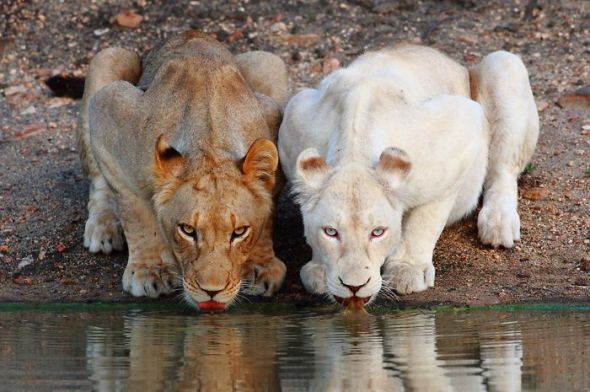
The Kodkod’s diet’s range from small rodents, birds, lizards, and occasionally they will hunt prey such as Geese and Chicken. The gestation period lasts about 72–78 days. The average litter size is one to three kittens. This species may live to be about 11 years old.(Picture above on the left is a Female Lioness the the right is an extremely rare White Lion that is formed by a mutant gene. - The White Lion is a rare colour mutation of the Kruger subspecies of lion (Panthera leo krugeri) found in some wildlife reserves in South Africa and in zoos around the world. White lions are not a separate subspecies and are thought to be indigenous to the Timbavati region of South Africa for centuries, although the earliest recorded sighting in this region was in 1938.
The main threats to the Kodkod I have listed below;
- Illegal and sustainable logging
- Agriculture
- The spread of Pine forest plantations from which its prey would not normally within
- Poaching is rare however there have been reports of the Kodkod for sale on the illegal black markets with regards to the illegal pet trade.
As with many of the small wild cat species within the Americas very little is known of the lifestyle of the kodkod. It is believed to be mainly a nocturnal hunter.
The cat is a forest dweller and is able to climb well. As with its lifestyle, little is known of the size of population of the kodkod, but loss of natural habitat due to forestry and logging activities, pose a constant threat. The kodkod is listed in CITES Appendix 2 and is protected in both Argentina and Chile.
Asia see’s many large and small cats that are listed on the CITES Appendix from being vulnerable to neat threatened and critically endangered. Within this section I have demonstrate as above only documentation on all “endangered” wildcats to those that are listed as vulnerable.
The following cats that reside and are native to Asia are listed below for your interest;
Please note that some of following cats that also reside in Africa and the Americas,that may also dwell in Asia too, and have different threat statuses.
- Asian Golden Cat Catopuma temmincki,
- Bornean Bay Cat Catopuma badia (vulnerable)
- Chinese Moutain Cat Felis bieti
- Clouded Leopard Neofelis nebulosa (vulnerable)
- Fishing Cat Prionailurus viverrinus
- Flat-headed Cat Prionailurus planiceps (vulnerable)
- Iriomote Cat iriomotensis viverrinus (endangered)
- Jungle Cat Felis chaus
- Leopard Panthera pardus (endangered)
- Leopard Cat Prionailurus bengalensis
- Lion Panthera Leo (Formally extinct in Asia within the WILD)
- Marbled Cat Pardofelis marmorata
- Pallas Cat Otocolobus manul
- Rusty-spotted Cat Prionailurus rubignosis
- Snow Leopard Uncia uncial (endangered)
- Tiger Panthera tigris (endangered)
- Wildcat (Asiatic) Felis silvestris
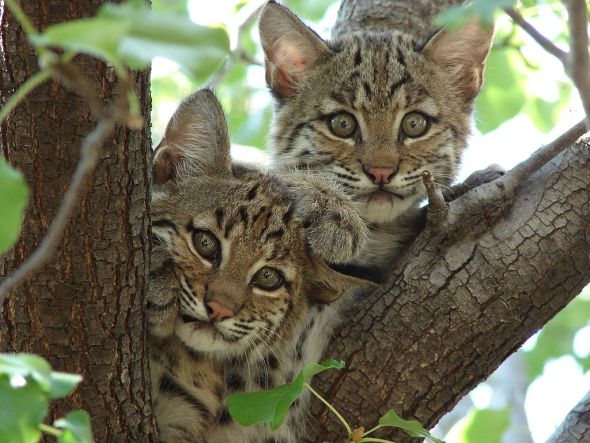
There are a total of eight wild cats within Asia that have been listed by CITES from vulnerable to endangered and regrettably critically endangered. I have highlighted each cat that’s current status I have also included along with threats and living behaviotr to ecology.(Picture above are Bobcat cubs)
- Bornean Bay Cat (Catopuma badia) now listed as endangered, in 2003 it’s reported that the Bornean Bay Cat had been completely wiped out. Fortunately in 2011 there were sightings of this very lucid and secretive Asian wild cat. The last pictures of the Bay Cat were taken in Lanjak Entimau wildlife sanctuary in southern Sarawak in 2003 and it had since been classified as extinct. Endemic to the island of Borneo there is a rough total of within the wild based on factual census that now range from 1,000 individuals however with poaching increasing these numbers have regrettably decreased and we no longer know for sure how many from the 1,000 are left within the wild from 2011 when all data was released after secret filming and documenting. The species was listed as endangered because of a projected population decline by more than 20% by 2020 due to habitat loss. As of 2007, the effective population size was suspected to be below 2,500 mature individuals. Current threats are mainly habitual destruction from deforestation, trappers and wildlife dealers. The Bay Cats diet ranges from small agricultural cattle, birds, and rodents.
- Clouded Leopard (Neofelis nebulosa) Listed as vulnerable, the Clouded Leopard is a felid found from the Himalayan foothills through mainland Southeast Asia into China, and has been classified as vulnerable in 2008 by IUCN. Its total population size is suspected to be fewer than 10,000 mature individuals, with a decreasing population trend and no single population numbering more than 1,000 adults. Current conservation threats of this most beautiful cat range from illegal logging that has regrettably decreased the forest size that it resides within. Large scale commercial poaching, skin/fur trade along with the Traditional Chinese Medicine trade that acquires the cat from its claws, teeth, meat and now worrying the Tiger bone wine trade of which the Clouded Leopard is sadly used as a substitute in the making of fake Tiger bone wine. The diet of the Clouded Leopard ranges from agricultural stock, Pheasants, rodents, and Deer. Clouded leopards also don’t appear to purr like the majority of cats. Hissing, grunting, snorting and moaning are very unique within this cat of which these vocalisations where observed in captivity and not the wild.
- Flat-headed Cat (Prionailurus planiceps) Listed endangered is a rare, little cat that is about 60 cm (2′) long and only weighs 2.2 kg (4.8 lbs.). The diet of the flat-headed cat includes fish, Frogs, crustaceans and rodents. You will notice that the majority of their diet lives around water. This is why you will always find the furry, flat-headed cat around lakes and streams. The appearance of this cat would make you question whether it truly is a cat since it has short legs, a long head with tiny ears and a short tail. They have often been compared to muskrats and otters instead of other cats. The differences continue to pile up for the flat-headed cat since their toes tend to be webbed and they are one of the few cat species with non-retractile claws. Well, I guess that isn’t entirely true since their claws do retract, however, the sheath covering is so short that two-thirds of the nail remain exposed. The flat headed cat’s threats are primarily threatened by wetland and lowland forest destruction and degradation. The main causes of such destruction are human settlement within the areas that they are native within, pollution and drainage for agriculture, and yet again the palm oil trade of which forest transformation effects every living species from cat to bird, rodents to incest’s. The clearing of mangroves, trapping and poising have reduced the levels of this cat down to 2000 maximum in the wild with 1% of them in captivity.
- Iriomote Cat (Iriomotensis viverrinus) Critically endangered, Located in Japan Iriomote Cats are small cats with a body length between 48 and 56cms (18.9 - 22 inches), a tail length between 16 and 45cms (6.3 - 17.7 inches) and they weigh between 3 and 7kgs (6.6 - 15.4 lbs.). Their current conservation status is endangered of which there are no more than 2,000 in the wild [if that]. The Iriomote diet normally consists off small mammals, such as birds, reptiles, amphibians, insects and occasionally fish. Current threats are habitat loss and persecution from humans. Normally living for only 8-9 years old there are literally a bare 200 in the wild up from 2007 of which saw only 100-110 before the last census [if that] so conservation within this area is slowly improving, however we do believe that we are going to lose this most amazing cat unless conservation protection is practiced.
- Leopard (Panthera pardus), Endangered (Please note that the Leopard is also present in Africa) of which professionally trained conservation teams including ourselves International Animal Rescue Foundation © are trying to preserve its [Near Threatened] status. Leopards are currently now endangered in Asia. Compared to other members of the Felidae family, the leopard has relatively short legs and a long body with a large skull. It is similar in appearance to the jaguar, but is smaller and more slightly built. Its fur is marked with rosettes similar to those of the jaguar, but the leopard’s rosettes are smaller and more densely packed, and do not usually have central spots as the jaguars do. Both leopards and Jaguars that are melanistic are known as black panthers. Diet normally consists of Antelope, Kudu, dead stock and agricultural stock too. They are an avid hunter being “one of” but not the fastest land running mammal in the world. The Leopard is a versatile hunter and generally nocturnal in its pursuit of prey - however the increased frequency of hunting found in the female [raising young] often leads to more opportunistic hunting during daylight hours. The type of prey taken by the Leopard is again dependant largely upon its locale - in the open grasslands of Africa where roaming herds of large to medium sized herbivores are common the Leopard will take young Eland and Wildebeest, Impala and Gazelle. However in the same areas the Leopard will also take small mammals such as Hares and Rock hyrax, reptiles and insects. In contrast, in the west and central forested regions of Africa the Leopards prey consists mainly of the smaller antelope such as Duiker, small Monkeys and various rodents such as Rats, Squirrels and Porcupines. The Leopard is currently living in 25 locations internationally that are located mainly from United Arab Emirates, China, Nepal, Africa and many more. Although the Leopard has had greater survival success across the African/Asian range compared with the Cheetah and Lion, who now only exist in single locations within this extended range, the Leopard, especially in the Middle East and South West Asia is under extreme threat. The Leopard is listed in CITES Appendix 1. Their numbers are dwindling in Asia due to human species conflict, skin/fur trade, fake Tiger Bone Wine trade (used primarily as a substitute) Traditional Chinese and Indian Medicine trade too.
- Lion (Panthera Leo) EXTINCT There are very few Lions in Asia and what Lions there are they are mostly if not all confined to zoos for eye entertainment or as explained with the Leopard and Tiger (Panthera tigris) they are subsequently starved to death within large sprawling zoo’s that China tries to keep secret. The Lions bones and/or skeleton is harvested then placed into a vat of rice wine. There are currently NO Lions in the wild within Asia that we are aware off.
- Snow Leopard (Uncia uncial) Listed as endangered although sharing its name with the common leopard, the snow leopard is not believed to be closely related to the Leopard or the other members of the Pantherine group and is classified as the sole member of the genus Uncia uncia. Due to the under-development of the fibro-elastic tissue that forms part of the vocal apparatus the Snow Leopard cannot give a full, deep roar and this along with differences in skull characteristics help to separate it from its fellow ‘big cats’. Locating the this stunning and majestic cat can take weeks if not months and can easily camouflage itself out witting its prey to performing some of the most daring cliff face jumps just to obtain its prey. The Snow Leopard lives to an average age of 15-20 years. Current environmental threats are poaching for fur and skin trade, animal parts trade, Traditional Chinese and Indian Medicine, hunting to protect agricultural livestock that has now been pushed into its own predatory hunting grounds, habitat depletion, and human species conflict although rare its happening. A recent study by the World Conservation Society W.C.S revealed that the Snow Leopard is in high danger of extinction within the mountainous regions of Asia from Afghanistan and Iraq. The study indicated that many Snow Leopard parts had been purchased by American and European soldiers that where being sold on the base camps from Afghan vendors that then consequently funds the illegal armoury trade and illicit narcotics trade. The Wildlife Conservation Society though have acted upon this and are now implementing new strategies and improved education to reduce illegal purchasing within the markets of Afghanistan and base camps. However wildlife trade is still being sold and is still on display in the local markets, if the vendor obtains high profit and sales or [want for more from the customer] this then increases the extinction rate rapidly through more illegal poaching. There are roughly 2,000- 2,800 Snow Leopards in the wild with 800 located in international Zoological Gardens. The Snow Leopard generally inhabits elevations between 2000-4000 meters although it can occasionally be found at lower altitudes to the north of its range and as high as 5500 meters in Himalayan regions. The cat is generally associated with generally rocky terrain such as high valley ridges, rocky outcrops and mountain passes. As summer gives way to winter, the snow leopard will follow its migrating prey down below the tree line to the lowland forests that cover much of its habitat – however the cat is rarely associated with dense forestation.
- Tiger (Panthera tigris) Endangered The male Siberian or Amur Tiger/Bengal/Sumatran, has a total body length in excess of 10 ft. and weighing up to 300 kg is by far the largest and most powerful member of the cat family. - However overall body size varies considerably throughout the five sub-species - the female Sumatran being almost 3 ft. smaller. With exception of the Lion the tiger is probably the most easily recognised of all wild cats - its fur which ranges from orange to brownish yellow with a white chest and belly is covered with broken vertical black/dark brown stripes. The length of the fur is longer in the Amur Tiger which inhabits the colder forested regions of eastern Russia and northern China. However, seasonal variation occurs throughout the species, with the winter markings often being paler and less well defined in the longer winter coat. Males of all sub-species also exhibit longer fur in the form of a ‘ruff’ around the back of the head, this is especially pronounced in the Sumatran male. In general the Tiger is a forest dweller but can also be found in grass land and swamp margins beyond woodland areas. They are never far from a source of water, are strong swimmers and have a particular love of bathing in pools and lakes in hotter regions. Principally, Tigers are nocturnal hunters although in protected areas away from human intervention the animal is often active during the day. Although habitat dictates the type of animal that it hunts, the Tiger prefers larger prey, such as wild Boar, Buffalo and Deer, but also hunts fish, Monkeys and various small mammals if its preferred food source is unavailable. The Tiger is often regarded as a cautious hunter, stalking as close as it can to the rear of its prey before making the final charge. Depending on the size of its prey the Tigers killing bite is usually to the throat or neck of its victim - with smaller animals a bite to the neck is often sufficient to sever the spinal cord, whilst with larger prey the throat bite is preferred, gripping the animal until it finally suffocates. As in common with many cats the Tiger will cache its food supply, hiding it under loose vegetation, returning to feed on the carcass over several days. Although, with the exception of mother and cubs learning to hunt, it is generally a solitary hunter the Tiger will often share its food with others of its family group. The Tiger more than any of the ‘big cats’ has earned a reputation of a ‘man-eater’. In the Sundarbans Reserve in the swamp lands along the coast of the Bay of Bengal it has been reported that tigers have attacked fishermen in their boats - however such unprovoked attacks are rare. Confrontation mainly occurs when humans stray into reserved areas to collect firewood or food and here, more often than not, it is by old or injured Tigers unable to compete for normal prey sources. Until recently, when the study of Tigers in their natural habitat has increased due to the establishment of protected reserves, little has been known of the life style of the animal. However today we know much more of the Tigers daily routine and social activities. Although in many ways a solitary animal, patrolling and marking its territory with urine sprays and scrapes the male Tiger will often spend time with its mate and offspring. The male’s territory usually encompasses that of more than one female and is rigorously protected against intrusion from other neighbouring males. The typical litter is between 2 to 3 cubs, which are born some 3 to 4 months after mating. The young Tigers will stay with their mothers in a family group for up to two years, learning the skills of hunting before separating to take up their independence. Young males may travel far, living a solitary life before establishing their own territory, often by ousting older or injured males. On the other hand young females often stay close to their mother and in some cases even share parts of her territory. Although popular in some zoos, ‘White Bengal Tigers’ are extremely rare in the wild - the last sighting of a white tiger in its natural habitat was near Rewa in Central India back in 1951. This male Tiger was captured by the Maharaja of Rewa and named Mohan - it is this animal that most of the white Tigers in captivity today are related. The white Tiger is not a true albino - it simply has less dark coloured pigment in its coat - this is sometime known as a ‘chinchilla’ mutation. The white Tiger is not pure white but has brown stripes and blue eyes. There is some concern about the keeping of white Tigers in zoos. These cats are by nature, extremely inbred and possibly not of pure bred Indian descent. Some suggest that they are taking up valuable cage space and breeding resources and this is to the detriment of other pure bred and more threatened sub species. The current environmental status of all Tiger species from the January 1996 stood at between 4,800 to 7,300 there is now more Tigers in Chinese captive breeding facilities than there is in the wild, and the populations within the wild stand now at a depressing 1,300 if that with 20 dead for 2013 to date March 2013.
The total number of Tigers from the year of 1996 stood at;
- Bengal Indian 4735
- Siberian Tiger 230
- South China Tiger 30
- Sumatran Tiger 500
- Indo-Chinese Tiger 1790
The sad reality with regards to the Tiger is we are losing the conservation battle against the illegal animal parts trade, and from recent submitted reports that we acquired from reputable conservation teams, we are lead to believe that the Tiger we may lose unfortunately unless action is implemented quickly and aggressively. The palm oil trade within Indonesia and Malaysia is also playing a crucial role in the destruction of these amazing million year old cats. The Ramin tree that the Sumatran’s live within has been illegally logged time again even though it is classified as endangered and must not be felled, logging agencies and plantation owners continue to flout the rules placing the Sumatran Tigers habitat in greater risk.
United Arab Emirates, Middle Eastern Asian nations and Europe compromise the following wildcats of which I have only documented on the individuals status as listed on the I.U.C.N list below this picture. Documentation on the Leopard Panthera pardus is listed above.

- Eurasian Lynx Lynxs lynx
- European Wildcat Felis silvestris
- Jungle Cat Felis chaus
- Leopard Panthera pardus (endangered)
- Sand Cat Felis margarita (near threatened)
- Spanish Lynx Lynx pardinus (critically endangered) - Picture above is the Jaguar - Amazonia
- Sand cat (Felis margarita) is listed as near threatened from which populations of this particular cat are actually still quite dense and with birth rates exceptionally high at 4-5 Kittens coupled with the where the cats breed they are still not really as yet in any near danger of being moved to vulnerable status. Known as the sand dune cat, is the only felid found primarily in true desert, and has a wide but apparently distinct distribution through the deserts of northern Africa and southwest and central Asia. The IUCN listed the cat as near threatened due to mostly the tropical pet trade and one can see why as they are an exquisite felid with such splendid colourings, and facial features that customers will pay up to $5000 for each on the black market. Habitat degradation is the major threat to the sand cat. Vulnerable arid ecosystems are being rapidly degraded by human settlement and activity, especially livestock grazing. The sand cat’s small-mammal prey-base depends on having adequate vegetation, which may experience large fluctuations due to drought, or declines due to desertification and loss of natural vegetation. They also may be killed in traps laid out by inhabitants of oases targeting foxes and jackals or in retaliation for killing their chickens. There are occasional reports of animals shot in south-east Arabia. Other localized threats include the introduction of feral and domestic dogs and cats, creating direct competition and through predation and disease transmission. The sand cat is the only wild cat that is not threatened with loss of habitat since it is found in the desert. But this species is threatened by hunting and collection for the pet trade. Some are killed by humans who consider them a threat to their livestock. Because sand cats live in such vast, desert locations, they are hard to study and keep track off, and population estimates are not available to date for 2012-2013.
- Spanish Lynx (Lynx pardinus) Listed as critically endangered, more commonly known as the Iberian lynx the species was mentioned in this month’s CoP 16th meetings in Bangkok Thailand from which we and other conservationists believe that we may lose this amazing specimen of wildcat. Native to the Iberian Peninsula in Southern Europe it is the most endangered species off wildcat in the world. Should the Spanish Lynx die out it would be the first felid species to become extinct since prehistoric times. The lynx is a solitary cat that haunts the remote northern forests of North America, Europe, and Asia. Lynx are covered with beautiful thick fur that keeps them warm during frigid winters. Their large paws are also furry and hit the ground with a spreading toe motion that makes them function as natural snowshoes. These stealthy cats avoid humans and hunt at night, so they are rarely seen. There are several species of lynx. Few survive in Europe but those that do, like their Asian relatives, are typically larger than their North American counterpart, the Canadian Lynx. All Lynx are skilled hunters that make use of great hearing (the tufts on their ears are a hearing aid) and eyesight so strong that a Lynx can spot a mouse 250 feet (75 meters) away. Canada Lynx eat mice, squirrels, and birds, but prefer the snowshoe hare. The Lynx are so dependent on this prey that their populations fluctuate with a periodic plunge in snowshoe hare numbers that occurs about every ten years. Bigger Eurasian Lynx hunt Deer and other larger prey in addition to small animals. Lynx mate in early spring or late winter. About two months later, females give birth to a litter of one to four young. Humans sometimes hunt Lynx for their beautiful fur. One endangered population, the Iberian lynx, struggles to survive in the mountains of Spain, far from the cold northern forests where most lynx live.
We are going to see a vast decline within the wildcat species unless immediate conservation actions are not stepped up and all nations responsible for poaching “incidents” now start to tackle these poachers with stringent punishment, fines, and stiffer prison sentences. Poaching, and the animal parts trade is and will always be the number one threat to our wildcat species plus the barbaric and completely senseless fur trade that’s gaining more momentum by the month.
Tropical pet trade, illegal logging, mining and the palm oil trade are all adding up to conservation stock depletion plus the massive over population of the human race that now stands at over eight billion people worldwide. It’s a sad fact of life that should we not start to reuse, reduce, and recycle then we are sadly only contributing to more trees being felled for the products that we could off reused and other products purchased on the high streets done without. The illegal logging trade and mining increases poaching from open road ways and places more animals at risk from the live illegal pet trade.
Mining and agriculture are also causing catastrophic habitat loss with now oil drilling threating thousands of species off plant and animal to aquatic and reptilians.
We have only one chance in life to save these most precious and majestic magical cats that are still residing upon Planet Earth, one must now also start gearing up and working harder to preserve the Lion and the Tiger with the Tiger being at the forefront of the Lions preservation. Should we see all 1,000+ Tigers vaporised for counterfeit medicines, balms, and bone wine, to bush meat then we will most certainly lose the Lion and the Tiger within a ten years.
We and all other conservationists require your immediate help to make aware the plight of the suffering and nearing of extinction these cats are facing with immediate action taken now rather than later. We have not got time to wait for the next CoP17 summit and based on the meetings so far we and others are going to be gearing up for more battles with regards to the Rhinoceros, Elephant, and many other species.
To report a poaching incident and or major animal abuse please contact us below
[email protected] or alternatively you can contact us for more information at [email protected]
Thank you for reading
Dr J C Dimetri V.M.D, B.E.S, Ma, PhD, MEnvSc
Director
Delegated Rescue Corps & Administrative staff
International Animal Rescue foundation
www.international-animalrescue-foundation.org.uk
Environmentalism - Chapter 26 Drought in America
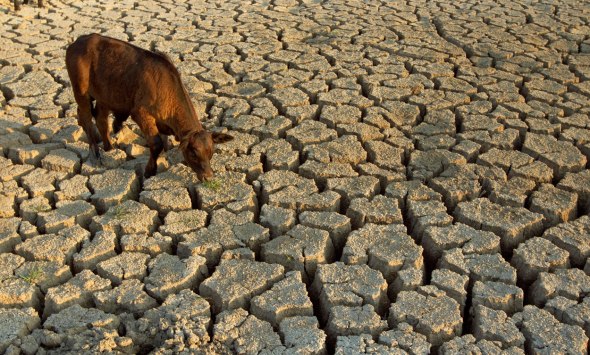
One would believe that with all the recent destructive weather patterns and heavy rain fall in the United States that the rivers would be over flowing to almost flood level. Little did we know that this is not the case and should there not be an increase in rainfall soon to replenish the local state rivers and reservoirs to lakes in the centre state of the United States then we are going to be looking at quite a few problems on our hands with displaced biodiversity, botanical species vanishing, insects moving out of the area thus placing a strain on crops that depend on them, and aquatic species of river fish gone, to agricultural animals dead from severe dehydration.
From 2009-2011 the United States as documented last month was severely hit by a multitude of weather fronts bringing in flooding, typhoons, hurricanes, tropical storms, and heavy transpiration however in 2011 and then 2012 the summers where intense causing colossal crop and agricultural damage, lowering rivers and reservoirs, placing the nation in to now a water shortage crisis of which droughts have been declared over almost half of the United States. Alaska is fairly untouched by the droughts with only 1% of the Alaska actually affected of which the drought [water shortage] is expected to persist or intensify.
Hawaii has not been left untouched either and is like most parts of the United States under a drought “even in the winter”. Mainly on the west coast the droughts are likely to persist or intensify that’s causing some alarm now with agriculturists and cattle farmers, to home owners, river watch schemes, importers and exporters that use the lakes and rivers to move stock across.
Conservationists and climatologists from International Animal Rescue Foundation © have been monitoring the situation along with meteorologists and animal welfare of which the river levels have not changed in western America for the past 12 months and are unlikely to change until we see heavy but prolonged rainfall over a large time frame.
From the 7th February 2013 to the April 2013 the following areas that I have briefly listed below are on drought watch based on up to date accurate weather and river level recordings from the United States government, and local non-related conservation teams.
- Florida needs to now be on alert for droughts that are likely to occur with the entire state of Florida now on yellow watch. The very tip of Florida near Miami and the Everglades National Park has been noted that droughts in this region are likely to intensify and persist.
- Georgia and South Carolina are on red watch with droughts likely to persist and severely intensify, with no reports of real concern in North Carolina.
- Atlanta is on orange watch with droughts on-going although some are likely to [improve] over a set time it is still unclear when.
- Charlotte though is looking fairly clear and green with drought likely to improve with impacting damaging easing considerably even though it is next to a relatively drought hit area.
- Alabama is on orange watch with droughts on-going however there is likelihood of some improvement in the area.
- From the tip of Louisiana to the tip of New York the entire states between this safe-line are “fairly unaffected with only Florida now on severe drought watch [and that needs to be taken seriously]
- However moving west we see the real problems, with the entire west states of America stretching from Texas to New Mexico, Oklahoma and South Dakota all on major red watch with rivers running rapidly dry.
- Wisconsin and North Dakota are lush and green with droughts improving and impacting drought damage decreasing by the month. Lake Michigan is “satisfactory” although we would like to see more rain fall in this area, sadly we are not god and cannot make that happen.
- The Rio Grande is exceptionally worrying to us as like Florida as that is now on imminent drought watch with drought expected to hit at any time with no predictions of when or how long such drought will persist, International Animal Rescue Foundation advises all agriculturalists in this area to arrange other forms of transport and not use barges to transport goods, and to improve on land irrigation, mulching and water retention as and when it occurs.
- The entire state of New Mexico is classed now as a serious area of watch with droughts are likely to persist and/or intensify dramatically.
- Idaho – Washington and Montana are “fairly ok” although this area is not of concern we are monitoring San Francisco, California, Los Angeles, and San Diego that are now like Florida and Rio Grande on yellow watch with droughts likely to develop. We ask all agriculturist’s in these states to be prepared, seek alternative road transport and not river barge transport, monitor your local river levels and if you can rain fall too. Please ensure that irrigation is working and not blocked. We have now left these areas however we would like to view your readings for future predictions. Please email our international conservation investigation team here - [email protected]
State tension – Rivers on watch;
- CATAWBA RIVER – South Carolina vs. North Carolina river concerns are growing that North Carolina proposed hydropower plant on the Catawba River would reduce flow and harm water quality and wildlife. Neighbouring South Carolina objected to this. The US Supreme Court ruled in South Carolinas favour in 2009, blocking construction of the plant.
- LAKE MICHIGAN – States bordering the great lakes have drawn up a legal contract to share the water that feeds the lake. Now the city of Waukesha in Wisconsin wants to divert more water to its supply, citing drought. Should that application get the go ahead, and to many other cites follow suit tensions are likely to mount.
- RIO GRANDE – Texas and New Mexico are in dispute over their shares of water into the Rio Grande, governed by an agreement dating back from 1938. The Lone Star state, which is downstream from New Mexico, has asked the Supreme Court to intervene.
- Missouri and Mississippi Rivers – The shipping industry wants congress to order the release of more water from the Missouri river into the Mississippi, to keep to keep navigation channels open in the face of drought. That could trigger lawsuits from upstream states including North and South Dakota, which rely on high water levels in the Missouri for agriculture.
- RED RIVER- The Supreme Court from the Tarrant Regional Water District in Northern Texas, which wants Oklahoma to supply it with water from tributaries that flow into the Red River, on the border between the two states. Success for Texas could spark further law suits between neighbouring states.
- CHATTAHOOCHEE RIVER – Atlanta’s ever increasing demands for water from the Chattahoochee river in Georgia have angered downstream Florida and Alabama, since 1990, there have been multiple lawsuits. Currently, the US Army Corps of Engineers is studying how best to allocate water among the three states.
Within the news recently it was reported that blizzards have hit the north east, however across much of the country the most widespread drought in more than half a century is still biting with the water ways being the most badly hit.
Lake Michigan and Huron hit their lowest levels on record, with the US Corps of Engineers dredging the Mississippi and blasting away rock formations on the river bed to maintain the three metre depth that barges need to ferry exports to the coast.
Growing urban water demands have long clashed with the needs of agricultural and navigation, and climate change is expected to increase the tension causing wilder swings between drought and flood even in regions that may not get drier overall. It’s predicted that water shortages are going to intensify unless climate change is dealt with on an erratic bur controlled basis and more people in the United States cut their carbon emissions down drastically and immediately.
How is this effecting wildlife though?
In a statement issued April 2012 by the Missouri State it quoted the following;
PLEASE NOTE INTERNATIONAL ANIMAL RESCUE FOUNDATION © DOES NOT SUPPORT CERTAIN VIEWS AND COMMENTS IN THIS REPORT THAT ARE NOT BASED ON UP TO DATE BIODIVERSITY SCIENCE AND WATER WAYS MANAGEMENT/CONTROL. THE VIEWS ARE BASED ON THE NARRATOR AND DO NOT UNDER ANY CIRCUMSTANCES REFLECT WHAT OUR OWN SCIENTISTS VIEW AND WORK ON DAILY.
Everything from trees to fish are feeling the pinch of heat and drought, and the Missouri Department of Conservation (MDC) is tracking the effects of extreme summer weather and doing what it can to help people and nature.
The period from January through June was the hottest on record nationally. June was the sixth-driest on record in Missouri. The Show-Me State’s last rainfall of state wide significance fell on May 7. Meanwhile, extreme heat, wind and unusually low humidity have sapped what little moisture once existed in the state’s soil.
One-hundred degree-plus temperatures began in June and lingered into August. In July alone, temperatures topped 100 degrees on 15 days in central Missouri.
As of July 24 2012, the National Climate Data showed the entire state of Missouri as being in at least severe drought. More than two-thirds of the state was in extreme drought, and the Bootheel and adjacent counties were in an exceptional drought, the most severe classification recognized by the National Climatic Data Centre.
The National Weather Service’s long-range forecast is for drought conditions to persist or intensify across Missouri. No significant increase in precipitation is anticipated before October.
FORESTS
Missouri forests were stressed by several factors even before the drought set in. Most of the state suffered a severe, late freeze in 2007, killing flower and leaf buds on many trees. Multiple ice storms that same year wrecked hundreds of thousands of trees over large swaths of Missouri, and a freak windstorm, known as a derecho, flattened trees across parts of the eastern Ozarks in 2009.
The period from 2008 to 2010 set records for rainfall. Then, in 2011, the weather abruptly turned hot and dry, a trend that has worsened this year. Forests in south eastern and south western Missouri are hardest hit by drought, but trees are suffering state wide.
As if weather challenges weren’t enough, Missouri witnessed the emergence of a brood of periodical cicadas that covered most of the state in 2011, followed by an outbreak of jumping oak gall wasps and defoliating insects.
Nick Kuhn quoted;
“All in all, it has been an extremely tough five years for Missouri forests,” says Forestry Field Programs Supervisor Nick Kuhn. “While it is still too early to know exactly how severe the effects will be, we expect to see some reduction in acorn and nut production. That could be a concern for animals that depend on acorns and other nuts for food, and for Missouri’s nut industry.”
Kuhn says many trees are dropping their leaves early to cope with the heat and drought. Shedding leaves reduces the amount of water trees lose through evaporation, helping them survive. However some trees will succumb to drought.
Kuhn says the drought will be hardest on old trees and those already weakened by disease or parasites. Trees growing on west- and south-facing slopes will face greater drought challenges, as will trees that are crowded or poorly adapted to the sites where they are growing. The drought underscores the importance of proper forest management and working with a professional forest to properly manage forests.

Drought’s in the U.S.A attributed to many cattle losing dying, pic from 2011
Gillespie Livestock Company in Fredericksburg
“Landowners can help their forests be more resilient to insect and drought stresses through proper management,” says MDC Forest Products Program Supervisor Jason Jensen. “Forests need management much the same as a garden or any other crop. When left unmanaged, forests become overcrowded. Trees all compete for water, nutrients and sunlight. When there are too many trees competing for these limited resources, the trees will become stressed and won’t be as healthy and productive as a managed forest. Trees in well-managed forests grow faster and provide better wildlife habitat.”
HOWEVER -
For landowners who are interested in managing their forest or are seeing trees that have died as a result of the drought, a timber sale may be in order. Landowners should seek the assistance of a professional forester when considering a timber sale. MDC has foresters available to assist landowners. To find a forester in your county go to http://www.mdc.mo.gov and select “Who’s My Local Contact.” Private consulting foresters are also available to assist landowners. To find a consulting forester in your area go to http://www.missouriforesters.com.
The on-going drought also has heightened wildfire danger. Unlike western states, Missouri’s primary wildfire season is late winter. Once trees leaf out, the shade they provide causes humidity levels on the forest floor to increase, reducing fire danger. This year is an exception. MDC saw a 150-percent increase in the number of reported fires from May through June. This does not include fires on the 1.5-million acre Mark Twain National Forest. Since Jan. 1, MDC has recorded 2,280 fires affecting 26,944 acres. Those fires destroyed 15 homes and l51 outbuildings and damaged 331 other structures.
Causes of these fires included:
- Debris Burning – 794 fires consuming 4,942 acres
- Equipment Use – 154 fires consuming 1,937 acres
- Arson – 117 fires consuming 4,470 acres
- Smoking – 49 fires consuming 189 acres
- Campfire – 34 fires consuming 82 acres
- Children – 34 fires consuming 83 acres
- Lightning – 23 fires consuming 75 acres
- Railroad – 7 fires consuming 38 acres
- Miscellaneous causes – 1,068 fires consuming 15,129 acres
Compared to a normal year, total burned acreage has tripled. MDC normally sends crews to help fight fires in the western United States, but this year the agency’s entire force of 754 fire fighters is at home, responding to calls for help from local fire departments.
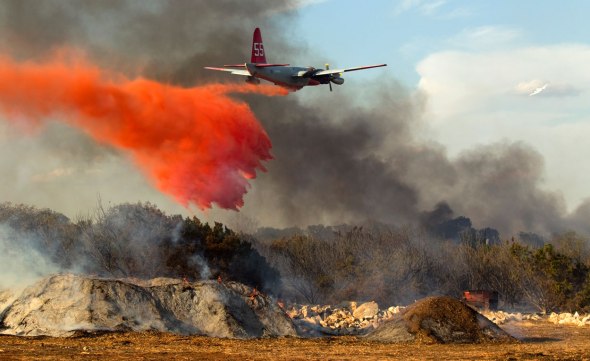
A plane dumps fire retardant on a 30-acre grass fire in Leander on Monday, August 15, 2011.
The blaze destroyed 15 homes displacing many people and cattle.
MDC has mutual aid agreements with more than 800 fire departments and has assigned approximately $70 million in federal excess property equipment to these partners for wildfire suppression. MDC also provides training to volunteer firefighters and awards an average of $400,000 in cost-share grants annually to fire departments to purchase wild-land fire suppression equipment.
Burn bans across most of the state discourage trash burning or any other open fire. MDC has banned open fires on all conservation areas.
“Everyone needs to be extra careful when working or playing outside,” says Forestry Field Programs Supervisor Ben Webster. “It doesn’t take much to start a wildfire.”
At home and on the farm, barbecue grills should not be left unattended. Exercise extreme caution when using farm machinery, mowers or other equipment that could strike a spark or put hot engine parts in contact with dry vegetation. This includes driving vehicles off road. Smokers are urged to put cigarette butts in ashtrays rather than discarding them along roadways. Homeowners should visit http://www.mdc.mo.gov/node/5290 and use the Firewise checklist there to ensure that you can protect your property from wildfire.
WILDLIFE
Native wildlife is well-adapted to the range of conditions that can occur in Missouri. That does not mean, however, that weather does not affect animals, which may have to alter normal behaviour patterns to meet their needs for food, water and shelter.
An example of such behavioural changes came to light recently when Resource Scientist Jeff Beringer attached a video camera to the radio collar he placed on a black bear. When he retrieved the camera and watched the video, he discovered that the bear had spent pretty much all its time walking through the water in a small stream.
Resource Scientist Jeff Briggler’s primary area of expertise is reptiles and amphibians, but he offers a general observation about how current weather could affect human interaction with wildlife.
“Wild animals need water, which is extremely scarce right now,” says Briggler. “People have plenty of water, and watered lawns and gardens, birdbaths, even air-conditioners that drip water are very attractive to all kinds of wildlife.”
Briggler says people shouldn’t be surprised to find squirrels munching their tomatoes or box turtles and frogs around backyard water features. Similarly, cool basements may attract animals trying to escape the heat.
“If an animal can’t get far enough underground to get away from the heat and find moisture in their normal home area, they have to look for someplace they can,” says Briggler.
Deer are traveling farther than usual for this time of year and moving during times of day when they ordinarily would be inactive. Aquatic turtles must move or die when ponds or streams where they live dry up. On the other hand, smaller, less mobile animals, such as frogs, often take the opposite approach, hunkering down to wait out the heat.
Hummingbirds go where there is food, and this summer that means forests, especially around permanent bodies of water, where flowering plants remain available. As a result, fewer hummingbirds are visiting nectar feeders in dry upland areas, causing some people to wonder what has become of the little birds.
Wildlife Ecologist Brad Jacobs urges people to leave hummingbird feeders out well into the fall, however.
“The southern migration of hummingbirds has begun,” says Jacobs, “with increasing reports of adult and young birds at nectar feeders. Artificial feeders are a welcome supplement for migrating hummers. The ruby-throats will be mostly gone by October, but several other western hummingbird species pass through Missouri on up until early December, and they might just stop by a feeder if you leave one out for them.”
Jacobs says the current weather has the opposite effect on birds whose primary foods are seeds and insects. Shortages of these staple foods have meant capacity crowds at well-stocked feeding stations. Putting out black-oil sunflower seeds, seed mixes and suet blocks almost guarantees that mobs of birds will visit your feeder.
Likewise, people are reporting seeing more herons this year. Jacobs says the long-legged wading birds are not more numerous this year. They simply are more visible because they are concentrated around limited water. Shallow, shrunken pools present a bonanza for these predators of fish and amphibians.
Waterfowl hunters have been encouraged by news that near-record numbers of ducks will head south from nesting grounds in the northern United States and Canada this year. However, reduced availability of agricultural crops and natural food plants on wetland areas could prevent ducks from lingering in Missouri long enough to provide much hunting opportunity.
Keeping wetland areas wet enough for ducks could be a problem if the drought continues. Low water levels in streams and wells have raised concerns about the availability of water later in the fall at managed wetland areas, including Bob Brown, Nodaway Valley, Fountain Grove and Otter Slough.
On the other hand, low water levels allow maintenance work on boat ramps and other areas that normally are too wet. Lack of moisture also permits habitat work in areas where soil normally remains saturated throughout the summer and provides opportunities to control invasive plants.
For all these reasons, the quality of this year’s waterfowl hunting remains a question mark in spite of the abundance of ducks.
Resource Scientist Emily Flinn specializes in deer biology and management. She does not expect big changes in deer numbers on account of this year’s weather.
“Deer are resilient animals and have dealt with extreme conditions for millions of years,” she says. “Although fawn survival can be affected by drought, the mild winter and early spring green-up allowed the deer population to enter the summer in excellent body condition. So I doubt that fawn recruitment will be significantly affected statewide.”
Flinn says epizootic hemorrhagic disease and blue tongue (another hemorrhagic disease) always are concerns in drought years, because deer have more opportunity to transmit diseases when they are crowded around limited water supplies. She noted that hemorrhagic diseases are different and unrelated to chronic wasting disease, or CWD.
She has received some reports of dead deer around water, which is typical of hemorrhagic diseases, but she is awaiting test results to confirm the cause. Such outbreaks are difficult to document, since affected deer typically die quickly and are immediately consumed by scavengers. Citizens who see dead or sick deer can report the sightings to the nearest MDC office.
Flinn says she is receiving a larger-than-normal number of complaints about deer damaging crops. She attributes this to reduced availability of other natural foods. At this time of year, deer normally are browsing on plant leaves, buds and fruits.
MDC provides landowners considerable ability to manage deer by providing depredation permits to address localized crop damage and free or low-cost deer hunting permits during the hunting seasons. Flinn stresses that it is important for neighbors to work together to manage deer in their area.
MDC is working with landowners to encourage quality deer management at the community level. Several deer-management landowner cooperatives have started across the state where landowners are working together to better manage the local deer herd.
“Deer hunting is a rich tradition in Missouri and important to our economy,” says Flinn. “MDC wants neighbors talking to each other about how they can work together to better manage the local deer herd “and we’re here to help.”
MDC is hosting four deer-management workshops in August and September that will focus on managing deer on private land. For details, visit mdc.mo.gov/node/18243. For more information on deer landowner cooperatives, contact your county private land conservationist using the “Who’s My Local Contact” link at http://www.mdc.mo.gov.
Weather conditions do affect deer behavior, and Missourians might be seeing evidence of that as deer travel longer distances to find food and water. This could result in deer being active throughout the day, rather than just from dusk to dawn, as they normally are.
One thing that is unlikely to be affected by weather is the size of bucks’ antlers. Flinn notes that deer in Texas showed no change in antler growth last year after experiencing a record drought.
“Again,” says Flinn, “the mild winter and early spring allowed deer to store nutrients and enter the summer in great body condition. I don’t think hunters are going to see any effect on antler size related to the drought and heat.” For the same reason, Flinn said deer don’t need supplemental feeding.
“We do not need to provide supplemental food or water sources,” says Flinn. “This mainly increases the risk of disease spread, which could cause more harm than good.”
Resource Scientist Beth Emmerich says warm, dry weather early in the nesting season gave wild turkeys, quail, pheasant and other upland birds a much needed break from the wet, cold weather that has plagued them in recent years. She says quail should have no trouble finding food because grasshoppers – one of their staple foods – are abundant.
“Most people I’ve talked to are seeing and hearing more quail than they have in the last several years, when it was wetter,” says Emmerich. “It should be good for rabbits, pheasants and other upland wildlife, too. Quail can tolerate periods of dry weather well, as they get their water from dew and food. The mild winter, coupled with a dry summer should be good news for them. I have my hopes up for good survival of quail chicks this year.”
FISH
The most dramatic effects of the current drought on fish and other aquatic life are occurring in ponds, small lakes and streams. Fisheries biologists across the state report increased incidence of fish kills in small impoundments.
Although the number of fish kills is up, such events are normal occurrences in Missouri. In most cases, fish die because they can’t get enough oxygen. Warm water holds less oxygen than cool water, so hot weather is naturally more stressful. Fish usually can cope with this unless other factors come into play.
Warm, fertile water sometimes promotes excessive growth of tiny aquatic plants known as algae. That’s fine as long as the sun shines and the tiny plants are using sunlight to put oxygen in the water. But cloudy weather turns algae from oxygen producers into oxygen consumers, so a couple of overcast days can have disastrous results for fish.
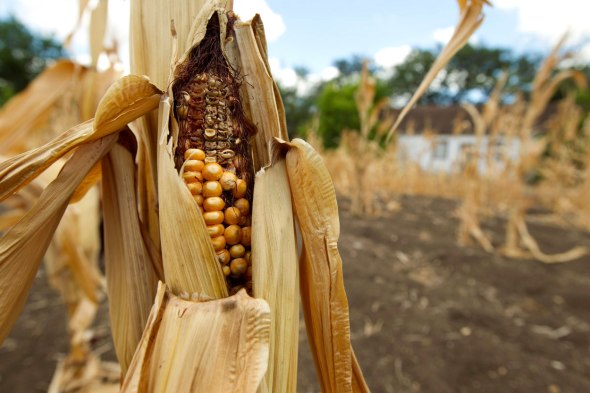
This corn stalk is typical of the condition of hundreds of acres of corn that was destroyed by drought on this farm in Round Rock on Tuesday, July 12, 2011
Fish gulping air at the surface of a pond is an early warning of an impending kill. Sometimes pond owners can improve the situation by running an outboard boat motor with the propeller close enough to the surface to mix air and water, increasing dissolved oxygen. However, they must be sure not to stir up mud, as this can make things worse. They also must ensure that the motor’s cooling-water intake remains submerged to avoid overheating.
Fish in large lakes are not immune to drought and heat. Most of Missouri’s large reservoirs still have reasonably good water levels, but temperatures are climbing and dissolved-oxygen levels are declining. Fish grow sluggish as water warms and oxygen grows scarce, and this makes for poor fishing. Fish also are more susceptible to diseases and parasites in tepid lakes. The longer such conditions continue, the greater the likelihood that fish will die. At present, fisheries biologists worry about the possibility of isolated die-offs of large muskellunge at Pomme de Terre or the loss of walleyes and other prized game fish at other big lakes.
Fish in streams also feel the effects of heat and drought. Streams with healthy watersheds – including good soil-conservation practices, vegetated stream-side buffer zones and trees that provide shade – generally have good water quality and avoid fish kills. But even fish in healthy streams can experience stress in extreme droughts. Trout in the Current and Niangua rivers and small spring-fed streams currently are at risk because reduced flow from springs has raised their water temperatures.
Pools that serve as refuges for fish in small streams statewide are disappearing, leaving fish with nowhere to go. Even where pools remain, severe flow reductions can leave fish vulnerable to pond-like fish kills.
Anglers may find the water level in some streams so low that boat ramps are unusable. Until the drought breaks, it’s a good idea to inspect the bottom ends of boat ramps before launching to ensure the concrete apron extends far enough to support your boat trailer.
Four of MDC’s five cold-water fish hatcheries rely on natural springs to supply water for their operations. Some of those springs are down to less than half their normal flows. This has forced some hatcheries to transfer part of their fish to Shepherd of the Hills Hatchery, which has an abundant supply of cool water from Table Rock Lake. MDC’s four warm-water hatcheries are making do with reduced flows, but hatchery managers are watching conditions closely.
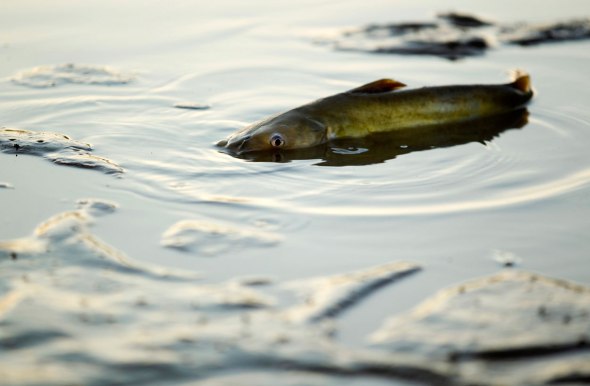
A catfish can barely move on the edge of a pond in that has dwindled to just a few inches deep on Thursday, July 14, 2011, in Old Dime Box in Lee County.
“Hatchery improvements completed the past couple years, such as dissolved oxygen systems, aerators, and renovated raceways have really helped us cope with the drought and low water levels,” says Hatchery Systems Manager James Civiello. “I’d hate to imagine where we would be in this drought without the hatchery improvements.”
PRIVATE LAND
Livestock forage is critically scarce this summer, and MDC supported a request by the U.S. Department of Agriculture’s Farm Services Agency to allow farmers to graze cattle on some land enrolled in the Conservation Reserve Program and permit haying on land enrolled in the Wetland Reserve Program.
MDC also offers cost share to landowners interested in establishing native warm-season grasses for forage production. Native grasses are more drought-tolerant than introduced cool-season grasses such as brome and tall fescue. During the drought, native grasses like big bluestem and switch grass are still growing and providing forage for livestock and cover for wildlife. For more information on native warm-season grasses contact your local private land conservationist or regional MDC office.
Private Land Field Programs Supervisor Rex Martensen reminds landowners that the Missouri Wildlife Code allows them to protect crops and property from deer, bears, raccoons, coyotes, beavers and other wildlife with MDC permission. A call to the nearest MDC office is all that is needed to get help from a wildlife damage biologist.
CONCLUSION
Good news related to the drought is scarce, but there are a few silver linings. One is that ticks and mosquitoes are not as troublesome this summer as they have been in recent years. Invasive zebra mussels can’t tolerate warm water well and apparently were devastated by high water temperatures at Lake of the Ozarks last year. This year’s more extreme conditions could help contain the destructive mussels.
While individual animals and local populations may suffer, MDC experts agree that forests, fish and wildlife overall will bounce back from the current drought and heat.
“The resiliency of wild animals and the stability of natural systems is truly remarkable,” says Briggler. “Trees and animals don’t fret over the present or the future. They just persevere.”
Impacts of drought via climate change;
Drought conditions can affect wildlife populations in many ways, from changing homeland ranges in an effort to find water to creating conditions that can impact health. High temperatures and low rainfall can contribute to outbreaks of Clostridium botulinum or avian botulism, which is a bacterium that typically resides dormant in the soil. Under the right conditions, these bacteria can replicate and produce toxins. These toxins are typically concentrated in maggots and other invertebrates that feed on decaying matter that is a good source of protein for the botulism bacteria. Birds like waterfowl then ingest the toxins through feeding on these organisms or drinking infected water. Species that are most impacted by a botulism outbreak are associated with wetland communities including ducks such as mallards, wood ducks, and teal and water birds such as yellow legs, pelicans or great blue herons.
Habitat;
As drought conditions increase, the impacts on plants can be readily observed, since plants simply reduce the number of stems they produce while others shrivel and die back. This reduction in plant growth results in less available hiding cover, which could increase predation rates for wildlife as well as produce fewer flowers for insects and, as a result, less available food. Species that could be impacted by this decreased habitat quality would be ground nesting birds such as turkeys and pheasants as well as ground dwelling mammals such as ground squirrels.
Nesting birds;
The timing of this year’s drought conditions is not likely to have a significant adverse impact on nesting wildlife, since most birds have fledged the nest and are no longer confined to a specific nesting site. The potential exists, however, that high temperatures and low moisture levels can result in bird losses.
Reduced food shortages;
Extremely dry conditions also reduce the available water sources that many insects are dependent upon for a portion of their life cycle, specifically mosquitoes. Although reduced insect levels can be a positive for people getting outside in the evenings, lower insect levels for bats can mean less food and as a result, lower fat reserves for migration and hibernation. In addition to potential mortality that reduced food sources may cause, wildlife in drought conditions may also need to travel greater distances to find available food. This extra effort also subjects them to increased predation rates themselves and an increased likelihood of accidents.

In the image above one can clearly view how drought is changing over the states of America [Please click image]
In addition to reduced insects for food, the production of other food sources - such as berries and mast, which include acorns or hickory nuts - could also be reduced. Similar to a reduction in insects, a reduction in the available berries and mast can impact wildlife by requiring additional travel to find adequate food sources, causing both mortality from increased predation or accidents as well as indirect mortality from reduced fat reserves needed for hibernation. These impacts can ultimately result in reduced number of young next year.
Another potential impact that residents in the drought areas may experience is an increase in the number of wildlife visiting yards and outbuildings searching for food and water sources. As food sources decrease in the wild, some wildlife species such as raccoons or bear may search out easier food sources such as pet food dishes, cattle troughs or gardens that are regularly watered and are producing a higher volume of berries.
Concentrating wildlife;
As drought conditions increase, much wildlife will seek alternative habitat locations where habitat conditions are more favourable for them to raise young, seek shelter and provide a water source. Some species that would concentrate in these drought conditions would include a wide array of wildlife that would frequent the remaining watering holes to wetland dependent species such as waterfowl and amphibians, specifically frogs, toads and salamanders. While the concentration of wildlife may seem like a security issue to some, it also increases predation rates as the predators also home in on concentrations of their prey species.
Combatting drought - http://drought.unl.edu/DroughtforKids/HowCanWeProtectOurselves.aspx
Reducing water loss based on the most hottest sub Saharan climates – Zimbabwe an example;
Irrigation;
Since 1991 Practical Action has been working with communities in the dry Chivi district of Zimbabwe developing and testing new approaches to overcoming the effects of droughts which affect them three years out of five.
The farmer’s main priorities from the programme were to improve crop yields and conserve water. A high level of community participation - over 1,800 people - ensured that the project reflected local priorities and built on local knowledge to conserve water, protect soil, control pests and maintain indigenous varieties of seeds.
One early successful outcome of the project was a water saving technique involving clay pipes made by the women of the community. The pipes were used to carry water underground for irrigation in order to reduce evaporation.
The results were dramatic. Crops only needed watering twice a week instead of four times and the volume of water required fell by a half.
Other methods of water conservation have also been successfully employed including ridges across furrows to trap water, infiltration pits to soak it up and mulching.
Practical solutions on reducing drought;
- Use water convenient items such as low water showers and 4 minute timers etc. You can also wash your car say once a fortnight instead of daily.
- Mulching with bark and other fibrous chippings to even manure will reduce fluid loss on an agricultural and domestic scale.
- Fixing leaking tapes and pipes and reporting ALL leakages to the water board. It’s estimated that internationally we lose over 56 billion litres of water a year just from “public broken pipes” if you see it REPORT IT.
- Use alternative fuels thus reducing increasing climate destruction that causes drought.
- Set up on your farm and home rain water catch channels that then contain “rain water in to barrels or vast under-ground tanks” that one can then use to water their farms. International Animal Rescue Foundation © recommends that you store these tanks under-ground to reduce [evaporation] and because of the ground being much cooler and cut off from direct sunlight.
- Sounds “dirty” but DON’T allow your shower or bath water to just filter down the plug holes, this water helps in two very important ways of which we use in one of 7 glass houses. 1) Collect all bath and shower water upon finish “even with the soap suds in”. 2) Await for this to water to cool then water your plants [it does not harm them] 3) because the water has a [now] concentrated soap in it that does not harm the plants or crop in anyway; it does actually act as an aphid control. [The soap within the water is slippery and once cooled and then watered onto plants / crops that are infested by bugs, the aphids cannot keep grip on the stems thus falling off. [We always recommend that you use biodegradable chemicals] please view here where you can purchase. http://www.charliesoap.com/kitchen_bath_cleaner.html http://www.alibaba.com/showroom/biodegradable-soap.html http://greenliving.nationalgeographic.com/biodegradable-house-cleaners-2264.html
- It’s important to use biodegradable soap & cleaning products when you are re-using your bathwater to water the garden, as normal soap takes a long time to break down from complex chemicals into more useful simple substances that plant life can absorb. So I thought I would write something on biodegrable soap…first of all, look out for vegetable based solid soap like Marseille soap or glycerin soap. Glycerin soap is usually translucent. Marseille soap uses olive oil as a base. If you prefer to use liquid soap or shower gel, rather than solid soap, you can make your own shower gel by: [1] grating solid soap into flakes [2] putting these into an old shower gel bottle with some hot water [3] Shake the bottle for a few minutes and leave it to stand for a day or too. This is then ready to use. This is also good for the environment because it stops you buying shower gel bottles which then have to be recycled or just thrown away, ending up in landfill. If you can’t be bothered with that, you could use solid soap in the shower, if you have somewhere to put it… you can put in on a string and hang it up above the bath. The best way to do this is to use a screwdriver to grind a hole by hand through the centre of the bar of soap and thread some thick cord through this. It’s best to hang the soap high up so it’s not in the water stream, this way it will last longer. As for biodegradable cleaning products to clean your bath, try using soda crystals or borax. You can buy these sorts of products in cardboard boxes (again less plastic waste) from Clean and Natural by DRI PAK. If you scrub this powder onto the surface of the bath with a bit of water and leave it for a while before washing it off again, it is pretty effortless -on a par with stronger household cleaning products but with less ecological impact. These products are easy and safe to use and odourless. Soda crystals are produced by a relatively simple chemical process which means it’s more easily broken down, unlike phosphates which are found in more modern cleaning products. for more information on this subject see this page on toxic water by Surfers Against Sewage (SAS)
- Take showers not baths
- SO you think that plants and trees only draw water in the daytime when photosynthesis a process used by plants and other organisms to convert the light energy captured from the sun into chemical energy is in operation? WRONG plant roots will not rot away if you water in the night time that is complete and utter nonsense. [Please water only in the night time and sunset] Also water in the very early hours of the morning and if you cannot be bothered to get out of bed then you can set up an irrigation pipe with timer. Here is where you can purchase that timer http://www.sprinklerwarehouse.com/Sprinkler-Timers-Controllers-s/23.htm al shapes and sizes and at all prices.
- NO Air conditioning – It’s a [luxury and not needed] use a hand fan or battery fan. Ask yourself WHY ARE YOU BOILING HOT IN YOUR HOME? Lack of ventilation? Air circulation? Or it is because you’re actually contributing to global climate temperature increase?
- Going camping? Forget the water supply that the camp sites charge you for! PORTABLE RAIN WATER PURIFICATIONS - http://www.travelpharm.com/index.cfm/malaria/Products.List/category_id/4&referer=adwords&keyword=portable_water_purification?gclid=CM_C88-pzrUCFeXLtAodqE0AjQ
If we continue to abuse the environment then we will continue to battle for water thus leaving other community areas short or having to run on limited supply. This will in turn harm our precious biodiversity which is already in a critical state. Please act responsible and don’t ruin our planet anymore. Water shortages in the modern world are also affecting the third world nations and agriculture. Please use water responsibility.
Thank you
Dr J C Dimetri V.M.D, B.E.S, Ma, PhD, MEnvSc
Who would believe there was a drought with weather like this only 4 days ago;
IF WE CONTINUE TO ABUSE THIS PLANET THEN MOTHER NATURE WILL FIGHT BACK WITH DEADLY FORCE
Environmentalism Chapter 22 - Understating Poaching
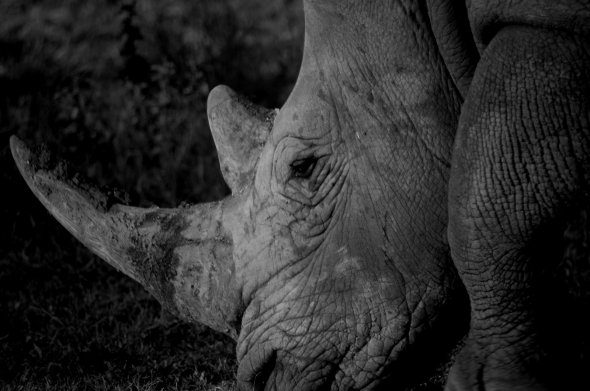
The poaching crisis in Africa and Asia is out of control and there seems to be no stopping these brutal and heavily armed sophisticated poachers as yet. Africa is again seeing the brunt of all poaching that includes both the Elephant and the Rhinoceros to Pangolin with Lion bones being used more than ever to produce fake Asian medicine bone wine.
The numbers of the one horned Rhinoceros and Asian Elephant and Pygmy Elephant (rare to poach) are incredibly low too which would indicate why there are such low poaching “incidents” however when a poaching incident occurs it’s now in large numbers taking out large numbers.
Arrests are climbing “to a certain degree” and within January 2013 there were many animal parts seizures internationally both in Thailand, Malaysia, Vietnam, Hong Kong and Singapore of Rhinoceros horn, Elephant ivory to other animal parts and living specimens too from snakes seized in Thailand of just over two thousand living snakes (February 2013 – Chinese new year) as of course it is the year of the “snake” as advertised all over Asia so in theory the snake will be brutalised to great lengths this year for fake potions, medicines and bush meat to satisfy Asian demand which is incredibly high with no signs of a decrease as yet in some animal parts.
However there has been a decrease in Rhinoceros horn on the market in Vietnam and China which I have explained further on within this news and media documentary.
There is no hiding the fact though that poaching is erratically out of control in Africa with last year’s poaching statistics standing at an eye watering six hundred and twenty two brutally slain Rhinoceros for counterfeit Asian pharmaceuticals for the month of December 19th 2012 as stated by the Department of Environmental Affairs minister Rt Hon Albi Modise and Rt Hon Minister Bomo Edna Molewa.
The total end poaching statistics for December end of 2012 stood at six hundred and sixty-eight poached Rhinoceros for South Africa shocking Africa and many conservationists around the globe. http://wessa.org.za/get-involved/rhino-initiative/current-rhino-poaching-stats.htm
The current number of Rhinoceros in South Africa alone that we can only go on from our previous correspondence with the Department of Environmental Affairs (Dec 2012) is totalled at 18,800 however this number in detailed correspondence in many email’s to us from Rt Hon Albi Modise states that number is from the “2010 census count” and is not the true figure for 2012-2013 with many propagandists placing the Rhinoceros populations in South Africa at a non-factual 22,000 – 22.200 which it completely untrue with no supporting evidence to back this evidence up.
Based on poaching statists and the population counts for 2010 then adding to that the “gestation” length of birth coupled with the female cow only giving birth to one Rhinoceros with gestation at 450 days then we have estimated the total number of Rhinoceros (which is not a factual precise number) at 15,300 and dropping rapidly now at two to three a day every day being poached. We also took into account the number of hunting permits that was handed to hunters (hunting within Africa) to hunt “Rhinoceros” standing at one every year.
15,300 is as we have calculated non-factual due to not being able to “fulfil a detailed census count” however based on reams of evidence this is the closest number based on scientific data, hunting permit records, gestation, and the number of poaching incidents to the “population” count of 2010 too that we have located which is now frighteningly worrying. Should there be no serious plan of action implemented on all sides and not just including the South African government then regrettably we will one of our famous big five.
Within India Assam, Kaziranga that holds roughly 2,200 Indian one horned Rhinoceros the poaching figures for December end 2012 was eighteen with many arrests and poachers shot dead on site. For February 2013 India sadly see’s nine one horned Rhinoceros poached dead to date for February 16th 2013 as communicated to us by the forestry and ecotourism ministry of Assam, India.
Elephant poaching statistics for the entire continent of Africa, and India including Indonesia and Malaysia are sketchy as the authorities are reluctant to release factual data with regards to the world’s largest land mammal that’s roamed the continents for millions of years.
What we have managed to locate is an estimated 25,000 elephants that were slaughtered in 2011 with most of these being hit in Kenya, Cameroon and Zimbabwe. For 2012 the “estimated figures are” that have yet to be released by all official governmental environmental agencies stands at 27,600 again that is increasing and very alarming and is estimated by many non-governmental organisations and non-profits. The actual true extent down to the nearest number will never be known for Africa or India due to the sheer size in continents and dead non-accounted for.
Within India the total number of Elephants slain is again sketchy as (The Convention on International Trade in Endangered Species of Wild Fauna and Flora does not want to place within the public domain information with regards to the poaching of these magnificent gentle giants to a certain level.
For 2012 in India that holds a very low population of Asian Elephants standing at 20,000 poaching statistics are roughly to date for February 16th 2013 sixty one poached, however in Odisha just outside of India the number of deaths stands at two hundred and ninety five. Odisha is situated here http://goo.gl/maps/Qrv60
The Asian Elephant is now at extremely decreased population levels concerning ourselves International Animal Rescue Foundation ©, World Wildlife Fund, The Convention on International Trade in Endangered Species of Wild Fauna and Flora, TRAFFIC the wildlife trade monitoring network, and The International Union for the Conservation of Nature plus many more conservation networks.
The critically endangered Pygmy Elephant is also in danger to, the Pygmy that “had” a population of 1,500 at the start of January 2013 now stands at 1,430 with most slaughtered not for “ivory” but because they are pests within and around the buffer zones of palm oil and pulp and paper plantations within mainly Malaysia and Indonesia.
Before January 2013 it was estimated that 11 critically endangered Pygmy Elephants had been deliberately slaughtered by poisons just to keep them away from the palm and paper plantation’s with another 8 found on January 26th 2013 and 5 more on February 4th 2013 there is unfortunately speculation that more may lay dead from poisoning just to satisfy greed from over obsessive consumerism outside of Asia for palm oil, wood and paper products.
The Asian Elephant is continuously slaughtered now in the most graphic and nauseas manners we’ve ever seen of such a splendid mammal, almost identical to that of the barbaric fur trade they are slaughtered by electrocution a new and torturous method of murder for ivory.
To kill an animal in such a disgraceful manner like this, knowing that it will burn alive from the inside out slowly and withering in agony then poachers and syndicates are dropping to all-time lows in side India and Africa which now must work together to end this sickening and repulsive bloody destruction of our critically endangered, endangered and vulnerable fauna and flora just for myths and counterfeit Asian pharmaceuticals within the Asian alternative medicine market.
Recent surveys have proved for 2012 that the Alternative Medicine Market or TCM/TIM is now using more African animal parts than ever before. Traditional Chinese Medicine and Traditional Indian Medicine that are both popular alternative medicine practices internationally using approximately 1,000 plant and 36 animal species to date based on recent 2012-13 TCM/TIM surveys conducted by International Animal Rescue Foundation ©, this is also including the tiger, rhinoceros, black bear, musk deer, and sea horse the tiger, rhinoceros, and sea horse are endangered or moving to endangerment.
As many know or don’t know Rhinoceros horn is used in fake Asian medicine to treat fever, convulsions, and delirium (Rhinoceros horn does not and never has cured any disease). Its popularity has been a major factor in the reduction of the rhinoceros population in Africa and Asia.
According to the World Wildlife Fund, only about 3,100 black Rhinoceros in Africa and 2,800 of all three Asian species (Sumatran, Javan, and Indian) in Asia are still survive. Black, Sumatran, and Javan Rhinoceros are designated as critically endangered on the 2007 World Conservation Union Red List of Threatened Species. The Javan numbers at 30 left in the Asian wild (2013)
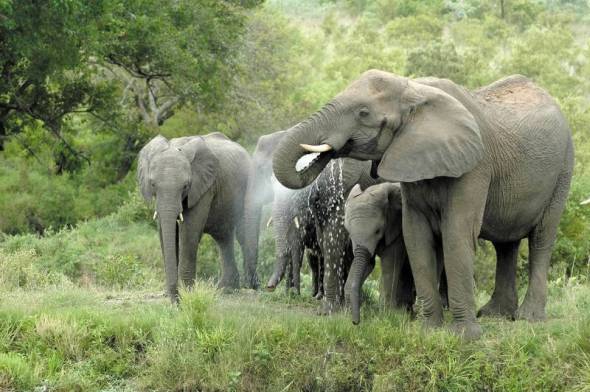
The Indian endangered one horn Rhinoceros, and the African White Rhinoceros variety are now nearing possible endangerment to extinction of which we could see the Indian species gone in 1-2 years maximum unless actions are taken to flow the demand with the White Rhinoceros banished in 3-4 years.
Despite protective laws, poaching continues still motivated by the Asian market for Rhinoceros horn. Captive-breeding is now the only hope for some species until protection can be provided in the wild sadly this is not the always the answer and breeding does not and has proven to be ineffective in increasing birth rates however does higher “mortality” to a considerable level, it regrettably is not the answer though.
Within India In an attempt to stay one step ahead of the local authorities, poachers in the Ganjam district of Odisha, India, are configuring power lines into homemade, electrocution tripwires, which they are using to kill elephants. 91 deaths that have occurred of the Asian Elephant have occurred from “some form of Electrocution” it’s the most silent way and easiest way in order to take an Elephant down so Assam Anti-Poaching teams have quoted to us (2013) which they are now launching in-depth investigations into the number of deaths so far this year.
Wildlife officers have suggested several remedies, including building taller, more insulated power lines, to help ensure the elephants’ safety. Others suggest cutting off power to areas with large elephant populations during strategic migratory periods. With poaching “known” though in these areas energy officers and anti-poaching rangers are in bitter battles on “who is to blame” (the poacher or the energy officials) “I think we all know who is to blame.
Zimbabwe holds a rough total of 700 Rhinoceros with 19 lost in 2011 from illegal poaching with great fears that the current poaching epidemic has now spread in to neighbouring states concerning many conservationists. Reported on 14th January 2013 Zimbabwe saw a copious hit on its Rhinoceros population on New Year’s Day with a total of four white Rhinoceros slaughtered with a remaining eight Rhinoceros horns recovered and spent ammunition cartridges. 2010 saw 23 Rhinoceros poached. Poaching is now considered rife in Zimbabwe’s game reserves, fuelled by cross-border syndicates from Mozambique, Zambia and South Africa.
It was stated in news feeds with regards to the four Rhinoceros that had been slaughtered in Zimbabwe that “mounting speculation that there is more than meets the eye in the suspected ‘poaching’ of the Rhinoceros on the Thetford Estate, which belongs to controversial businessman and known ZANU PF crony Mr John Bredenkamp”.
At the beginning of January it was reported in Kenya one of the worst nations with regards to out of control Elephant poaching that a family of 12 elephants were the most recent victims of a new epidemic of poaching sweeping Kenya, and Africa. It was the worst poaching hit in decades.
A gang stuck the Tsavo National Park in Kenya, one of the largest elephant sanctuaries in the world, slaughtering the animals, hacking off their tusks. The incident is the worst recorded ivory poaching incident in the history of the country.
According to the Kenyan Wildlife Service and International Fund for Animal Welfare, the trade in ivory, fuelled from Asian countries such as Japan and the rapidly prospering China, has increased to epidemic levels over the past few years.
Last year almost 34 tonnes of ivory was seized across East Africa, with 34 tons seized in 2012 with nearly 90% of all ivory seized had come from or had been transported through East Africa, and The number of animals that died for their tusks doubled in less than two years to approximately 360 in 2012.
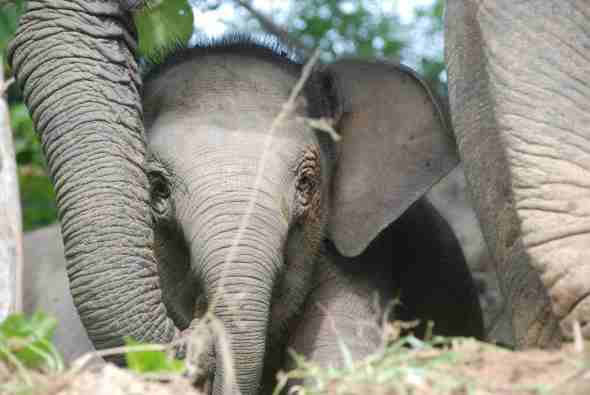
In 2011 40 poachers where shot dead on site in Kenya by rangers, all of the poacher had heavy military or “hunting rifles” which is now fuelling speculation again that there is a hunting fraternity in Africa that is supplying these rifles, who these individuals are though are yet to be announced however we ourselves are investigating too with Africa being one of the worst nations in the world with regards to illegal poaching rising (and it’s going to keep rising unless more governments act and place a complete moratorium on hunting which we International Animal Rescue Foundation © are fighting in silence.
We know that hunters, rangers, police, to even the specialist Anti-Poaching Units are involved to “a degree” not all but some individuals are which has been proven time again. These members of the public and wildlife protection force are supposedly trusted individuals however with recent arrests in 2011 and 2012 it’s not looking good and is also effecting funding and “whom” to place trust in.
Some Charities are calling for a return to a full ban on the sale of ivory, and for authorities to address the involvement of international criminal gangs being involved in the trade.
Greater education for consumers might also help to stem demand, according to campaign group Dirty Ivory, a survey in China showed that almost 70% of the public thought ivory did not come from dead elephants, but that it fell out naturally, like teeth, by simply searching online one can view that ivory is freely available to purchase. Please view the links of which took our investigators on 3.6 minutes to search for and is widely available on the internet illegally.
http://www.npm.gov.tw/exh98/carvings/ch_05.html
http://duocminhanh.com.vn/am140/Vong-tay-nga-voi.html
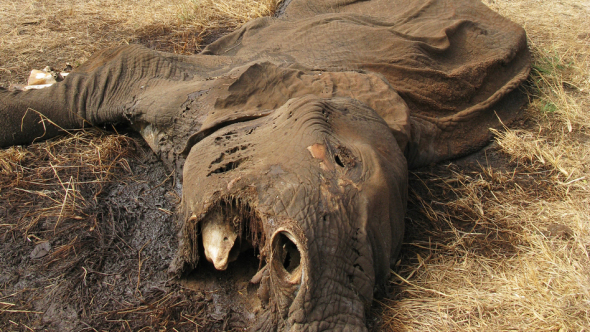
Elephant slaughtered for it’s tusks in Tanzania - Just to make ivory (What a waste of such a precious life)
The South African government have again launched a new war on the poachers however it’s not working and what it appears to us is that “anyone and everyone” is being arrested apart from the perpetrators themselves.
Within SABC news column the Department of Environment and Affairs minister for South Africa quipped;
Environmental Affairs Minister Edna Molewa says she’s confident that Sanparks may be on the verge of a turnaround with regard to the fight against rhino poaching.
Molewa says they now had a stronger team and a stronger force to help in the fight against rhino poaching. “Indeed there are people who have helped us to get new equipment which are able to help us deter those poachers from very far. There has been a contribution of helicopters by private sector and ordinary people.
“We now have a stronger team and a stronger force not just from Sanparks but from South Africans and the media” says Molewa. The Minister also thanked Lead SA, who she says has been at the fore front of the campaign.
Meanwhile, two more rhinos have been poached. The Hawks say the animals were killed and dehorned at Bulhoek farm near Brits in the North West, three or four days ago from the 10th February 2013. The rhino task team in the province is investigating.
Over 80 rhinos have been killed in South Africa since the beginning of the year (Jan 2012). Kruger National Park remains the hardest hit with 61 rhinos lost, to presumed foreign poachers. Kruger National Park is the worst hit park of them all.
We do not view this as very promising and with the latest shoot-out last Saturday and Sunday (Feb 2012) http://stfrancischronicle.com/2013/02/11/three-suspected-rhino-poachers-killed-in-shootout-with-rangers/ and with demand shooting through the roof then the war needs to be “moved into Asia” and not just in South Africa.
The Rhinoceros species could be preserved more if the government of South Africa simply;
- Place an immediate moratorium on hunting of which they quoted to us that this is not possible as hunting brings in more funding thus preserving conservation, plus in further correspondence “it would have to be proven that species in Africa where under threat”
- Cease the movements/sales of all Rhinoceros in South Africa to nations where Vietnamese hunting permits can still be used
- Improves tourism which brings in a considerable amount of income for conservation relief
- Quicker and harsher sentences for poachers and corrupt individuals
- Improving communications
- Brining all Anti-Poaching Units under governmental control and “funding them”
- Introducing a strategic Anti-Poaching command base with landing pads and runways
- Rooting out corruption with the use of polygraph technology invented in 1921
- Securing the main border channels
- More stringent checks on Asian construction workers
- Ceasing the sales of taxidermy to Asia which would impact on demand
- Tackling the air and freight ports
- Funding more security and newer high grade technology for reserves and farms
- Lowering tuition fees for those wanting to train as conservationists and/or ranger’s within South Africa
- Funding more ranger schools
- Tackling crime in “shanty town districts where poaching gangs are known by ourselves to hide”
- Education and awareness of tribal gangs and community relations
- Investigations into where donations are going to that are being ploughed in parks
- Release the R1 million that SANparks asked for in 2012 for equipment and ranger training (and purchase more equipment) International Animal Rescue Foundation © gave $10,000 with regards to the 2012 video advertisement for funds for this vital equipment and training however it’s being held back to hand to “anyone that can shop a poacher OR name a syndicate”.
- Setting a task force up to locate syndicates over the border
The above are just a handful of many tasks that the government can work towards to help in preserving our endangered fauna and flora, however they refuse and continue to support the likes of the hunting trade that is fronting the poaching trade and as much as many people “may disagree” the evidence is more than evident.
M99 (Entorphine) is still being used to take the Rhinoceros down, the Rhinoceros horn treatment is still not funded by the government, freight and airports are left untouched of which the DEA know damn well this is the main exit point for ivory and horn.
Non-profit Organisations, to non-governmental organisations and opportunists are working as rapidly and to the best of their ability to preserve and conserve however “funding is needed” and whilst funding is being pushed in to over 130+ African zoo’s where is the funding for the Rhinoceros protection? It’s slowly trickling in from the humble public in small quantities that’s going astray.
Pelham Jones makes very dull point here http://www.globalpost.com/dispatch/news/regions/africa/south-africa/120226/rhino-war-can-hunting-save-the-rhino of which he truly believes that “hunting animals is preserving them” however this is totally untrue, and should one look at the PHASA terms and conditions and their “voluntary donations” scheme then one will understand that “tourism brings in more money than that of hunting” as more people travel to AFRICA to shoot with a camera than they do with a rifle.
Pelham Jones quotes “that when hunters come for trophy hunting, they kill old, non-breeding animals. “We have no problem with this,” he said. “Unlike with humans, there are no retirement villages for animals.” (Utter nonsense) excuse me Mr Jones can you explain to me why there are breeding farms located all over South Africa?
Yes I understand that one then has to move new stock in but how is this actually preserving our wildlife? It’s exactly the same as purchasing a new car, you trade the old one in for half the price if that, and then you purchase a new model. In this case it is the animal, so next question is exactly how much of the so called remaining pocket funds goes back into conservation? Oh yes very little, and it’s proven time again.
Why is there breeding farms located here http://goo.gl/maps/qnSX5 that have links (and strong ones as we have checked to canned hunters?) I suppose that these breeding farm’s “coincidentally next to Wild Cats World and Daniels Cheetah Project don’t purchase new young then sell the surplus to canned hunters or to zoos too? Zoo’s in the Netherlands that coincidentally purchase animals which then travel BACK to Africa and are then shot dead.
(To those that are reading we were threatened by Danish mafia (apparently) in 2 emails if we carried on harassing this area of interest that we are disgusted and sickened about.
What tourism can bring for YOU but most importantly CONSERVING FAUNA AND FLORA
Tourism is regarded as a modern-day engine of growth and is one of the largest industries globally. In 2012, G20 heads of state recognised tourism as a driver of growth and development, as well as a sector that has the potential to spur global economic recovery. Just in 2009-2010 in Uganda (not related to this tourism shot up by 300%) That’s in a war torn zone.
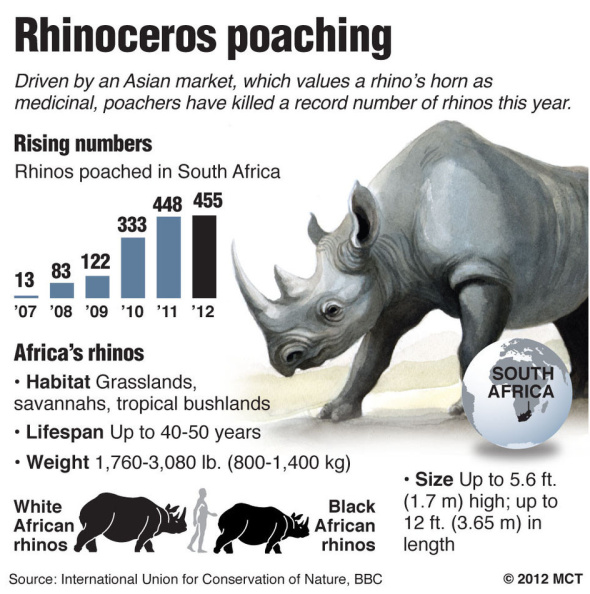 South Africa has earmarked tourism as a key sector with excellent potential for growth: the government has increased tourism’s contribution, both direct and indirectly, to the economy from the 2009 baseline of R189, 4-billion (7.9% of GDP) to R499-billion by 2020 (National Department of Tourism, 2012). Tourism supports one in every 12 jobs in South Africa and heavily supports conservation (but we need more)
South Africa has earmarked tourism as a key sector with excellent potential for growth: the government has increased tourism’s contribution, both direct and indirectly, to the economy from the 2009 baseline of R189, 4-billion (7.9% of GDP) to R499-billion by 2020 (National Department of Tourism, 2012). Tourism supports one in every 12 jobs in South Africa and heavily supports conservation (but we need more)
South Africa’s spectacular scenery, friendly people, world-class infrastructure make it one of the most desired destinations in the world. The sector was given a massive boost by the successful hosting of the World Cup in 2010, when the country received a record-breaking 8.1-million foreign visitors. Despite tough global economic conditions, tourism grew in 2011, with 8.3-million international tourists. The regional African tourist market is South Africa’s important tourist markets, contributing more than 73% of total tourist arrivals and more than R50-billion in revenue in 2011.
Domestic tourism is also an important source of revenue and employment, contributing 52% of total tourism consumption. Cruise and rural tourism are focusing within growth areas.
A labour-intensive sector, with a supply chain that links across sectors, tourism is a priority sector in the government’s planning and policy frameworks – it is one of the six job drivers of the New Growth Path framework.
The National Tourism Sector Strategy, launched in 2011, aims to ensure the sector realises its full potential in terms of job creation, social inclusion, services exports and foreign exchange earnings, fostering a better understanding between peoples and cultures, and green transformation, and conservation.
South Africa is a popular destination for business travellers, who spend on average three times more than their leisure counterparts while crossing over significantly into leisure travel themselves, through tours before or after their business activities and through return trips in subsequent years.
With its first-world infrastructure, balmy climate and breath-taking scenery – not to mention acres of golf courses – South Africa is an ideal location for international congresses and conventions.
The country has well over 1 000 world-class conference and exhibition venues, ranging from intimate bush hideaways to large-scale, hi-tech convention centres. All of these offer a wealth of leisure activities, side-tours and events: from walking with elephants to first-hand experiences of African culture to luxury shopping and relaxation.
The country has set up the National Conventions Bureau to help it secure more international conferences, an excellent source of foreign tourists and revenue. The conference industry is in 37th place in the International Congress and Convention Association’s top-100 list of leading destinations in the world, released in 2012.
South Africa is home to diverse cultures, ranging from the Zulus who resisted European conquest to the nomadic San of the Karoo desert. Each culture has evolved its own distinctive art forms, music and traditional rituals, while the descendants of colonial settlers have evolved variations of their European roots.
South Africa’s history has been one of confrontation, but is now also known as one of reconciliation. World-class sites have been established to commemorate the country’s past and celebrate its new-found unity, while the number and quality of cultural villages, community and township tours has grown dramatically.
World Heritage
South Africa is home to eight World Heritage sites, places of “outstanding value to humanity”.
Four of South Africa’s eight Unesco World Heritage sites are cultural sites, while one is a mixed cultural/natural site. These are: Robben Island, the Cradle of Humankind, the Mapungubwe Cultural Landscape, the Richtersveld Cultural and Botanical Landscape, and the uKhahlamba Drakensberg Park.
South Africa’s diverse climates range from tropical in the south-east to desert in the central region. The scenery runs the gamut from spectacular mountain ranges to vast grass plains, from coastline to meandering rivers to desert dunes. The country’s wildlife is far more varied than just the celebrated “Big Five”, and is supported by an extraordinary biological diversity.
Three of South Africa’s eight Unesco World Heritage sites are natural sites, while one is a mixed cultural/natural site. These are the Cape Floral Region, the iSimangaliso Wetland Park, the Vredefort Dome, and the uKhahlamba Drakensberg Park.
South Africa is leading the way in one of the boldest cross-border initiatives currently unfolding in southern Africa, the development of transfrontier parks.
There are 19 national parks, including the world-famous 20 000km2 Kruger National Park. The country’s terrestrial protected areas stand at around 6.9%, according to a World Bank report published in 2012. Marine protected areas make up around 11%. The country’s private game lodges range in standard from middle to very upmarket, with ultra-luxury lodges catering almost exclusively to foreign tourists.
Being at the southern tip of a large continent, South Africa offers 3 000 kilometres of coastline along with breath-taking mountains – often side by side. The country’s diverse terrain, together with a climate suited to outdoor activities, make it an ideal hunting ground for adrenaline seekers.
South Africa offers world-class climbing, surfing, diving, hiking, horseback safaris, mountain biking, river rafting – and just about any other extreme activity you can name, all supported by dedicated operators.
World-class venues and supporting infrastructure, top international events, and South Africans’ passion for sport combine to make the country a huge draw card for sports fans.
More than 10% of foreign tourists come to South Africa to watch or participate in sport events, with spectators accounting for 60% to 80% of these arrivals.
There are numerous world-class sporting events on South Africa’s calendar every year, such as the Cape Argus Cycle Race and the 89km Comrades marathon. The country has proved that it can successfully pull off the really big events, which have included the 1995 Rugby World Cup, the 2003 Cricket World Cup, and the biggest of them all, the 2010 Fifa World Cup.
PLEASE VISIT SOUTH AFRICA – SHOOT WITH YOUR CAMERA – PLEASE GIVE TO CONSERVATION
In 2012 we made a direct demand to President Jacob Zuma that should he not clean the poaching trade up then we would launch imminent and immediate boycotts of the South African tourism and trade industry. Please view the links
http://www.waterconservation.co.za/2012/01/20/threat-of-boycott-to-save-the-rhino/
http://mg.co.za/article/2012-01-13-rhino-lovers-issue-ultimatum
http://vnmade.com/?p=15092
It was a wrong and uneducated move by me the founder/CEO of the International Animal Rescue Foundation of which I didn’t see the full potential of what tourism could bring into South Africa which has masses of “potential if the tourism trade acts with us and others”.
Tourism is big business in South Africa and in the European Union, Africa is plastered on every tourism outlet everywhere one travels, by working with the tourism industry, showing the trade that walks through the door of what is happening in the nation they wish to visit then “more sums of monetary gain” can be achieved and pushed directly into conservation to protect our Rhinoceros and Elephant, Lions to Pangolins and more.
International Animal Rescue Foundation © has been working intensively to help preserve the famous big five in Africa along with many other conservationists and individuals, we placed conservation teams on the ground with our own European Anti-Poaching Units that are kept low key as we believe that corruption in Africa involving the animal parts trade doesn’t just involve government, police, rangers, to farmers.
As explained we also believe that there are individuals working within Anti-Poaching Units that are tipping poaching gangs off with planned movements of Anti-Poaching personnel. We refuse to allow any African Anti-Poaching teams or Africans to work with us not because of discrimination but because we are highly concerned at the corruption of instate individuals and we do not wish to take chances. This we feel very unfair as it could introduce good working relations, and rapport.
There are also other major factors that are not being taken into consideration with regards to poaching and every time we mention these important factors to government and smaller non-profits and non-governmental agencies they are simply brushed aside. We are not going to allow those problems to be simply hammered down because of fear of upsetting people in other nations, or their own governments.
We explained to our team back in 2009 that we need to look at poaching in Africa within a more (broader setting), who else could be involved? Why have the numbers of poached Rhinoceros drastically increased from 7 in 2000, to 122 in 2009 than 2011 seeing just over 448 poached?
Elephant poaching statistics went skyrocketing from 2005-2006 being the start of the main Elephant poaching frenzy then decreasing in 2007 to a maximum number of 15,000 with 2008 being the lowest ever year recorded in Africa alone for Elephant poaching with numbers of poached Elephants under 10,000.
Then 2009 see’s under 37,000 thousand poached Elephants with the year 2010 practically shooting of the graphs with poaching statistics standing at just under 58,000 poached dead, 2011 and 2012 see’s the largest now moving into hundreds of thousands standing at 25,000+ with formal records still to come back to the IUCN and CITES.
The statistics of “poaching incidents” for both Rhinoceros and Elephants are almost identical, and yes we are fully aware that the Rhinoceros hasn’t been poached into the thousands as with the Elephant species but what we are trying to explain is the “years of increasing hits” on wildlife.
Let’s pull some facts and questions here and lay them on the table;
- Between the years of 2002 and 2009 the poaching “hits or incidents” and not (numbers of poached) on both the Rhinoceros and the Elephant have increased at the same time moving from a steady low then high to decreased poaching rates then sliding of the scale. Why did Africa see these rates at such fluctuating levels?
- There are more poaching incidents next to “war torn” or “poverty hit nations” (we know the KNP (Kruger National Park) holds the largest number of Rhinoceros and we are also aware that Kruger and Mozambique meet that are not secure or manned properly at the border posts with some poachers traveling through the Giriyondo gate via the getaway or just moving animal parts discreetly through the frontiers.
- There are more poaching incidents of Rhinoceros in the Kruger “which people believe is (only) because there is more numbers of Rhinoceros in the Kruger however this side of Africa (KNP) also borders extremely poor nations” where civil unrest and refugee camps are becoming increasingly larger.
- There are more Mozambique’s, Somalia’s, and Ethiopians arrested in “poaching incidents” than there are Asian poaching gangs with regards to the Rhinoceros and Elephant.
- Moving back to the poaching of Elephants the numbers stand at this in (percentage) for 2011. 1) The percentage of poached Elephants for 2011 in central Africa stood at 90% 2) The percentage of poached Elephants for 2011 in East Africa stood at 59% 3) The percentage of poached Elephants for 2011 in southern Africa stood at 51% 4) The percentage of poached Elephants for 2011 in Western Africa stood at 84%
ONLY YOU AND WE CAN STOP THIS - STOP IGNORING THE DAMAGE - START TAKING ACTION - WE NEED MORE ACTION IN THE FIELDS NOW - WE ARE LOSING THIS BLOODY WAR - PLEASE HELP US - PLEASE HELP THE AFRICAN BIODIVERSITY NOW!.
Identifying other areas of interest I have listed below.
- There has been 16 years of civil war in Mozambique that ended in 1992. Stated in 1975 after independence from Portugal it displaced millions, ruined homes and infrastructure, agriculture, and living, pushing people into poverty and crime with most people living on $1 a day to support themselves and family. Although in Mozambique the Civil war has since ended (to a degree) the country still sees for 2012 based on UNHCR statistics some 145,000 refugees, 245,000 asylum seekers, 55,000 internally displaced persons, with only “four thousand returnees”. The country also has a 20%+ unemployment rate.
- In 2002 a severe drought hit many central and southern parts of the Mozambique, including previously flood-stricken areas. Poverty remained widespread, with more than 50% of Mozambicans living on less than $1 a day. At this same time of year poaching increased of the Rhinoceros from 6 in 2001 to 25 in 2002 than 22 in 2003 with a decrease in poaching between the years of 2004-2007 with only 2006 seeing a fluctuation, the years of 2002 to 2005 is a typical “drought session” is this an indicating factor that we should all be looking for in the future to prepare oneself for possible poaching “incidents?
- In 2012 it was reported that Individuals in mixed-migration movements towards South Africa often use camps in Malawi, Mozambique and Zimbabwe as temporary stopovers, putting a strain on scarce humanitarian resources and creating tensions locally. This has led many governments in the region to restrict access to the asylum system by requiring travel documents at entry points and applying the “first safe country” principle, whereby entry is refused to asylum-seekers who have travelled through a safe country prior to their arrival.
- 2012 The UNHCR has now called on the Mozambique government to STOP asylum seekers from being deported of which will see more pressure placed on refugee camps, more crime, poverty and anti-social unrest. (Could this be another reason why poaching is increasing as of asylum into a poor nation?) Why would anyone decide on seeking asylum in Mozambique in such (small numbers that are not even totalling that of what Britain see’s and being under 200,000)
- In 1993 President Robert Mugabe born 21 February 1924 threatened to expel white landowners who objected to the 1992 Land Acquisition Act permitting the government to force them to give up their land for redistribution to black Zimbabweans.
- In 2000 President Robert Mugabe begins ordering white farmers to give up their land. Some 4,000 farmers lose their land and Zimbabwe’s agricultural output decreases sharply.
- In 2004 it accusations by Human Rights Watch state that starvation is being used as a tool for the regime’s support among Zimbabweans. Farm output has decreased sharply since Mugabe began his policy of land grabs.
- 4,500 white commercial farmers to surrender their lands without compensation to black settlers that had NO agricultural or botanical experience at all plunging the economy into doom with hypermarket shelves left bare and empty.
- In 2000 Up to 13 million people, close to half of them in Zimbabwe, starved over the six months as a result of drought and political mismanagement across six countries in the region. Between 2000 and 2008 203 Rhinoceros where poached (there is now 700 Rhinoceros left in Zimbabwe alone) Was the land reform partly responsible for poaching fluctuations too in South Africa coupled with droughts of 2000 in Mozambique?
- From 1999-2000 Zimbabweans unemployment rate stood at 52% and as drought took hold due to rapid climate change and lack of agricultural consumer goods as of inexperienced agriculturists this had a knock on effect with increased unemployment increasing, from 2001 unemployment shot up to 57% from 2005 unemployment stood at 73.4% then rising yet again in 2007 at a staggering 88% unemployed with 2009 at 95% for the years of 2011 to 2012 the unemployment rate is of the scale with most of those unemployed between the ages of 18-35 years of age. (Coincidentally those that are arrested for poaching are also in between this age group and are from Mozambique, or Zimbabwe. Between the years of 2007-2011 poaching skyrocketed (could this be another reason why poaching took off coupled with the animal parts trade in Traditional Chinese Medicine too?
- Zimbabwe has the “highest rate” of unemployment in the whole of Africa standing at 95% with Mozambique at 21% (are more poachers deriving from Zimbabwe where Asian syndicate gangs are taking advantage?) Namibia stands at 51.2% unemployed, Kenya and Swaziland stands at exactly 40% unemployed, South Africa 24.9% Ghana 11%
- As reported on May 8th 2012 Angola entered its pre-electoral phase, with civil unrest very likely to rise effecting Botswana although Botswana is a relatively peaceful nation compared to others it’s not of a major concern to ourselves with regards to poachers slipping over the borders or possible syndicates seeing these areas as poaching havens to pay poachers to do their dirty work whilst they stay relatively safe in neighbouring nations bordering South Africa.
South Africa borders four other major African nations as explained above, Namibia, Zimbabwe, Mozambique and Botswana with Swaziland closest to Mozambique and Lesotho 30 degrees east. Leaving Botswana, Swaziland, Lesotho, and Namibia out of the equation the top ranking nations that have the most problems with petty crime, unemployment, social dysfunction, organised crime, and drought to very low income then these nations can be and are from what we are seeing being targeted by highly sophisticated Asian syndicate gangs.
The opportunist is also targeting our wildlife within South Africa and who can blame them when you see figures such as this above from mainly Mozambique and Zimbabwe regarding unemployment, civil unrest and drought.
The same more or less is on-going in Indonesia and Malaysia with regards to illegal logging of which poor families that are none the wiser are completely oblivious to what damage they are causing to our sensitive biodiversity.
Bringing these two together with the poor and the sophisticated heavily armed and trained poachers could this be a reason why the Rhinoceros and the Elephant is now being plunged into nearing extinction at such a rapid rate? And are the syndicates residing in Zimbabwe where they know there basically untouchable thus sending in trained poachers to take down South African wildlife. We all know that from time to time the poor man will take his fair share, however the poor can easily be manipulated and bribed and $1000 sounds a lot better than $1 A DAY!
Shoot out 26th November 2012 - with the other two poachers moving back across the border into Mozambique http://www.timeslive.co.za/scitech/2012/11/26/two-men-arrested-for-rhino-poaching
On the 7 March 2012 more Mozambicans were arrested for Rhinoceros poaching - Mozambican nationals, Timothy Ngcobe, 44, David Lazerus, 29, Carlito Masundu, 25, Santos Smit, 28, Chicco Khoza, 35, Sam Mashaba, 36, and Sello Zitha, 35 were later arrested over the weekend. - http://www.sanews.gov.za/south-africa/more-rhino-poachers-be-arrested-says-kruger
9th February 2013 – Shootout erupts with remaining poachers fleeing back over the border into Mozambique - http://blog.getaway.co.za/travel-news/suspected-poachers-killed-arrested-kruger/
24th January 2013 – The DEA reports on more arrests with “poachers fleeing over the border into Mozambique” feeling over the border http://www.politicsweb.co.za/politicsweb/view/politicsweb/en/page71654?oid=352926&sn=Detail&pid=71654
It was stated on the 6th March 2011 by the Department of Environmental Affairs
“South Africa and Mozambique have signed a historic agreement to drop fences between the two countries for biodiversity reasons in the Greater Limpopo Trans-frontier Park. Evidently, this has been exploited by criminal elements.
Working together with her Mozambican counterpart, Minister Molewa will address this concern. This bilateral with Mozambique will address among others how we should jointly strengthen and upgrade the security situation to arrest the scourge of rhino poaching. We also would want to share with our Mozambican counterparts our initiatives that allow collaboration between various security agencies to deal with poaching as a priority crime”. http://www.environment.gov.za/?q=content/rhino_poaching_cause_concern
What minister Molewa shouldn’t off done was drop the fence, the Minister has along with her Mozambique counterpart increased poaching figures dramatically, and yet still claims that she is cracking down on poaching. This is bloody absurd and the so called “criminal elements” are the Mozambicans, Zimbabwean’s themselves or are they?
One cannot just blame or point the finger though at Mozambique or Zimbabwe, we also have refugee camps that are in dilapidated and in repulsive conditions with little food, electricity black outs, social dysfunction, drought, lack of sanitation “if any at all”, to people living way below the bread line. What would you do if you had been forced out of your nation with three children in tow and had to live months if not years in cramped, stinking, and heat swamped conditions? These areas also need addressing and rapidly.
The Rhinoceros and the Elephant we are fully aware is being targeted for TCM and TIM as there is no use for these animal parts in other nations. However we MUST locate these syndicates and vaporise them for good. International Animal Rescue Foundation © believes that these syndicates are over the border and this is a prime interest area for us.
We must also remember that Rhinoceros and Elephant poaching is not just “Asian related”. The poor that are attacking our precious biodiversity are also being targeted by syndicates in a no win situation. We need to clean these areas up, and that is exactly what we are going to do based on accurate informer intelligence and co-operation from over border agencies.
Together working in unity we will crush these bastards that are slaughtering our natural and most beautiful biodiversity fauna and flora.
Please stay tuned for part II of Five detailing the Rhinoceros and Elephant crisis.
Thank you for reading.
Chief Executive Officer
Dr J C Dimetri & Directive team of staff International Animal Rescue Foundation
If you would like to know more about the the International Anti-Poaching Foundation please visit
http://www.wildvolunteer.com/volunteer-international-anti-poaching-foundation/
http://www.iapf.org/en/
Please donate to the I.A.P.F. here -> http://www.iapf.org/en/donate#paypal (Please READ what your donation can achieve) Please speak to Damien for more information the Chief Executive Officer and ex-Australian special forces solider -BE THE BEST I.A.P.F
Environmentalism chapter 21 - Alternative stress medicine

Mother Nature (sometimes known as Mother Earth) is a common personification of nature that focuses on the life-giving and nurturing aspects of nature by embodying it in the form of the mother. We the Homo sapiens were the third dwellers on the planet with Mother Nature being the first occupant that has thrived through many living organisms of which the small cellular living algae was the first living creature “or” plant to evolve upon earth but not formally “established” to this very day as scientific factual evidence.
Botanical species came first in the way of living organisms, then the species of mammals, and non-mammals then of course the human being the last to evolve with no actual scientific proof of how humans actually really evolved. It is stated but never has been actually proven that some 2.3 million years ago humans “could” of evolved from Chimpanzees however with Chimpanzees now set in stone with no further evidence of “evolution change” then this we cannot specify whether humans evolved from “chimps” or not although they share some 97/8% of our DNA structure.
The first fossils of macroscopic land plants have been found in the Middle Silurian of Ireland. They are about 425 million years old. They consist of small bifurcations some centimetres in size. Only in the very last part of the Silurian fossils of land-plants become more common and also more complete. The best known plant from that time is called Cooksonia. It is named after Ms Isabel Cookson, who occupied herself with intensive collecting and describing plant fossils.
The little plant looked very simple with a stem which bifurcated a couple of times topped with small spheres in which the spores were formed. Thus sporangia being formed that had no leave’s, no flowers, no seeds and roots. They most likely had horizontal growing stems, connected with the soil by root hairs that took the function of roots. But this is not sure for fossils proving this has yet to be fully established and maybe never will unless more remains are unearthed. During many millions of years it was mainly this kind of plants that grew on humid places on the land.
So what I am trying to explain is that our botanical species that being the first ever earth dweller we must take as the most important evolution of living known species to date. Plants have always been a natural source of non-potent to powerful forms of medicine, yet still we are killing our botanical species of by the day in the vast swathes of forests that reside in the America’s, and mainly Asia.
We live a very hectic and intense lifestyle and yet still remain on synthetic pharmaceuticals or fake animal parts that being users in Asia mainly for the relief of an array of illness and symptoms such as the common cold, migraine, anxiety, aphrodisiacs, or influenza (antibiotics - DO NOT cure influenza), viral infections, diabetes to blood disorders, hypertension to oedema and tachycardia and many more illness to complaints.
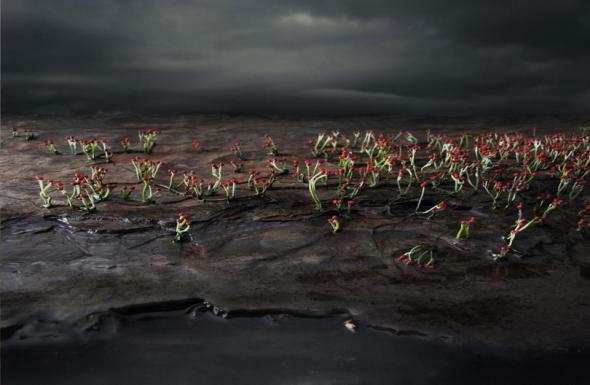
Cooksonia - Located in Ireland over 400 million years ago is said to be the first recorded plant on earth along with mosses and lichens
STRESS though is a number on factor within our life and is not just harming our own health, but others around us too along with harming the environment through negligence chaotic out of control thinking. I have listed below a number of plants that you may be familiar with or may not that can and have been proven time again to help relieve just stress plus other ailments however STRESS or anxiety is the number one subject within this botanical document that I wish to narrate on.
Stress is defined as an organism’s total response to an environmental condition or stimulus, also known as a stressor. Stress typically describes a negative condition that can have an impact on an organism’s mental and physical well-being. There are many “signals” to stress or anxiety attacks to feeling (anxious)
How does stress (interfere with our bodies complex organs?)
Brain
The brain plays a critical role in the body’s perception of and response to stress. However, pinpointing exactly which regions of the brain are responsible for particular aspects of a stress response is difficult and often unclear. Understanding that the brain works in more of a network-like fashion carrying information about a stressful situation across regions of the brain (from cortical sensory areas to more basal structures and vice versa) can help explain how stress and its negative consequences are heavily rooted in neural communication dysfunction. In spite of this, several important brain structures implicated in playing key roles in stress response pathways are described below.
Human brain (hypothalamus=red, amygdala=green, hippocampus/fornix=blue, pons=gold, pituitary gland=pink)
Hypothalamus
The hypothalamus is a small portion of the brain located below the thalamus and above the brainstem. One of its most important functions is to help link together the body’s nervous and endocrine systems. This structure has many bidirectional neural inputs and outputs from and to various other brain regions. These connections help regulate the hypothalamus’ ability to secrete hormones into the body’s blood stream, having far-reaching and long-lasting effects on physiological processes such as metabolism. During a stress response, the hypothalamus secretes various hormones, namely corticotropin-releasing hormone, which stimulates the body’s pituitary gland and initiates a heavily regulated stress response pathway.
Amygdala
The amygdala is a small, “almond”-shaped structure located bilaterally, deep within the medial temporal lobes of the brain and is a part of the brain’s limbic system, with projections to and from the hypothalamus, hippocampus, and locus coeruleus, among other areas. Thought to play a role in the processing of emotions, the amygdala has been implicated in modulating stress response mechanisms, particularly when a feeling of anxiety or fear is involved.
Hippocampus
The hippocampus is a structure located bilaterally, deep within the medial temporal lobes of the brain, just lateral to each amygdala, and is a part of the brain’s limbic system. The hippocampus is thought to play an important role in memory formation. There are numerous connections to the hippocampus from the cerebral cortex, hypothalamus, and amygdala, among other regions. During stress, the hippocampus is particularly important, in that cognitive processes such as prior memories can have a great influence on enhancing, suppressing, or even independently generating a stress response. The hippocampus is also an area in the brain that is susceptible to damage brought upon by chronic stress.

Locus coeruleus
The locus coeruleus is an area located in the pons of the brainstem that is the principal site of the synthesis of the neurotransmitter norepinephrine, which plays an important role in the sympathetic nervous system’s fight-or-flight response to stress. This area receives input from the hypothalamus, amygdala, and raphe nucleus among other regions and projects widely across the brain as well as to the spinal cord.
Raphe nucleus
The raphe nucleus is an area located in the pons of the brainstem that is the principal site of the synthesis of the neurotransmitter serotonin, which plays an important role in mood regulation, particularly when stress is associated with depression and anxiety. Projections extend from this region to widespread areas across the brain, namely the hypothalamus, and are thought to modulate an organism’s circadian rhythm and sensation of pain among other processes.
Spinal cord
The spinal cord plays a critical role in transferring stress response neural impulses from the brain to the rest of the body. In addition to the neuroendocrine blood hormone signaling system initiated by the hypothalamus, the spinal cord communicates with the rest of the body by innervating the peripheral nervous system. Certain nerves that belong to the sympathetic branch of the central nervous system exit the spinal cord and stimulate peripheral nerves, which in turn engage the body’s major organs and muscles in a fight-or-flight manner.
Pituitary gland
The pituitary gland is a small organ that is located at the base of the brain just under the hypothalamus. This gland releases various hormones that play significant roles in regulating homeostasis. During a stress response, the pituitary gland releases hormones into the blood stream, namely adrenocorticotropic hormone, which modulates a heavily regulated stress response system.
Adrenal gland
The adrenal gland is a major organ of the endocrine system that is located directly on top of the kidneys and is chiefly responsible for the synthesis of stress hormones that are released into the blood stream during a stress response. Cortisol is the major stress hormone released by the adrenal gland.
In addition to the locus coeruleus existing as a source of the neurotransmitter norepinephrine within the central nervous system, the adrenal gland can also release norepinephrine during a stress response into the body’s blood stream, at which point norepinephrine acts as a hormone in the endocrine system.
The immune system also plays a role in stress and the early stages of wound healing. It is responsible for preparing tissue for repair and promoting recruitment of certain cells to the wound area. Consistent with the fact that stress alters the production of cytokines, Graham et al. found that chronic stress associated with care giving for a person with Alzheimer’s Disease leads to delayed wound healing. Results indicated that biopsy wounds healed 25% more slowly in the chronically stressed group, or those caring for a person with Alzheimer’s disease.
It’s no surprise that constant stress can make people sick, which researchers have been studying now for some many years.
A study focused on 119 men and women taking care of spouses with dementia. The health of the caregivers was compared with that of 106 people of similar ages not living under the stress of constant care giving.
Blood tests showed that a chemical called Interleukin-6 sharply increased in the blood of the stressed caregivers compared with blood of the others in the test. Previous studies have associated IL-6 with several diseases, including heart disease, arthritis, osteoporosis, type-2 diabetes and certain cancers.
The study also found the increase in IL-6 can linger in caregivers for as long as three years after a caregiver had ceased that role because of the spouse’s death. Of the test group, 78 spouses died during the survey.
People under stress tend to respond by doing things that can increase their levels of IL-6.For example, they may smoke or overeat; smoking raises IL-6 levels, and the chemical is secreted by fat cells. Stressed people also may not get enough exercise or sleep, she added. Exercise reduces IL-6, she said, and normal sleep helps regulate levels of the chemical.
There are many animal pharmaceutical tested synthetic meications that can relieve stress from Amitriptyline, Chlorpromazine, Clonazepam, Clonazepan, Clonidine, Codeine, Valium, Cloziril, and many more all anti-psychotic to (neurological pain relievers such as Amitriptyline as explained) used to treat Neuralgia that is extremely unpleasant and effects one of the most sensitive nerves in the body the “ Trigeminal Nerve” that runs the entire length of your mouth, hence why when you feel tooth ache and it’s on the right hand side you can also feel pain on the left and within one’s ear as the Trigeminal nerve is connected to all nerve endings in the face that shoot pain receptors in many directions making your pain more intense as the infected “tooth” to the “virus or decay” is pressing on this nerve, hence why dentists to neurologists prescribe (nerve relievers to help relax the nerve thus = less pain).
Moving away from the pharmaceutical talk and more on the “natural stress relievers” I have listed as explained above, below for you handpicked stress relievers of which are “botanical aids”. You can purchase these in many local homeopathy natural medicine clinics or have them made up in front of you via tincture and to whatever strength.
Stress headache;
The cayenne pepper—also known as the Guinea spice is a great stress headache reliever “not a cure” and please do note that I use the word constantly “reliever” and not curer. Cayenne or better known in the bionomical language as Capsicum frutescens has been used in many alternative medicine therapies for the (relief) of migraine to stress induced headache that’s caused by mainly the blood vessels in the brain constriction and not allowing the receptors to flow through adequately. Clonidine would normally work here via opening the arteries in the brain as it acts as a vascular dilator. Capsicum frutescens also does the same job though and can be made into a spray or tablet to liquid form although many homoeopathists will tend to opt for the spray as the liquid from the cayenne will travel directly to the point intended this reliving pain over period of time.
Research suggests that capsaicin can also help relieve cluster headaches. In one study, people with cluster headaches rubbed a capsaicin preparation inside and outside their noses on the same side of the head as the headache pain. Within five days, 75 percent reported less pain and fewer headaches. They also reported burning nostrils and runny noses, but these side effects subsided within a week.

Capsaicin (pictured above)
Back and neck tension;
This is a common form of stress that will affect 7-10 people every week in one way or the other. Pain can range from moderate to severe giving the feeling that your entire body is knotted causing excruciating back, muscle and tendon stress pain.
65 million people in America alone suffer from chronic back pain. Conventional treatment of such injuries usually revolves around strong pain killers, anti-inflammatory drugs, and very often surgery. Unfortunately, it is too common that these treatments do not yield the recovery hoped for.
OK I have two very interesting and powerful alternative medicines here that have been proven to “relieve” and still many people don’t realise the wonders of this botanical alternative medicine[s].
lobelia inflate
Lobelia inflata is a species of Lobelia native to eastern North America, from south eastern Canada south through the eastern United States to Alabama and west to Kansas, Lobelia inflate is not your normal seasonal annum plant but in fact a type (1) perianal. How does it work?
Lobelia is a powerful antispasmodic, indicated by severe spasm. It doesn’t seem to work so well as a preventive, and so would not be an herb I would recommend for regular use, but rather help to resolve spasm when the muscles are seized up and just won’t let go.
To this end, it can be very effective, many people have used it to address grand mal seizures, and said it has worked better than anything they’ve normally used as an alternative to even synthetic pharmaceutical treatment. Lobelia, in large doses, can have an emetic effect – PLEASE NOTE Lobelia can in LARGE dosages induce vomiting, but the tincture taken in small doses is unlikely to produce this result.
I must stress this too and please don’t ignore my professional advice (please). Lobelia like any plant can cause gastrointestinal upsets thus inducing poisoning however (only in large extreme doses), some homoeopathists and herbalists will disagree with me to others, however I am giving you the advice from what I was taught at the Royal Horticultural Society (RHS) to use Lobelia please administering 1-10 drops of lobelia to the effected start low, and work your way up if needed.

Lobelia inflate (pictured above)
kava kava better known as Piper methysticum
The roots of the plant are used to produce a drink with sedative and anaesthetic properties. Kava is consumed throughout the Pacific Ocean cultures of Polynesia, including Hawaii, Vanuatu, Melanesia and some parts of Micronesia. Kava is sedating and is primarily consumed to relax without disrupting mental clarity. Its active ingredients are called kavalactones. A Cochrane Collaboration systematic review of its evidence concluded it was likely to be more effective than placebo at treating short-term social anxiety. Safety concerns have been raised over liver toxicity, largely due to the use of stems and leaves by supplement makers, as opposed to solely the root of the plant as dictated by traditional uses.
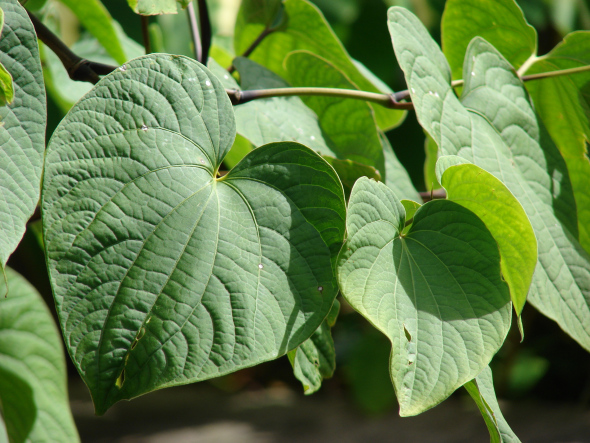
Piper methysticum (pictured above)
Kava Kava though is if used moderately and correctly will not cause liver toxicity such as illicit narcotics or liqueur.
Kava Kava is a very effective remedy for relaxing tension, and it works both on the mind and the muscles. Kava is very often used when people are holding their emotional or mental tension physically, but it can also be useful when the physical tension of an injury is causing a lot of mental anxiety and unrest. While I think Kava poses no problems when taken frequently, it’s an herb I’d restrict to use as needed to deal with the anxiety attending injury, and not the mainstay of treatment. Also, I do think kava works rather nice in larger doses, anywhere from 30 to 90 drops (1 to 3 “squirts” of tincture). Please consult homoeopathists and do not try to prepare yourself unless you’re fully qualified in botanical medicine.
Emotional stress and depressive stress;
Ashwagandha & St Johns Wort
Withania somnifera, also known as ashwagandha, Indian ginseng, poison gooseberry, or winter cherry, is a plant in the Solanaceae or nightshade family. Several other species in the genus Withania are morphologically similar. Yes Nightshades “can be toxic” however only the main species of the (deadly nightshade) Atropa belladonna a completely different species and genus.
Withania somnifera, is a perennial herb found throughout western India. It is also known as the Indian ginseng because of its revitalizing actions. Ashwagandha is a rejuvenating tonic in Ayurveda, and practitioners use the roots to treat general fatigue, nervous exhaustion, insomnia and stress. In their 2000 book “The Herbal Drugstore,” Dr. Linda B. White and medicinal plant expert Dr Steven Foster recommend ashwagandha to enhance your body’s mental and physical performance and its ability to cope with stress. You can use ashwagandha teas, tinctures and capsules, but consult a qualified health care professional for dosage instructions. Do not use ashwagandha if you are pregnant, have stomach ulcers, autoimmune disease, or if you are having surgery with anaesthesia.
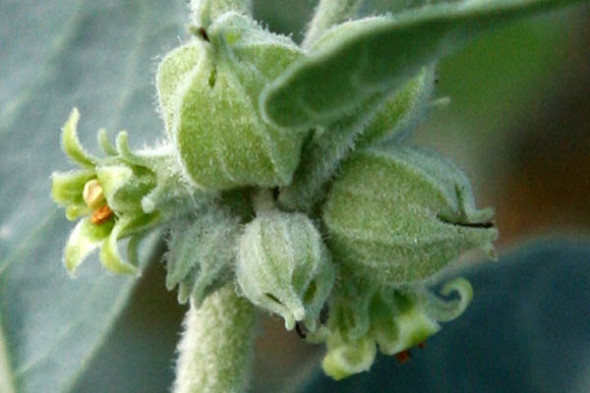
Withania somnifera (pictured above)
You can purchase Ashwagandha here - http://www.google.com/shopping/product/7563134337631719525?q=Ashwagandha&hl=en&rlz=1C1CHMO_enGB520GB520&bav=on.2,or.r_gc.r_pw.r_qf.&bvm=bv.42553238,d.cGE&biw=1517&bih=664&sa=X&ei=4sIdUde_KpDxigLZwIGgBg&ved=0CG4Q8wIwAA
St Johns Wort – Hypericum perfoatum or H. vulgaris is and has been used for some many years across the planet as an emotional stress and depression reliever lifting moods and helping your bodies to battle immune stress and emotions.
Now available on prescription due to cost in herbalist formulation of this amazing plant it can be located in Germany, France, England, and Spain via your local physician. Please note that in some parts of the United Kingdom it’s not available due to funding and what I could locate as a discriminatory post code lottery.
St. John’s wort is most often taken in liquid or pill form. The dried herb may also be used as a tea.
The most common dose used in studies has been 300 mg, three times a day. Preparations in the U.S. have varied amounts of active ingredient in them. So be careful to note how much you’re getting in your tablets.
Please NOTE;
You should be alert for any of the following effects if you are taking St. John’s wort:
- allergic reactions
- fatigue and restlessness with long-term use
- increased blood pressure
- increased sensitivity to the sun — especially if you are fair-skinned and taking large doses
- stomach upsets
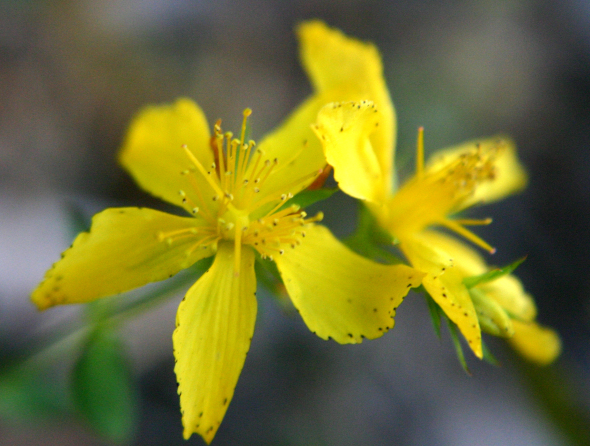
St Johns Wort (pictured above)
Nervous tension/stress/ emotional stress;
Valeriana wallichii known as Tagara
Valeriana wallichii, is a rhizome herb of the genus Valeriana and the family Valerianaceae also called Indian Valerian or Tagar-Ganthoda, not to be confused with Ganthoda or the Long Pepper. It is a herb useful in Ayurvedic medicine used as an analeptic, antispasmodic, carminative, sedative, stimulant, stomachic, and nervine.
A perennial herb rich in volatile oils Ayurvedic practitioners use it to treat emotional stress, nervous tension, insomnia, muscle spasms, headaches and anxiety. The active ingredients are called valepotriates, and they have potent antispasmodic and anti-anxiety action. In her 2009 book, “The Holistic Herbal Directory,” herbalist Penelope Ody says that tagara can also be applied as a cream topically to treat stress-related skin conditions like eczema. Do not combine tagara with other sedatives or antidepressants.
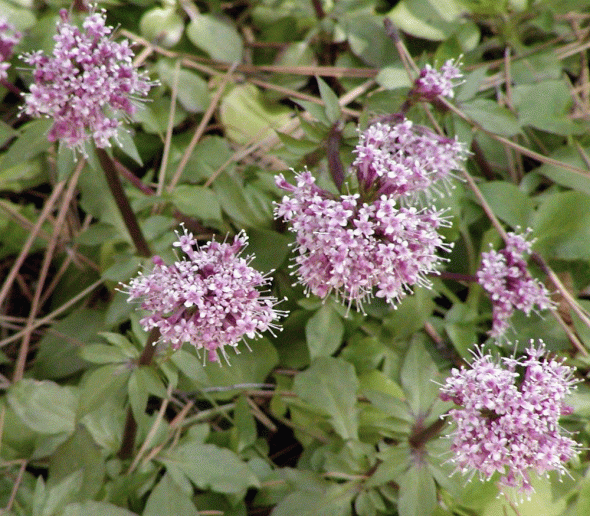
Valeriana wallichii (pictured above)
Please read more here http://www.a2xanxiety.com/reports/anxiety.html?stress?weirdherbscombo?www.livestrong.com
Although I have named only a small handful of the most stressful complaints that can be reduced through using natural herbs there are thousands of botanical species that can be purchased online or at your local herbalist homoeopathist.
Thank you for reading
Dr J C Dimetri V.M.D, B.E.S, Ma, PhD , MEnvSc
Please note in the first video below the speaker quotes “there are no side effects” this is untrue and there are indeed side effects like with synthetic medications. Please always consult your practitioner, herbalists, or homeopathic therapists,
Please note International Animal Rescue Foundation shows BOTH SIDES of every story and wish to explain in great detail our own findings and what knowledge that we are already aware of;
Environmentalism Chapter 19 - Plant smuggling
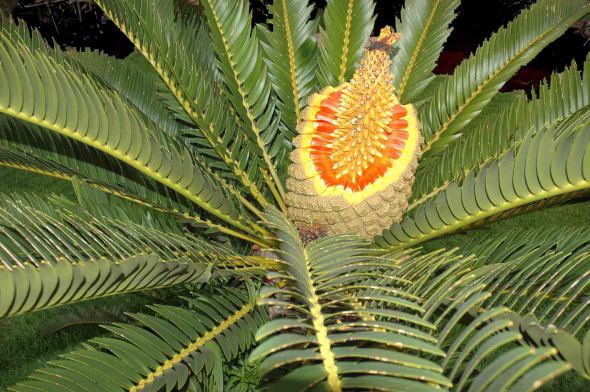
On a regular daily basis we often here within the news animal parts that are smuggled along with narcotics and fire arms too. Smuggling is big business and if it’s freely obtainable such as species of animals, and money can be made relatively quickly then it’s a job well done for the smuggler.
Regrettably animal parts smuggling we are all now aware is almost finically nearing that of narcotics and fire arms raking up some millions of dollars just for counterfeit pharmaceuticals, to clothing within the fur trade of which a single Tiger pelt can fetch up to $100,000 or more.
What we don’t view documented much on is illegal bulb/plant smuggling, and I’m not talking about the ones that light your rooms. Bulb, root stock, seed’s to even whole entire plots of land are being dug up and illegally then smuggled across the borders that is now starting to rage out of control.
Back in 1993 I worked with the Romanian border police for two months to gauge experience on this as botany is one of my specialised subjects which I hold a Bachelor’s degree on, not to mention other subjects I have studied. The trade in plant and bulb smuggling has always been big business in more or less the same way as cattle rustling to animal parts smuggling. One of the main reasons why it’s not really heard of though within news and media is because there are billions of species of plant life upon our planet to date compared to animals which are dwindling in numbers rapidly. However this does not under any circumstances mean it’s not causing environmentalists and agriculturists to horticulturists a rather nasty headache.
The smuggling of plants, bulbs, root stock to trees and seeds is fairly un-documented on within online forums to news and media so please allow me to explain how bad the problems are with regards to endangered botanical species that are being wiped out to bringing with them across international borders plant stock and seeds that are actually infested with pests and diseases that can if they take hold within a nation that has no real agricultural to botanical problems or professional agricultural and botanical management cause widespread billion dollar damage to the environment to even human health placed at risk from crop destruction through human negligence and greed.
Plant smuggling as I am going to refer to it can be dated as far back as the 1990’s but didn’t really take off until the 1950’s – 1960’s within America on large scale that saw many pests and diseases brought in to the United States of America. Smuggling of plant stock in Europe is and always has been big business in Europe dating back to the late 1890’s to present.
One very important documented seizure in the United States that I can only lay a date of around the 1950’s I have recorded below, and hadn’t it been for eagle eyed customs officers ceasing the containment then America could of faced a catastrophic agricultural and botanical nightmare causing billions upon billions of lost crop and revenue due to pest infections from foreign seed, root stock, and bulb, not to mention mass retail breakdown from cereal crop damage that the public mostly rely with regards to consumption.
The news article reads;
It was an ordinary looking package in the hands of an honest-appearing man who stepped from the steamer Charlotte M. Hall onto the Baltimore dock not so long ago.
The parcel had passed the customs officials, and had, apparently, a clear road to its destination anywhere in the United States. Yet it contained destructive agents that bade fair to wreck hundreds of millions of dollars’ worth of property, and that might have left a trail of poverty and ruined homes throughout a period of many years.
Fortunately the U. S. government has eyes, concealed in unexpected places. This package aroused the suspicion of an inspector of the Plant Quarantine and Control Administration of the U. S. Department of Agriculture. He got possession of it, questioned the owner, opened the parcel, and saved the nation from a loss than can scarcely be calculated.
The passenger who landed that day from the Charlotte M. Hall was a Mississippi planter, returning from a business trip to Brazil. He was a progressive farmer, and his motive—the improvement of his cotton crop —was legitimate enough. But the package contained 59 separate sets of cotton seed, every set infested with living larvae and adults of the dread pink bollworm, the most destructive enemy of cotton in the world. Already it has destroyed the cotton industry of the Hawaiian Islands, and annually inflicts tremendous damage upon the cotton planters of Egypt, Brazil, and Mexico— in fact every great cotton growing country in the world save the United States.
Experts say that if this innocent appearing personal package had not been intercepted through the vigilance of a plant inspector, it would have carried to the heart of Mississippi enough living pink bollworms to have started an invasion of the entire state which might easily have gotten beyond control before discovery.
This incident is only one of the many thousands involving similar interceptions made annually by the inspectors of the Plant Quarantine and Control Board. Their job is to prevent plant and fruit smuggling, innocently intended, or otherwise; and their personnel, while comparatively small numerically speaking, is of the highest calibre. Inspectors are stationed at all principal ports.
Down along the Mexican border the Federal officers have their share and more of adventures, humorous and dangerous. Even some of the old-timers hardly dare put their hands in their pockets while working in certain hard-boiled communities, for fear of being shot at from behind. The license tags of their trucks carry the letters, U. S. D. A., meaning of course, United States Department of Agriculture. But thirsty souls, and there are many along the border, are prone to take a different interpretation—United States Dry-Agent! And lovers of the corn and rye like to take the law in their hands—when in doubt.
And now for some of the tricks of the smugglers! The following side splitting incident took place at the port of New York a few years ago. It seems that a woman arrived from Jamaica, and in her possession was discovered a basket containing some plants. They did not meet the current rigid requirements so a plant inspector explained that her plants could not be brought in. The good woman explained that she really wasn’t greatly interested in the plants themselves, but that she was anxious to have the soil for her prize cat to play in—he did so love to frolic about in Jamaica soil.
A tear or so appeared in the official’s eye— for he was a kindly soul. However, it did not remain there long. After being hard-hearted enough to do his duty and advise the dowager that she must return home sans the soil, he gave it the thorough Sherlock Holmes. Hardly had the good woman departed when his astonished, but no longer humanitarian eye, noted two bottles of Jamaica gin buried therein.
Joseph of Biblical fame had a coat of many colours. But the inspectors around Brownsville, Texas, and the notorious Tia Juana district, are still chuckling over the Mexican of many pockets. Some years ago this man came waddling across the border at such a slow rate that he aroused suspicion. To begin with, he was plump, but his avoirdupois seemed to be not altogether of the flesh. And it was not, as examination of his portly person revealed. Inside his coat was an ingeniously devised vest containing many pockets filled with alligator pears. Now, these delicacies are likely to contain an unwanted kind of pest. This “inventor” extraordinary was tried, found guilty, and given a stiff fine for his ambitious efforts to pull a fast one on your Uncle Samuel.
A somewhat similar incident, but of a far more serious nature, took place on the border near El Paso recently. A very dignified gentleman of middle age who claimed to be some sort of a scientist presented his trunk for Federal inspection. Nothing contraband seemed to be on hand until one of the inspectors nonchalantly plunged a hand into a bulky looking pile of the man’s coats and trousers. Encountering numerous hard objects, the inspector made a thorough investigation and found no less than 56 contraband orchid plants. That the offender’s intentions were anything but innocent was revealed by the fact that every one of the plants had been sewed painstakingly into the garments with an obvious intent to deceive. Imagine Mr Scientist’s embarrassment when he saw his well worked plans go awry, even to the point of earning a substantial fine.
Then there was the case of the American woman who crossed the Mexican border into the United States wearing an extremely full skirt of a type common to certain well known religious sects. Devout looking was this lady, yet there was a certain something about her demeanour that aroused suspicion, so a lady inspector was instructed to give her a thorough inspection. This brought out the interesting fact that the good woman had tied a huge bag, filled with contraband fruit, around her waist. Which may explain why she chose such full skirts on that eventful day?
But for sheer ingenuity, consider a package lately received by postal inspectors. At first glance it consisted of a number of heavy magazines. But their weight was so out of proportion to their size that the inspector opened the “magazines”. Whereupon he found many bunches of contraband nursery stock, alongside of which a couple of potatoes had been packed in order to afford moisture to the stock.
Other clever ruses of the smugglers are: false bottomed trunks and barrels, besides contraband fruits and plants which have been hidden in partially baked loaves of bread.
End of news article —-
Problems have gotten far worse though since this time and we cannot just blame the smuggler as it is indeed as quoted above the innocent member of the public that has travelled to local or internal continents, spied the eyes in such a beautiful species of plant of seed crop then removed that and brought it into their home nation on returning from their vacation.
Customs are now seizing daily many plant species that are non-endangered to critically endangered, to fruits vegetables and seeds all of which can and will present a massive biohazard. Its takes only one to two pests to escape from the contraband or illegally smuggled plants to enter agricultural land, or botanical crops and within one to two weeks billions in damages are caused, human life is placed in danger from hunger or famine as of infested non-edible crops, and the environment suffers more due to herbicides, insecticides, and pesticides leached in to the soil, streams and seas from chemical land run off.
Main seizures to date and current trends are that of mainly bulbs and, orchids, and seeds that can fetch on the black market millions of euros to dollars. On July 24, 2001 (ENS) - Six men were charged with crimes related to the illegal importation of internationally protected plants called cycads the men were arrested by special agents of the U.S. Fish and Wildlife Service that Friday.
Cycads, which look like palms or tree ferns, are a group of plants whose ancestors date back more than 200 million years. Some cycad species are endangered or threatened in the wild from habitat loss and over-collection from botanical enthusiasts to general members of the public that are looking at sparking the garden up with lush green tropical growth without realising the mass damage they are causing to the environment and potentially other crops.
Cycads are protected under the Convention on International Trade in Endangered Species (CITES), a treaty through which the United States and more than 150 other countries regulate global trade in imperilled animals and plants, these palm like tropical species of plant are the most desired simply because of their appearance.
The idiotic and selfish individuals that where arrested are Peter Heibloem, 47, of Queensland, Australia, and Ernest Bouwer, 56, of Sandton, South Africa, were arrested that Friday and charged with 15 counts of conspiracy, smuggling, and making false statements in an indictment unsealed that Friday in the U.S. District Court in San Francisco.
According to the indictment, Heibloem, Bouwer, and three others charged - John Baker of Gauteng, South Africa, Ian Turner of Harare, Zimbabwe, and Rolf Kyburz, of Queensland, Australia - sent approximately $542,000 worth of protected cycads to the United States from South Africa, Australia, and Zimbabwe, had ANY pests and diseases escaped into the atmosphere that could of caused potential mass crop damage thus endangering human and animal life to even killing through crop famine then the men could have been looking at a potential death sentence or lengthy stay behind bars.
Also charged in the indictment and arrested on that Friday, July 20, is Donald Joseph Wiener, 64, of Mexico. He is alleged to have knowingly purchased approximately $200,000 worth of these plants from Heibloem.
Rolf Bauer, 44, of Johannesburg, South Africa, and Jan Van Vuuren, 54, of Centurion, South Africa, also arrested on that same Friday, are charged with conspiracy, smuggling, and making false statements in a separate 29 count indictment unsealed in U.S. District Court in San Francisco.
According to the indictment, these two men sent more than $300,000 worth of protected cycads to the United States from South Africa. They allegedly used invalid CITES permits for the commercial shipments and falsely labelled many of the plants to cover up the lack of a valid permit.
The Service investigation also resulted in charges against three individuals accused of trafficking in protected orchids. Antonius Juniarto of Surabaya, Indonesia, and Iwan Kolopaking of Jakarta,
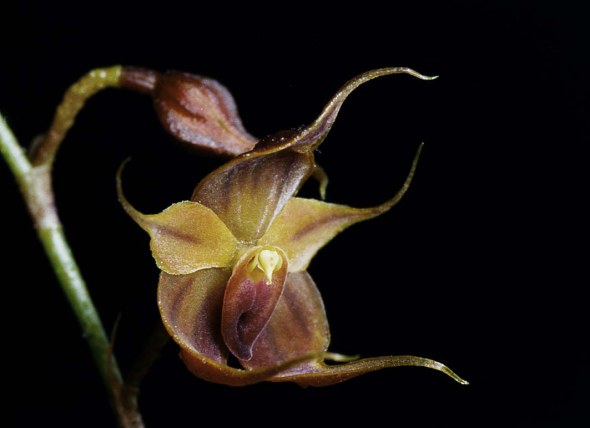
http://boughtonscoffeehouse.wordpress.com/2011/09/15/rare-orchid-named-after-a-coffee/
Indonesia, have been indicted in the Northern District of California on 21 counts of conspiracy, smuggling, and false statements related to the shipment of CITES Appendix I orchids into the United States from Indonesia.
Both remain at large and to this day 2013 have yet to be brought to justice. According to the indictment, the two men sent multiple packages of orchids through the mail with customs declarations falsely identifying the contents as toys. A separate indictment in the Northern District of California charges Terence Leung of Hong Kong with four counts of smuggling related to shipments of CITES Appendix II orchids from Hong Kong into the United States. Leung also remains at large to this date of 2013. If you know of these men, seen or are living please contact International Animal Rescue Foundation’s Conservation Investigation Crime Unit (CICU) at [email protected] immediately, alternatively you can contact your local sheriff.
The maximum penalty for each of the charges against these men is five years in prison and a $250,000 fine. An indictment contains allegations against an individual, and all defendants must be presumed innocent of the charges against them unless they are convicted.
The smuggling of plants is BIG business and also very dangerous to the environment that is not being documented on enough throughout animal and environmental sectors and now has to be taken seriously and indeed much awareness has to ploughed throughout the community to help nail the smugglers but also to educate the public on the dangers of brining contraband through the ports.
Rare plants have also been a target for smugglers, with one high-profile bust in June 2011 catching two Dutch citizens trying to take 57 rare inverted tulip bulbs out of Turkey, along with more than 5,000 flower seeds and roots from 160 endemic species. Though the Dutch are often associated with tulips, the flowers actually have their origin in Turkey and other western Mediterranean countries — the inverted tulip grows only in a specific region of Erzurum, Turkey. Taking endemic species outside of the country without official permission is illegal in Turkey.
Illegal attempts to spirit endemic species out of the country appear to be on the rise in Turkey, where officials have recently busted a number of would-be smugglers with large cargos of butterflies and other insects, as well as rare tulips and other plants. A group of people trying to leave the country by car through Bulgaria were apprehended in 2011 with thousands of bugs hidden away in boxes and tubes, the Anatolia news agency reported. Biology professors who examined the cache “identified 6,014 bugs from 48 different species, including ladybugs, cockroaches, and various types of stag beetles, grasshoppers, flies, and bees” from the Black Sea region and the northern part of Central Anatolia. The haul was reportedly worth 500,000 Turkish Liras, or about $300,000.
Agricultural damage and food shortage;
When plants and plant products are imported or smuggled to the EU and other nations, there is a risk that quarantine pests come with them. Quarantine pests are serious plant pests like insects, mites, nematodes, fungi, bacteria, virus and similar organisms that have no or limited presence in the EU and that may cause large financial consequences if they spread here.
EU and international countries have common rules on the import of plants. These rules apply to both private individuals and to companies. However, there are certain exceptions for private individuals. You can locate more information here https://www.ippc.int/index.php?id=nppoAUS please type into the search engine what nation your wish to view that will show a list of current agricultural and botanical problems to date.
Indian medicinal plants are in great demand in the international market. Varieties like the saptarangi plants (Salacia Reticulate) and guvada (Mappia Foetida) medicinal plants are abundantly available in the forests of Khanapur, Bheemgad, Talewadi, Aamgaon Holda regions of Belgaum district. Medicinal plants are found in abundance at Kuveshi, Mayare, Castle Rock and Anamod forest regions near Diggi in Joida taluk.
Spices like Dalchini Moggu (cinnamon buds) and its leaves are also smuggled out. The Forest officers had seized a lorry transporting guvada leaves about three months ago near Jagalpet. The department has to its credit a few such cases. The medicine prepared from guvada leaves is useful in treating cancer and liver conditions and is in great demand in China and Japan, according to a forest officer.
Innocent people residing in the forests of the border areas are roped in for smuggling. Dearth of staff in the Forest department is a major setback in tackling illegal activities. Since most of the staff is aged around 50, they are unable to conduct surprise raids. A team of enthusiastic youth is required in the department to tackle the menace, says the forest officer.
More awareness;
The Wildlife Enforcement Group is calling for more awareness of illegal plant trading, as smugglers earn tens of thousands of dollars selling endangered New Zealand orchids overseas.
Two men from Czech Republic have been charged under the Trade in Endangered Species Act after allegedly trying to smuggle a number of threatened and protected orchid species taken from national parks out of New Zealand.
The Wildlife Enforcement Group’s investigator, Peter Younger, says there’s a huge demand because many of New Zealand’s orchid species are unique. He says the illegal trade in plants doesn’t attract the same attention as other endangered species.
The Wildlife Enforcement Group has officers from Customs, the Department of Conservation and Ministry of Agriculture. Younger says illegal trade in plants gets overlooked by enforcement agencies compared to more glamorous endangered species like elephants or pandas. Younger says more resources are needed to combat growing orchid smuggling.
A spokesperson for the Customs Service, Rochelle Turnbull, says the orchids are very attractive to international traders as many self-pollinate and are very rare. The accused smugglers appeared in Manukau District Court on Monday. They were remanded without plea.
For information on Australian biosecurity please view here http://www.dfat.gov.au/facts/quarantine.html
Plants that are most commonly smuggled are;
- Endangered tulips
- Narcissi
- Bluebells
- Snow drops
- Hyacinths
- Snakes head lily
- Lille’s (general)
- Spices and herbs
- Rhizomes
- Seeds
- Root stock
- Wild species (mostly illegal to excavate in most EU and International nations)
Some of the most invasive pests and diseases that can come with illegally imported stock / contraband
- Fire fly
- Green fly
- Black fly
- Fruit fly larvae
- Brown citrus aphid
- Citrus leaf minor
- Leaf minors (general)
- Oriental fruit flies
- Asian citrus Psyllid
- Small hive beetle
- Bromeliad weevil
- Cactus moth
- Mexican fruit fly
- Tropical soda apple – please read here http://plants.ifas.ufl.edu/node/426
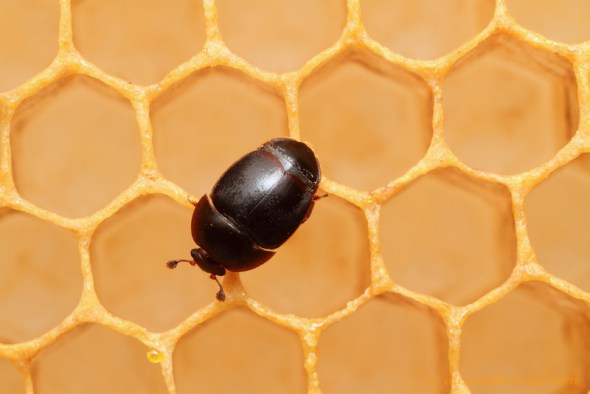
Damage to crops and other botanical species can be vast in scale and also life threatening;
Primary Industries Minister David Carter explained in June 2012 the new Biosecurity Recovery Framework will run alongside existing support for farmers who suffer from droughts and floods.
“The government recognises that biosecurity incursions can have economic, environmental and social impacts that can hit production businesses hard and take time to recover from,”
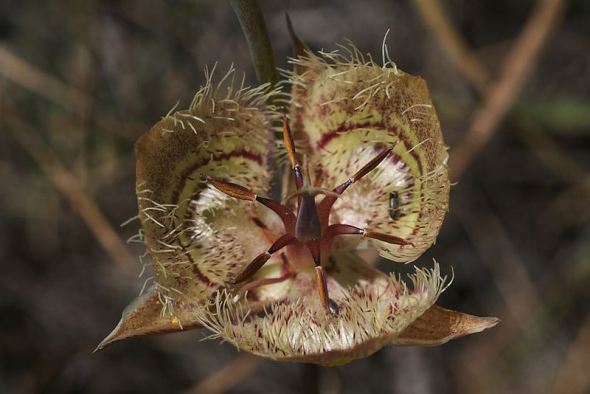
“The new framework will make recovery measures available to people seriously impacted by a disease or pest incursion.”
In 1978, the horror movie, “The Swarm,” hit the nation’s theatres, featuring vast hordes of killer bees that wreaked havoc in south Texas. Chock a block with big name stars — Henry Fonda, Olivia de Havilland, Michael Caine, Richard Widmark, Fred MacMurray, Richard Chamberlain, Ben Johnson, Lee Grant, Patty Duke, Slim Pickens — the $21 million production (a lot of money in that era) was a colossal box office bomb, lasting only a couple of weeks in theatres. Although it was subsequently labelled one of the worst disaster movies ever, four decades later it enjoys something of cult status among horror movie buffs.
“It was a cheesy movie,” says Blake Layton, Mississippi State University Extension entomology professor, “but it was also somewhat prophetic in that we’ve seen Africanized honeybees, which were dubbed ‘killer bees,’ move into the southern U.S. and become established.”
While not nearly so dramatic on a human scale as in the old movie, many non-native pests, from fire ants to slithery, slimy worm-like creatures, have come into the U.S. and made themselves at home, often causing widespread economic damage and other disruptions to life and commerce, he said at a recent meeting of the Starkville, Miss., Ag Club.
“So, in reality, we can say ‘the swarm’ is still coming.”
Africanized honeybees, which are a sub-species of the common European honeybees, came into Texas in 1990 and have spread from there, Layton says.
“Their movement has been more westward than east, although they’re in south Louisiana, only two parishes away from Mississippi. They are much more aggressive than our native honeybees. When they do move into Mississippi, it will change the way we deal with honeybees.
“Even our ‘native’ honeybees aren’t native; they were brought here by settlers from Europe. The Indians called them ‘white man’s flies.’”
There are more than 1,700 significant insect pest species in the U.S., Layton says, and half or more have been introduced in one way or another.
“The boll weevil is a prime example of how a non-native pest can move in and wreak economic havoc,” he says. “It cost Mississippi farmers millions of dollars before it was finally eradicated. We’ve not had a boll weevil in the state in more than two years.”
Imported fire ants have spread across most of the lower Southeast and across south Texas and into parts of Oklahoma.
“Thus far, we’ve not been able to stop them,” Layton says, “and there’s nothing on the horizon that promises to halt their spread.”
Another species, Argentine ants, “have been here for a long time, but haven’t spread as fast as fire ants. South of Jackson, Miss., they’re quite abundant. They don’t sting or build visible mounds, and they’ll run off fire ants. The difference is that they will come inside houses and other buildings.”
Bio Insect Terrorism;
Following the 9/11 attacks the U.S. government assigned hundreds of agricultural scientists responsible for stopping invasive species at the border to anti-terrorism duties. The result has been that dozens of foreign insects and plant diseases managed to slip undetected into the United States
Experts now say that the problem has reached the point where the quality of the U.S. food supply is under threat. The economic damage is not in dispute: scientists say that the foreign pest explosion cost billions of dollars in crop damage and eradication efforts from California vineyards to Florida citrus groves.
Horrifying Biosecurity facts;
- Nineteen Mediterranean fruit fly infestations took hold in California, and the European grapevine moth triggered spraying and quarantines in California’s wine country.
- The Asian citrus psyllid, which can carry a disease that has decimated Florida orange groves, crossed the border from Mexico, threatening California’s $1.8 billion citrus industry.
- New Zealand’s light brown apple moth was detected in California, prompting the government in 2008 to bombard the Monterey Bay area with 1,600 pounds of pesticides. The spraying caused respiratory problems and killed birds. Officials spent $110 million to eradicate the moth, but the effort failed.
- The sweet orange scab, a fungal disease that infects citrus, appeared in Florida, Texas, Louisiana, and Mississippi, leading the states to impose quarantines.
- Chili thrips, rice cutworms and the plant disease gladiolus rust also got into Florida, which experienced a 27 per cent increase in new pests and pathogens between 2003 and 2007.
- The erythrina gall wasp decimated Hawaii’s wiliwili trees, which bear seeds used to make leis.
- Forests from Minnesota to Washington State were also affected by beetles such as the emerald ash borer, many of which arrived in Chinese shipping pallets.
The number of pest cases intercepted at U.S. ports of entry fell from more than 81,200 in 2002 to fewer than 58,500 in 2006, before climbing back up in 2007, after complaints from the farm industry. The situation for 2012 is now completely out of control and it’s becoming worse with the illegal smuggling of plant, bulb, seed, and other non-native pests and diseases.
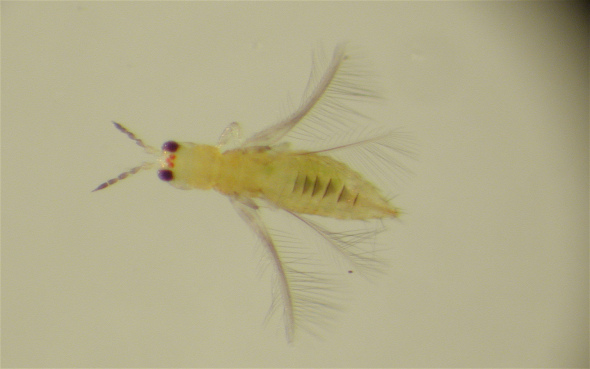
December 2012 - Investigators from the Department of Agriculture, Fisheries and Forestry discovered the Asian tiger mosquitoes (Aedes albopictus) inside two glasshouses at a quarantine station on Melbourne’s outskirts.
The department says the mosquitoes can carry dengue fever. Spokesman Wayne Terpstra says they represent a potential risk to human health. “They are a known vector for what they call arboviruses, such as dengue fever,” he said. “So they do pose a health risk for humans if they were to establish.” The department says that no Asian tiger mosquitoes have been found outside the glasshouses.
The plants will be destroyed and the quarantine stations sprayed with insecticide. Officials say further investigations are underway to confirm all mosquitoes have been exterminated.
http://www.msmbb.org.my/apjmbb/html181/181ap.pdf
Should the plant/seed/bulb and other green stock smuggling not halt then we are/could be looking at a potentially dangerous situation here that would cause widespread famine, hunger, to cereal crop prices shooting out of the window because of stock having to be imported.
Animal parts smuggling is just as big on the black market than it is with plants, narcotics and fire arms with plant smuggling now being named as the new “animal parts trade” and it’s being primarily fuelled by the current trend hitting of internationally with regards to alternative traditional Chinese medicine and traditional Indian medicine. We are playing with fire and the general public are not taking this seriously.
Customs officers are doing all they can to seize the most potentially dangerous bio hazard stocks, but like I have explained it only takes one or more non-native insect species to enter the biosphere then we could be looking at dangerous consequences for all.
In November 2012 it was again reported;
A large tract of paddy crops has been damaged due to invasion of Leda (swarming caterpillar) insect which has ruined the economy of the thousands of farmers in the district here.
“Help from the administration, however, is yet to reach the villagers, more than three weeks after the first swarm of insects arrived here to ruin this year’s paddy. The insects are black in colour and measuring less than an inch in length. Most of the crops have been destroyed in the area by the insects. The farmers, who are hardly able to fight against the pests, now hope to reap less than one-eighth of their usual harvest. The first batch of pests arrived three weeks before,” said district Krusaka Sabha secretary Gayadhar Dhal.
About 8,000 hectares of paddy have been affected due to insect attack, alleged Dhal. However, the district agriculture officer said that only 487 hectares of paddy fields in the district were affected.
“After arriving, the pests first settle on the inner surface of the young leaves of the paddy plant. Usually, two insects share a single leaf. Each insect lay at least 50 eggs before being shaken off the leaf .The eggs are hatched within a week and the new-born insects stay back, drawing sustenance from the young, green leaves. When they leave, the leaf is dead and its colour is rendered pale white,” described an official.
A large patch under paddy crop in Bari, Dharmasala, Binjharpur and Badachana area turned white from their usual leafy green. The rich farmers tried to prevent the onslaught by spraying insecticides on the plants, but this only helped widening the rich-poor gulf. The pests, fleeing from the insecticides-applied areas, took position in the neighbouring fields, where the farmers could not afford to buy the costly chemicals and apply them, said the farmer leader.
The smaller farmers, therefore, lost all their saplings. One of them is Rakesh Samal, a resident of Bari. He has five acres of land and had invested Rs 5,000 this year for paddy cultivation. Last year, the land yielded sufficient profits for him. But this year, he is a worried man as he has lost all hopes of getting a good harvest. The condition of bigger farmers like Gatikrushna Rout of the same village is only slightly better. His family owns eight acres of land. Last year, each acre gave him 80 quintals of paddy. However, this year, after spending several hundred rupees on insecticides, he hopes to get, on an average, only 40 quintals from an acre, said Rout.
The villagers are sore at the lack of response from the administration. Several pleas have been made at the block development office but no official has turned up till date, the farmers complained.
The district agriculture officials have also been paying only lip-service towards their problems, alleged many farmers by not providing pesticides to the affected farmers.
When contacted, the district agriculture officer told this paper, “Twelve mobile groups of the agricultural office have been providing medicines to the farmers to save their paddy from the insects. A senior official from the Agricultural department visited some of the insect-affected paddy fields on Saturday and would give his report on the situation soon.” He added that, for the time being, the department has been freely distributing pesticides to the farmers to tackle the menace.
As angry as I am writing this it does not get any better, SOIL is also being smuggled not to mention tea leaves, tea plants, and now TOBACCO PLANTS to grow in European homes due to the crackdown on illegally imported tobacco that is costing the Inland Revenue department millions in lost revenue. The smugglers then go to real professional lengths and purchase the machinery from Asia or the Americas to then “process and make” their dangerous and potentially killer cigarettes. August 2012 http://www.customs.gov.sg/NR/rdonlyres/6185D945-DC37-4EA6-B5B7-3EC35CC8C60E/24314/PressReleaseonsmuggledsoilwebcopy.pdf soil smuggled “and this would have been used for one thing only (narcotics). This soil could off caused an entire nation to lose billions from foreign crop pests placing human and animal life in massive danger.
PLEASE DO NOT BRING PLANTS, SEEDS, FRUIT, OR OTHER PROHIBITED CONTRABAND INTO THE NATIONS THAT YOU ARE VISITING, PLEASE BE AWARE OF THE BIOHAZERDS IF YOU ARE UNSURE PLEASE CONTACT US ON;
Dr J C Dimetri V.M.D, B.E.S, Ma, PhD , MEnvSc
Chief Executive Officer
The video above may be a little confusing with regards to the language barrier. What is actually ongoing is the illegal importation of Khat, Khat is used as a medicinal hallucinogenic that reaches many nations all over the world in non-plant form in a powder like substance. Customs just allowed this illegal import to enter from Ethiopia, that was in PLANT form carrying some masses of plant bio hazards. The potential for many pests and diseases to leak from this plant importation is colossal and what damage it has done to nation will never be known. What damage this is doing to other nations though is VERY well known as many people travel to distant or local nations with this drug that’s similar to Ecstasy with the drug in PLANT form that they the chew on to obtain the desired effects.
By illegally importing other plants and bulbs you could face mass criminal charges. These pests below the Soda Apple caused massive crop infestation in the USA wiping out billions in lost crops.
Try and smuggle into Australia then THINK AGAIN, Australia has one of the tightest border controls in the world.
Or you could be caught by “armed narcotic gangs” the choice is your’s but whatever you do please keep your botanical species in your own nations and DON’T bring them into others or you could be facing stiff penalties to even life imprisonment;
Environmentalism Chapter 18 - Ocean Pollution
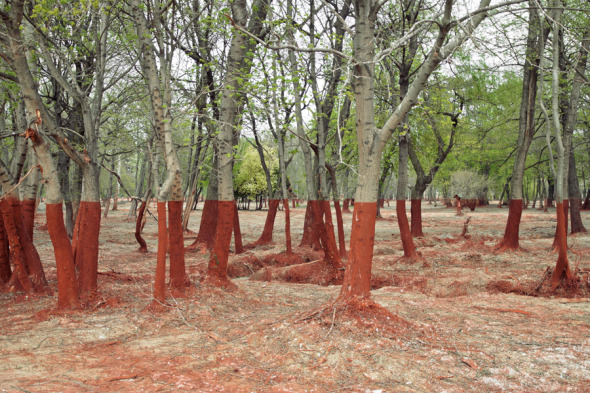
How clean do you believe the oceans are? Well I would be lying if I actually said they are indeed crystal clean and even the deep crystal blue waters of the pacific, Indian and Mediterranean oceans that are teaming with thousands of aquatic life are polluted with many toxins and organisms that you cannot even see that are harmful to you, other aquatic marine life and to animals to botanical species on land from which the oceans often invade from coastal flooding and Tsunamis to ocean oil spills.
Just because the flags are up to on the beaches indicating that water toxicology tests have proven it’s safe to swim, these tests are only basic and are not necessarily all the time carried out by toxicologists to marine biologists.
One doesn’t have to be a conservationist to even a scientist to work out that the more earth’s population grows the more sewage and waste from our homes are produced and it’s now concerning many conservationists including ourselves International Animal Rescue Foundation © that have seen a vast impact of marine life wiped out just from what we call “liquid toxin” pollution.
Toxins from sewage plants are just the least of the oceans worries too, with super fuel tankers crossing sensitive areas of sensitive ocean biodiversity, along with floating drilling platforms and nuclear power plants emitting radioactive water to human sewage and debris waste, which is now reaching critical concern levels which one must act to prevent a large scale catastrophe such as the 2010 BP PLC Deep Sea Horizon leak that saw billions of dollar;s of damages caused to land, and thousands of fish, to avian life washed up dead on the oceans. BP PLC now has to pay in compensation $7.8bn to resolve economic and medical claims from more than 100,000 businesses and individuals hurt by the nation’s worst offshore oil spill. The settlement has no cap and the company could end up paying more or less.
In the early 1950’s to 1960’s ocean cleanliness was fairly top grade with pollution being low key to a degree, although still present and high in nations of which were mainly third world nations, and large industrial continents from America to Asia, pollution levels where not that high to what we are seeing today. As a conservationist too and I have to be truthful I wouldn’t allow my children to swim in half of “shoreline” oceans to date because I am more than aware of what lurks beneath and on top.
Taking a look at China the total sewage discharge per billion tons has not really changed at all, and from census we could find they all measure up to exactly the same with only the year of 1996 missing.
China’s total sewage per billion tons of discharge I have recorded below, I have picked China as this nation is the top polluter with India and America second although America is trying to halve it’s pollution its a slow laborious process.
- 1990 350 billion tons of sewage discharged into the ocean
- 1991 320 billion tons of sewage discharged in to the ocean
- 1992 360 billion tons of sewage discharged in to the ocean
- 1993 340 billion tons of sewage discharged in to the ocean
- 1994 370 billion tons of sewage discharged in to the ocean
- 1995 368 billion tons of sewage discharged in to the ocean
- 1996 ——————-NO RECORD———————————
- 1997 415 billion tons of sewage discharged in to the ocean
- 1998 400 billion tons of sewage discharged in to the ocean
- 1999 404 billion tons of sewage discharged in to the ocean
- 2000 403 billion tons of sewage discharged in to the ocean
- 2001 409 billion tons of sewage discharged in to the ocean
In 2001, more than 173 000 km2 of the Chinese coastal waters were of a quality less than Class I of the Sea Water Quality Standard of China (SWQS, GB3097-1997) (17–26). Very heavily polluted areas, worse than Class IV of SWQS, cover about 32 000 km2, and are mainly close to medium and large cities and estuaries with high population densities.
Very heavy pollution areas increased by 4000 km2 compared to the year 2000. Contamination from land runoff is the most significant contributor to coastal environmental pollution at present. The dominating pollutants are inorganic nitrogen, phosphate, oil hydrocarbons, organic matter, and heavy metals.
Although the volume of runoff from industrial effluent into coastal waters has been decreasing slightly since 1999, municipal sewage and other runoff from land show an increasing trend. In 2000, red tide events occurred 28 times involving an area of 10 000 km2, and 77 times in 2001 affecting 15 000 km2. If pollution from inorganic nitrogen is classified as slight, moderate, or very heavy, the 2001 figures for coastal ocean areas are about 25 000 km2, 14 490 km2, and 32 490 km2,respectively.
Red tide events are not though just occurring in China anymore, in 2012 Australia and Hungry saw red tide events that the media marked down as “a phenomena” just to keep the public satisfied that the waters where indeed OK (that’s misleading and also very dangerous) reporting of which the truth should have been told which I have added below.

“There are no really historical records of the volume and type of material that was spilled in the oceans before the establishment of an anti-dumping law. However, it is estimated that in 1968, 38 million tons of excavated material, 4.5 million tons of industrial waste, 4.5 million sewage sludge, 100 million tons of petroleum-based product (plastic), 2 to 4 tonnes of chemical waste, more than 1 million tons of heavy metals were released into the ocean. The U.S. archive shows that between 1946 and 1970 over 55,000 containers of radioactive waste were disposed in 3 sites of dumping of the Pacific Ocean. In addition, 34,000 tons of radioactive wastes were disposed in 3 sites of dumping of the U.S. east coast between 1951 and 1962. No law on dumping radioactive waste has been put into force before 1972.” - Source : Epa : united states environnemental agency
The total amount of industrial sewage from 11 provinces along the coast of China was 10.02 billion tonnes (t) in 1999, of which 3.67 billion t were directly discharged into the sea. Sewage quantities into Chinese seas were 0.56 billion t in Bohai, 0.71 billion t in the Yellow Sea, 1.48 billion t in ECS, and 0.92 billion t in the South China Sea. The ECS received 40.3% of total industrial effluent and as such was the largest recipient of industrial effluent in China.
Factual data taken from (Report of the state of the Environment for China 1990)
Reports for 2012 have quoted the following for the state of China and basic pollution performance which is listed below;
- Underground water in 57 per cent of monitoring sites across Chinese cities have been found polluted or extremely polluted, the Economic Information Daily, a newspaper run by Xinhua News Agency, reported on Monday, quoting figures from the Ministry of Environmental Protection (MEP). (please note this is for underground sources)
- 2012 - In the first half of last year, of the seven main water systems in China, only the Yangtze and Pearl rivers had good water quality, and the Haihe River in north China was heavily polluted, with the others all moderately polluted, according to the MEP. This is what caused most “red tides” to occur that I shall explain more briefly on.
- China has quoted “China recently unveiled the 2011-2015 guidelines on fighting water pollution in which it stated the goal that 60 per cent of the country’s major rivers and lakes should be clean enough to be sources of drinking water supply by the end of 2015. This International Animal Rescue Foundation finds very difficult to understand as of the colossal rise in air, land and sea pollutants that have risen from 2010-2012 making China the number one top polluter with India the second and the United States of America the third which we do find annoying considering America is within the one of the world renowned nations for high class technology, that can easily bring these levels down, the Obama administration though has failed drearily so far.
- China also likes to “hide their problems” on a classified report [unnamed] in 2012 the Chinese government demanded that the United States ceases all publication of air, land and sea pollutants which is more than worrying. Please view the statement “Last month, Chinese officials issued a general warning to foreign embassies, (but really aimed at the U.S.) to stop publishing reports about their country’s air, and sea quality.
- According to the Environmental Performance Index, a bi-annual report put out by Yale University and Columbia University that ranks countries based on a number of environmental factors, India ranked last out of 132 countries. Yet, China wasn’t far off, coming in at 128. Its overall index rank, which, along with air quality, included factors such as water, agriculture, and climate change, was 116. (India came in at 125).
- Government statistics from 2009 reveal that nearly 20 per cent of the length of China’s monitored rivers and lakes had pollution worse than Grade 5, making the water officially unfit for even irrigating crops, Reuters reported.
Why doesn’t China like a certain Twitter account reporting on this? Please view below
“Part of the reason the Chinese government is so irked at the U.S. reporting pollution data is that their pollution standards are more stringent which means pollution levels considered unhealthy in the U.S. are often classified as good by China”. (Do you really wish to visit China?)
Moving to Australia which to be honest is a fairly densely populated island being the second largest in the world with Greenland being the first at 840,000 square miles (2,175,590 km2).
The main problems that effect Australia’s coasts are poor water and sediment quality, land pollution is the main problem here within Australia that effects ecology, health and basic overall enjoyment of the Australian oceans to date. Action must be taken now to prevent land-based sources of sediment, nutrient and pesticide pollution from further damaging in-shore reefs, aquatic life and tourism enjoyment.
Oil spills and vessel discharges cause around 12% of coastal problems with relation to the entire island of Australia, and according to a study by the US National Research Council, 36% of oil comes down drains and rivers as waste and run-off from cities and industry so in reality most of the oceans problems with regards to coastal pollution are due to land based problems that need addressing or we are going to see a global ocean soon with nothing a living aquatic species within it.
However in many parts of the world, sewage flows untreated, or under-treated into the ocean. For example, 80% of urban sewage discharged into the Mediterranean Sea is untreated. Although this is less common in Australia, treated sewage is discharged into coastal and marine environments and, when sewage infrastructure fails, raw sewage can flow untreated into our marine environments.
Australia’s waters are not as clean as one thinks they are even if the flags are up and the waters are crystal clear and this is because of governmental legislation that is seeing sea waste dumped in the oceans rather than landfills “on average” Australia currently regulates the deliberate loading, dumping and incineration of waste at sea under the Environment Protection (Sea Dumping) Act 1981 and the Environment Protection (Sea Dumping) Amendment Act 1986. The waters surrounding Australia’s coastline are increasingly threatened by pollution from wastes dumped at sea. To reduce this threat, there are Australian Government laws that control dumping at sea, however these are not always being followed.
Permits from the Department of Sustainability, Environment, Water, Population and Communities are required for all sea dumping operations. Currently, about 30 permits are issued in Australia per year, mainly for the dumping of uncontaminated dredge spoil. Applications can be obtained from the Department or the Great Barrier Reef Marine Park Authority (if the dumping is to take place within the Great Barrier Reef Marine Park). In our eyes there should be “NO” dumping at sea even if the waste is incinerated or non-toxic. We are trying to work to protect our aquatic biodiversity and although this incinerated waste breaks down by far much more quickly, it is still aiding to the pollution of our marine biodiversity.
International Animal Rescue Foundation © can fully understand the reasons “why” dumping at sea is undertaken, however to keep one’s land clear and green by dumping at sea is not solving the problem of “WASTE” and by simply following the three R’s (reduce, reuse, and recycle) there would be minimal dumping. Dumping incinerated waste of the coast line has it’s perks but we’ve noticed that the permit prices to carry out such waste removal have skyrocketed, and this can only mean one thing which is “the government are now concerned at the toxic levels of waste, harm to the great barrier reef’s and PH levels that are increasing alarmingly.
http://www.environment.gov.au/coasts/pollution/dumping/index.html#compliance
Within India though where nearly 250 million people live within 50 km of India’s 8,000 km coastline, eighty-seven cities and towns located in these coastal areas together dump 5.5 billion litres of waste water into the sea every day. Less than a tenth of this water is treated, making the scale of pollution of our coastal ecosystems daunting and horrifyingly concerning with regards to protected aquatic species, and living reef beds.
Most of India’s 8,000-km-long coastal regions are low-lying and densely populated, with nearly 250 million people living within 50 km of the coast, many of them in the 130 cities and towns that together form the engine of India’s economy, including Mumbai, Kolkata, Chennai, Goa, Surat, and Thiruvananthapuram. Between 20-60% of the population in these individual settlement zones live in slums where they pursue their livelihood, and this section is automatically located in areas most vulnerable to natural disasters areas that are already subject to periodic flooding.
At the same time, they are surrounded by a web of infrastructure that is becoming denser and more valuable every year transport and freight networks, road and rail corridors, industrial zones and parks, maritime and port facilities, petroleum industries and refineries, import-based industrial and commercial domains all located in coastal areas and competing for land and water with villages that have long depended on coastal resources for survival. That survival has always been relatively easy since coastal regions are home to a rich and varied biodiversity, they have had abundant rain-fed and groundwater resources, and they depended commercially on old trading centres. As the settlement mix changed, and as land use did too, India’s coastal talukas, tehsils and blocks either merged with a creeping mantle of urbanisation or warred with it. Either way, complex coastal ecosystems suffered.
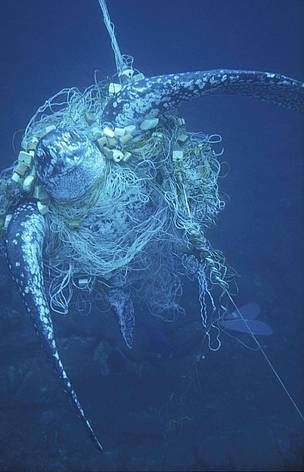
Can you name this reptilian? it took me 5-6 attempts after removing with my eyes the debris pollution.
Municipal waste water constitutes the largest single source of coastal marine pollution. The Central Pollution Control Board estimates that 87 cities and towns located in India’s coastal areas in nine states together emit more than 5.5 billion litres of waste water per day, which is almost 80% of their total water supply (the estimate in million litres per day, or MLD, which is the measure that water resource and pollution control authorities use, is 5,560.99 MLD). This is a staggering volume of fluid, equivalent to a third of the total quantity of waste water generated by 644 Class I cities and Class II towns in the entire country.
It is also 2.5 times the volume of waste water (about 2.2 billion litres/day) that the same 87 cities generated two decades ago. Of the 5.5 billion litres/day — less than a tenth (521.51 MLD) — is treated to any level before being released into coastal waters. The three states of Maharashtra (45%), West Bengal (26%) and Tamil Nadu (9%) account for the bulk of waste water flushed into our coastal seas, while about 3.22 billion litres/day of waste water flow into the Arabian Sea and about 2.33 billion litres/day flow into the Bay of Bengal.
Toxins have risen within the sea from the 1960’s to date which is primarily due to “over population” and until this is properly conveyed across the globe to all humans then we will see more pollutants enter the ocean as of demand for agricultural and factory processed products to fossil fuels, and chemical radioactive energy.
Toxins that are located in today’s oceans are listed below.
- Plastic pollution
- Agricultural pollution such as phosphorus, nitrogen, mercury, lead, and carbon plus more.
- Oil, petroleum, methane, paint, radioactive poisons
- Human excrement
- Chemical weapons (Yes they are present in today’s oceans)
- Debris pollution
- Fishing pollution
- Thermal pollution, and eutrophication
These eight pollutants are found most commonly within the oceans to date and are causing massive biodiversity damage plus are harming ourselves that eat fish stock to.
Food chain;
Plankton, which is the tiny animals at the bottom of the food chain in the oceans, absorbs the chemicals as they feed. They do not break down easily, so the chemicals accumulate in these organisms, becoming more concentrated in their bodies than the surrounding water or soil. Plankton is eaten by small animals, and the contaminants become even more concentrated. It goes on as smaller animals are in turn eaten by larger animals, each link up the food chain becoming more heavily contaminated than the last.
Seals, for example can have contamination levels millions of times higher than the water in which they live. Polar bears, which feed on seals, can have contamination levels up to 3 billion times higher than their environment.
Fishermen themselves see this contamination first hand. Fish with horrible tumors are becoming the normal catch of the day, so to speak. How do you want your mercury today? Broiled, fried, poached or grilled. ‘Would you like fries with your gamma fish?’
Food chain contamination;
Humans become contaminated directly from chemical household products, eating heavily processed food laced with chemical preservatives or eating contaminated seafood and animal fats. Even those “Highly Touted” health foods such as Krill, Plankton, Seaweed, and Sea Salt have varying degrees of contamination. The FDA discovered that the famous “Coral Calcium” was heavily contaminated with lead, as well as other heavy metals, and only had an absorption rate of 8 - 10%.
Contrary to what you have been told, the evidence is mounting that many man-made chemicals can and will cause serious health problems. These problems include cancer, damage to the immune system, behavioural problems, and reduced fertility, just to name a few.
The bottom line is that you should stay away from anything that is produced from the ocean. Isn’t it bad enough that we get these contaminants first-hand on land, without absorbing even more chemicals and dangerous pollutants from food from the ocean?
Thermal pollution, and eutrophication;
Thermal pollution: Electrical generating plants along the ocean coastlines use the marine waters for cooling purposes which leads to heated water expelled into the marine environment. Few studies have been done on the effects of thermal pollution on the marine environment. Thermal pollution seems to only affect the communities immediately adjacent to the discharge. Thermal discharge is most noted in the tropical areas, where organisms are near their thermal maximum. For example, mangrove trees in a thermal heated bay no longer reproduce and no new seedlings can be found in the lagoon.
Eutrophication: The release of excess nutrients into coastal waters. Fertilizers used on land are washed into the ocean via rivers and streams. High nutrient concentrations cause phytoplankton blooms such as, red tides, various yellow and green foams, slimes, and slicks. Although algal blooms are natural, a higher frequency of their occurrence in the past twenty years indicates an unhealthy ecosystem. The toxicity of recent blooms is increasing, which can have a direct effect on the organisms that feed on them. Also, phytoplankton naturally contains DMS (dimethyl sulfide) which is released from dead phytoplankton into the atmosphere and can be changed to sulfuric acid to eventually contribute to acid rain.
Radioactive waste (plutonium and fries anyone?)
Radioactive waste: The world’s oceans have been a sink for radioactive waste from the production of nuclear weapons and electric power since 1944. Radioactive waste enters the ocean from nuclear weapon testing, the releasing or dumping of wastes from nuclear fuel cycle systems, and nuclear accidents. Dumping of high-level radioactive waste is no longer permitted in the ocean, but dumping of low-level wastes is still permitted. Low-level waste contains fewer radioactivities per gram than high-level waste. High-level wastes usually have longer half-lives. For example, one common high-level waste that is produced by spent nuclear fuel has a half-life of 24,100 years! It has been suggested that contained nuclear waste should be disposed in the deep sea, so little is known about the deep sea environment or the consequences of containment leakage and failure, that the effects could be devastating.
Recently though we have been viewing red seas or rivers that the media have named as “natural phenomena” it’s not a natural phenomenon at all what it is, is high pollution levels and if your living in an area where this has happened on my advice I really wouldn’t bother eating any “fish or crustaceans” from these areas at all.
Red tides (I) & (II)
Pollution (I)
Red tides or the red sea as it is better known is a mixture of some million cubic meters of corrosive sludge, there really is not much known about how it forms other than a change of climate patterns and algae formations to the dumping of toxic chemicals in the waters that have then accumulated through climatic interference into the a red type sea.
One such incident occurred in 2010 in near Ajka, Hungary that saw a dam filled with toxic chemicals burst its banks then flowing onto neighboring land. The tide once receded appeared to some as if the bottoms of the trees had been painted red. In fact it was the sludge of toxic chemicals that had formed and stuck to the trees causing not just botanical and agricultural damage but also much damage to the surrounding lands from which people in the area cannot plant on no more.
The toxic chemicals that were being held by the dam in Ajka held a mixture of bauxite ore that was the chemical properties that made up aluminium oxide or alumina, iron oxide was also present hence the reason why the “stain to the water was evident” as this is the colour of iron oxide, however it also contained a more dangerous chemical better known as alkaline sodium hydroxide used to dissolve aluminium oxide. These metals are used in everyday factory processing and to know that they have breached the clean water supplied to us and also entered into the marine world then this is highly concerning, and it’s happening more frequently around the world that many people are still unaware of. Other chemical that are entering are gypsum plaster, and as explained chemical fertilisers and these can all cause cancer.
When the red tide appears its fairly “unsafe in the water to humans” I use the word unsafe as it’s very toxic to aquatic life and stays embedded in the sea or river bead that can kill if ingested. However should there be flooding, tsunami, to high tide and it reaches land such as Hungary once it dries then it release a “toxic powder in to the air”. Everyone within the vicinity then has to be re-homed due to the dangers that it can cause to human health.
We must as a responsible human race now take responsibility for our oceans, rivers and lakes, if not then we are not just killing the species within, but those that wish to consume fish and shell fish are exposing themselves to highly dangerous chemicals that can and will kill.
Red Tides (Natural) (II)

Red tide is a common name for a phenomenon known as an algal bloom (large concentrations of aquatic microorganisms) when it is caused by a few species of dinoflagellates and the bloom takes on a red or brown color. Red tides are events in which estuarine, marine, or fresh water algae accumulate rapidly in the water column, resulting in coloration of the surface water. It is usually found in coastal areas.
(Please though don’t always listen to the press and media as they mostly obtain their scientific data incorrectly)
Dr J C Dimetri V.M.D, B.E.S, Ma, PhD, MEnvSc
PLEASE DONATE BELOW - URGENT RHINOCEROS APPEAL POACHING NOW AT 2-3 A DAY FEBRUARY 2013 = 57 DEAD
http://fnd.us/c/aQjXe
WHY ARE THEY DYING? THE DEATHS ARE STILL ONGOING BAFFLING US ALL
Hungary 2010 TOTAL WIPE-OUT (Toxic red sludge)
Environmentalism Chapter 16 SPECIAL REPORT - Gorilla Murders
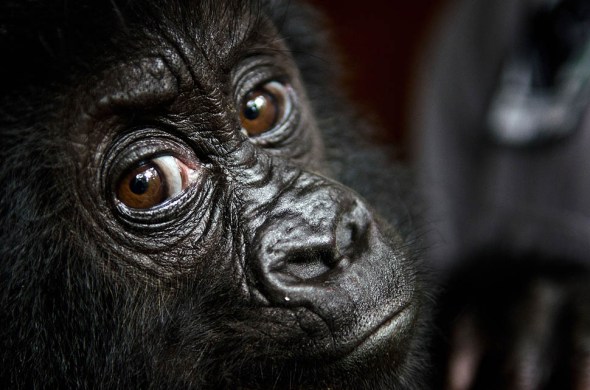
Our international populations of Gorilla species are rapidly becoming more endangered due to increasing human insurgent warfare in Africa where populations of critically endangered species of Gorilla mostly resides.
The Gorilla better known generically as Gorilla gorilla/Sp Western gorilla (Gorilla gorilla spp), eastern gorilla (Gorilla beringei spp) is a member of the Hominidae family both of which are classed as “critically endangered” with little awareness within the media and press of their current status and possible extinction wipe-out within the Congo region of Africa where they predominantly reside. There are a total of “four generically identified species” Western lowland gorilla (G. g. gorilla),Cross River gorilla (G. g. diehli), and Mountain gorilla (G. b. beringei) Eastern lowland or Grauer’s gorilla (G. b. graueri).
Hominidae refers to the taxonomic family of primates, including four extant genera chimpanzees and bonobos that share 98.7% of our Deoxyribonucleic acid more commonly referred to as DNA, The term “hominid” is also used in the more restricted sense as hominins or “humans and relatives of humans closer than chimpanzees, however all Hominidae species other than that of the Homiosapian is extinct. The Homiosapian refers to someone who is a cross between a homie and a homosapian (human being). Ancestors of the Hominidae family had already speciated from those of the Hylobatidae family, perhaps 15 million to 20 million years ago.
Most if not all Gorilla species are found in central, eastern and northern Africa, of which may sound incredibly dense to one with regards to populations however this is not the case and both species of the Western gorilla (Gorilla gorilla spp), eastern gorilla (Gorilla beringei spp) are in colossal danger from paramilitary extremists mainly M23, and the primate pet trade to bush meat trade to zoological trade in Northern Nigeria of which is still under investigation via imports and exports of Gorilla species.
Gorilla families live more or less the same way as ourselves in groups although a little larger and non-destructive which there family sizes consist of mainly ten to fifty individuals, there are a smaller population located in the high-Altitude rainforests of Montane deep within Borneo at this location http://goo.gl/maps/j81lM
Wildlife researchers said back in 2008 that they’ve discovered 125,000 western lowland gorillas deep in the forests of the Republic of Congo, calling it a major increase in the animal’s estimated population.
The Wildlife Conservation Society, based at New York’s Bronx Zoo, and the Republic of Congo said their census counted the newly discovered gorillas in two areas of the northern part of the country covering 18,000 square miles.
Previous estimates, dating to the 1980s, put the number of western lowland gorillas at less than 100,000. But the animal’s numbers were believed to have fallen by at least 50 per cent since then due to hunting and disease, researchers said. The newly discovered gorilla population now puts their estimated numbers at between 175,000 to 225,000, however this has dramatically changed since the M23 brigade and the civil war took off that’s spanned almost the entire nation of Uganda and the Congo region decreasing numbers vastly.
The population from the nearest census that we could find now stands at this;
- The western lowland gorilla is the most widespread, possibly numbering 100,000.
- The Cross River gorilla is currently the world’s rarest great ape, with a population of only around 250-300 restricted to a small area of highland forest on the border of Cameroon and Nigeria.
- Eastern lowland gorilla population is stated to be at a mere 17,000 individuals.
- The total population of mountain gorillas is around 786 individuals, split into two separate groups.
The main threats stand so far at the following;
- Civil war and unrest in the Virunga National Park in Democratic Republic of the Congo located at this geographical point - http://goo.gl/maps/brULh
- Habitat loss as of their natural omnivorous feeding habitat is being destroyed, Gorillas are mainly herbivorous (vegetarian) and spend almost half of the day feeding on stems, bamboo shoots, and a variety of fruits, supplemented with bark and invertebrates.
- Endangerment and – Breeding, Females become sexually mature at 7-8 years old, but do not start to breed until several years later. Males mature later than females, with few breeding before the age of 15 years, so with the wars currently raging this area of which one can view a small transcript here then life cycle reproduction is being massively reduced. http://www.youtube.com/watch?v=B_HxA-SiJWU
- Illegal wildlife animal parts trade that’s now numbered at the same price as that of narcotics and TCM/TIM Traditional Chinese Medicine / Traditional Indian Medicine.
- Bush meat is a big player in Africa although not heard of much in Borneo, sadly Gorillas are being poached for their meat that is incredibly unhygienic for humans to consume and can cause many infectious diseases. Like the TCM/TIM trade consuming meat in the African bush meat trade is speculated to increase many physiological senses which is untrue.
- Gorillas are predominantly very large and can be very aggressive especially males, however they are sought after for the exotic pet trade.
- Since the early 1990s, outbreaks of Ebola hemorrhagic fever have caused large-scale die-offs of great apes. The 1994 outbreak in Minkébé (northern Gabon) wiped out the entire population of what used to be the second largest protected population of gorillas and chimpanzees in the world. Between 2002 and 2003 the virus claimed many human lives in the north of the Republic of Congo and at two study sites in and around Odzala National Park, 95 per cent of the 600 identified gorillas died likely as a result of Ebola. There seems to be a pattern in the way the outbreaks have occurred across the region, making it likely that they were not isolated events but part of a wave that may still be spreading across the region.
- Borneo – Yes again we seem to be mentioning these same two issues and that’s palm oil and the pulp and paper trade. Orang-utans that are not “related” but share almost the same characteristics and genetics of around 99.4% are being wiped out at around 5,000 a year for palm oil/pulp and paper trade, well sadly so are the Montane ranged Gorillas plus the critically endangered Pygmy Elephant that now stands at well under 1,500 due to the recent poisoning by palm oil plantation managers within the last month of December 2012 and this month January 2013.
Located mainly in the Dzanga Sangha Protected Area complex in the Central African Republic, neighboring Nouabale-Ndoki National Park in the Republic of Congo, and Lobeke National Park in Cameroon Gorillas are also facing another threat which I mentioned earlier and now needs extreme awareness on a global international scale, so if you are reading this please share to your friends and also your family because “awareness” raises support and “support” will help other conservation teams move in to help protect these critically endangered species if governmental help can be gained to protect environmentalists.
International Animal Rescue Foundation © has been undertaking a lot of conservation and botanical work in Africa within the past three years. Most work has been on understating the country and setting a foot foundation within the nation thus then working on areas of conversational interest to preserve and conserve our flora and fauna.
Although keeping within mainly South Africa, Zimbabwe, Cameroon, Uganda, Chad, Angola and the island of Madagascar we need to push further in to Africa and now move in to states of Nigeria and Sudan along with Niger and Morocco this is to further more expertise of the animal parts trade, community relations, and to conserve aquatic and reptilian and botanical species plus now seeking the seriousness of poaching and the zoological trade too that see’s many zoo’s in central and northern Africa to coastal regions of Madagascar, Morocco, and Angola to Nigeria that are illegally importing and exporting primates of which includes the Mountain and Silver back Gorillas based on intelligence and interviews with individuals that have lived and worked within these regions.
The impacts of the Gorilla we as an International “conservation team” know little about in terms of (practical work) although we possess masses of extensive theory experience from studying and field work we now see as a conservation team the Gorillas and other flora and fauna within this area of Africa to be in serious threat or nearing extinction unless evasive and immediate action is undertaken along with building rapport and relations with “African” conservation team players that we never normally would do within the nation of Africa.
Impossible is not a term within our vocabulary and although we are more than aware of the copious civil and militant extremist unrest within the Democratic Republic of Congo and Uganda we have to face these threats taking the bull by the horns, working alongside others to preserve and conserve our Gorilla populations but not ignoring the populated Borneo region too.
Projects that are being undertaken at this moment that are of the most important within this wildlife sector are listed below;
- Strengthening protected areas that harbor western lowland gorillas and other threatened species in the Republic of Congo.
- Supporting the gorilla tracking program in the Dzanga Sangha Protected Area complex.
- Promoting sustainable development of the Dzanga Sangha Protected Area complex, including through developing ecotourism and a multiple-use reserve, where human activities and forest exploitation are controlled.
Projects that we are going to implement are;
- Building ranger and anti-poaching personnel up within Africa and Borneo to preserve the critically endangered species of Gorilla populations
- Public education and awareness of bush meat and the exotic pet trade
- Informer networks of syndicate crime
- Awareness of the Ebola disease and pushing for vaccines of gorillas to keep safe the populations
- Global Positioning System (GPS) tagging and tracking / air and land surveillance
- Preserving areas of populations in parks and the wild through education and international awareness (pushing for celebrity awareness)
- Monitoring the situations within Borneo of which we have yet to still travel back too, this could take up to 1-2 years however with the organisation now wanting to go to charity “status” the monies raised that have to be over £5000 UKP will help us dearly to place into motion the theory experience in gaining knowledge to practical of these species and other conservation teams and the RSPO to preserve the Gorilla’s natural habitat.
Current threats in Rwanda, Uganda, Burundi, and Democratic republic of Congo are serious and with vast corruption plus civil war still on-going now since the beginning of 1990 this unfortunately see’s the Gorilla facing some serious population decline.
The Virunga National Park where large populations of Gorilla’s are is under threat and “ honor killings of the Gorilla are being carried out” not for poaching, or bush meat but by the M23 rebels that are only murdering single or whole families of the Gorilla species to create a “fear factor” which is better explained in the forty five minute video below.
Apologies for “quality” however the original video as seen below was removed from viewing in the European Union by National Geographic although we could still view the video others viewing the page would not so we have picked up on the same production that’s been recorded.
Historical Human Rights information on current crisis;
M23 rebels in eastern Democratic Republic of Congo are responsible for widespread war crimes, including summary executions, rapes, and forced recruitment. Thirty-three of those executed were young men and boys who tried to escape the rebels’ ranks.
Rwandan officials may be complicit in war crimes through their continued military assistance to M23 forces, Human Rights Watch said. The Rwandan army has deployed its troops to eastern Congo to directly support the M23 rebels in military operations.
Human Rights Watch based its findings on interviews with 190 Congolese and Rwandan victims, family members, witnesses, local authorities, and current or former M23 fighters between May and September.
“The M23 rebels are committing a horrific trail of new atrocities in eastern Congo,” said Anneke Van Woudenberg, senior Africa researcher at Human Rights Watch. “M23 commanders should be held accountable for these crimes, and the Rwandan officials supporting these abusive commanders could face justice for aiding and abetting the crimes.”
The M23 armed group consists of soldiers who participated in a mutiny from the Congolese national army in April and May 2012. The group’s senior commanders have a well-known history of serious abuses against civilians. In June the United Nations high commissioner for human rights, Navi Pillay, identified five of the M23’s leaders as “among the worst perpetrators of human rights violations in the DRC, or in the world.” They include Gen. Bosco Ntaganda, who is wanted on two arrest warrants by the International Criminal Court (ICC) for war crimes and crimes against humanity in Ituri district, and Col. Sultani Makenga, who is implicated in the recruitment of children and several massacres in eastern Congo.
Based on its research, Human Rights Watch documented the forced recruitment of at least 137 young men and boys in Rutshuru territory, eastern Congo, by M23 rebels since July. Most were abducted from their homes, in the market, or while walking to their farms. At least seven were under age 15.
Witnesses told Human Rights Watch that at least 33 new recruits and other M23 fighters were summarily executed when they attempted to flee. Some were tied up and shot in front of other recruits as an example of the punishment they could receive.
One young recruit told Human Rights Watch, “When we were with the M23, they said [we had a choice] and could stay with them or we could die. Lots of people tried to escape. Some were found and then that was immediately their death.”
Since June, M23 fighters have deliberately killed at least 15 civilians in areas under their control, some because they were perceived to be against the rebels, Human Rights Watch said. The fighters also raped at least 46 women and girls. The youngest rape victim was eight years old. M23 fighters shot dead a 25-year-old woman who was three months pregnant because she resisted being raped. Two other women died from the wounds inflicted on them when they were raped by M23 fighters.
M23 rebels have committed abuses against civilians with horrific brutality, Human Rights Watch said. Just after midnight on July 7, 2012, M23 fighters attacked a family in the village of Chengerero. A 32-year-old woman told Human Rights Watch that the M23 fighters broke down their door, beat her 15-year-old son to death, and abducted her husband. Before leaving, the M23 fighters gang-raped her, poured fuel between her legs, and set the fuel on fire. A neighbor came to the woman’s aid after the M23 fighters left. The whereabouts of the woman’s husband remain unknown.
Local leaders, customary chiefs, journalists, human rights activists and others who spoke out against the M23’s abuses – or are known to have denounced the rebel commanders’ previous abuses – have been targeted. Many received death threats and have fled to Congolese government-controlled areas.
M23 leaders deny that they or their forces have committed any crimes. In an interview with Human Rights Watch on August 8, Col. Makenga, one of the M23’s leaders, denied allegations of forced recruitment and summary executions, claiming those who joined their ranks did so voluntarily. “We recruit our brothers, not by force, but because they want to help their big brothers…. That’s their decision,” he said. “They are our little brothers, so we can’t kill them.” He described the repeated reports of forced recruitment by his forces as Congolese government propaganda.
Rwandan military officials have also continued to recruit by force or under false pretenses young men and boys, including under the age of 15, in Rwanda to augment the M23’s ranks. Recruitment of children under age 15 is a war crime and contravenes Rwandan law.
On June 4, Human Rights Watch reported that between 200 and 300 Rwandans were recruited in Rwanda in April and May and taken across the border to fight alongside M23 forces. Human Rights Watch has since gathered further evidence of forced recruitment in Rwanda in June, July, and August with several hundred more recruited. Based on interviews with witnesses and victims, Human Rights Watch estimates that at least 600 young men and boys have been forcibly or otherwise unlawfully recruited in Rwanda to join the M23, and possibly many more. These recruits outnumber those recruited for the M23 in Congo.
Congolese and Rwandans, including local authorities, who live near the Rwanda-Congo border told Human Rights Watch that they saw frequent troop movements of Rwandan soldiers in and out of Congo in June, July, and August in apparent support of M23 rebels. They said that Rwandan army soldiers frequently used the footpath near Njerima hill in Rwanda, close to Karisimbi volcano, to cross the border.
In addition to deploying reinforcements and recruits to support military operations, Rwandan military officials have been providing important military support to the M23 rebels, including weapons, ammunition, and training, Human Rights Watch said. This makes Rwanda a party to the conflict.
“The Rwandan government’s repeated denials that its military officials provide support for the abusive M23 rebels beggars belief,” Van Woudenberg said. “The United Nations Security Council
should sanction M23 leaders, as well as Rwandan officials who are helping them, for serious rights abuses.”
The armed conflict in eastern Congo is bound by international humanitarian law, or the laws of war, including Common Article 3 and Protocol II to the 1949 Geneva Conventions, which prohibit summary executions, rape, forced recruitment, and other abuses. Serious laws-of-war violations committed deliberately or recklessly are war crimes. Commanders may be criminally responsible for war crimes by their forces if they knew or should have known about such crimes and failed to prevent them or punish those responsible.
A United Nations Group of Experts that monitors the arms embargo and sanctions violations in Congo independently presented compelling evidence of Rwandan support to the M23 rebels. Its findings were published in a 48-page addendum to the Group’s interim report in June 2012. The Rwandan government has denied these allegations. The UN sanctions committee should immediately seek additional information on M23 leaders and Rwandan military officers named by the Group of Experts with a view to adopting targeted sanctions against them, Human Rights Watch said.
In July and August, five donor governments – the United States, the United Kingdom, Germany, the Netherlands, and Sweden – announced the suspension or delay of assistance to Rwanda in light of the evidence presented by the Group of Experts. Although Rwandan military support for the M23, and M23 abuses have continued unabated, on September 4 the United Kingdom Department for International Development announced it would disburse around half the assistance it had withheld.
The renewed hostilities by the M23, the Congolese army, and various other armed groups have resulted in the displacement of over 220,000 civilians who have fled their homes to seek safety elsewhere in Congo or across the border in Uganda and Rwanda.
“Congolese civilians have endured the brunt of wartime abuses,” Van Woudenberg said. “The UN and its member states should urgently step up their efforts to protect civilians, and donor governments providing aid or military assistance to Rwanda should urgently review their programs to ensure they are not fueling serious human rights abuses.”
Background on the M23 and Its Leadership
The soldiers who took part in a mutiny from the Congolese army between late March and May and formed the M23 group were previously members of the National Congress for the Defense of the
People (CNDP), a former Rwanda-backed rebel group that integrated into the Congolese army in January 2009.
General Ntaganda led the mutiny following Congolese government attempts to weaken his control and increased calls for his arrest and surrender to the ICC, in accordance with Congo’s legal obligations to cooperate with the court. He was joined by an estimated 300 to 600 troops in Masisi territory, North Kivu province. Ntaganda’s forces were defeated by the Congolese army, which pushed the rebels out of Masisi in early May. Around the same time, Col. Makenga, a former colleague of Ntaganda in the CNDP, announced he was beginning a separate mutiny in Rutshuru territory. In the days that followed, Ntaganda and his forces joined Makenga.
The new armed group called itself the M23. The soldiers claimed their mutiny was to protest the Congolese government’s failure to fully implement the March 23, 2009, peace agreement (hence the name M23), which had integrated them into the Congolese army.
Some of the M23’s senior commanders have well-known histories of serious abuses, committed over the past decade in eastern Congo as they moved from one armed group to another, including ethnic massacres, recruitment of children, mass rape, killings, abductions, and torture. Before the mutinies, at least five of the current M23 leaders were on a UN blacklist of people with whom they would not collaborate due to their human rights records.
Ntaganda has been wanted by the ICC since 2006 for recruiting and using child soldiers in Ituri district in northeastern Congo in 2002 and 2003. In July, the court issued a second warrant against him for war crimes and crimes against humanity, namely murder, persecution based on ethnic grounds, rape, sexual slavery, and pillaging, also in connection with his activities in Ituri. On September 4, the ICC renewed its request to the Congolese government to arrest Ntaganda immediately and transfer him to The Hague. Human Rights Watch has documented numerous war crimes and crimes against humanity by troops under Ntaganda’s command since he moved from Ituri to North Kivu in 2006.
According to research by UN human rights investigators and Human Rights Watch, Col. Makenga is responsible for recruiting children and for several massacres in eastern Congo; Col. Innocent Zimurinda is responsible for ethnic massacres at Kiwanja, Shalio, and Buramba, as well as rape, torture, and child recruitment; Col. Baudouin Ngaruye is responsible for a massacre at Shalio, child recruitment, rape, and other attacks on civilians; and Col. Innocent Kayna is responsible for ethnic massacres in Ituri and child recruitment.
Ntaganda and Zimurinda are also both on a UN Security Council sanctions list. Under the UN sanctions, all UN member states, including Rwanda, are obligated to “take the necessary measures to prevent the entry into or transit through their territories of all persons” on the sanctions list. Both Ntaganda and Zimurinda have traveled to Rwanda since April, former M23 fighters who accompanied Ntaganda and people present during meetings Zimurinda attended in Rwanda told Human Rights Watch.
Publicly, the M23 maintains that Ntaganda is not part of its movement. However, several dozen former and current M23 fighters and others close to the M23’s leadership told Human Rights Watch that Ntaganda has played a key command and leadership role among the M23 rebels, operating from the Runyoni area, and that he participated regularly in meetings with the M23’s high command and Rwandan army officers.
The same people also told Human Rights Watch that there were tensions between Ntaganda and Makenga due to past differences over Ntaganda’s 2009 putsch against the CNDP’s then-leader Laurent Nkunda. But these differences, they said, have been put aside to focus on the rebellion against the Congolese army. As one M23 fighter explained to Human Rights Watch, “Many of us have bad memories of Ntaganda…but we need to prioritize the war against the FARDC [the Congolese army] first. The war against Ntaganda will come later.”
Since July, Ntaganda appears to have been keeping a lower profile and, according to M23 defectors interviewed by Human Rights Watch, is closely protected by dozens of bodyguards.
Killings and Rape by M23 Forces
Human Rights Watch investigations found that M23 fighters deliberately killed at least 15 civilians, wounded 14 others, and raped at least 46 women and girls in areas under their control in June, July, and August. At least 13 of the rape victims were children. Some were attacked because they resisted forced recruitment or refused to contribute food rations to the M23. Others were targeted because they were perceived to be against the M23, or had fled to government-controlled areas and tried to return home in search of food.
In June, for example, M23 fighters killed a 50-year-old Hutu man, Nsabimana Rwabinumwe, who had fled when the M23 arrived in his village but came back to look for food at his farm. A friend who buried him told Human Rights Watch, “They [M23 fighters] used a hoe and beat him on the back of the head. …When you leave the areas controlled by the government and then come back, they punish you. …They killed [my friend] because he had been in the government area.”
In early August, an elderly couple who lived near Runyoni left their home to flee to government-controlled areas when a group of M23 fighters stopped them. The M23 fighters grabbed the woman and tore off her clothes. Her husband tried to protect her, but some of the fighters started beating the 60-year-old man with their rifles, while others gang-raped his wife. The man lost consciousness when he saw his wife being raped. He was later taken to a hospital, where he told relatives, “I want to die. I have no desire to live after what I have seen. It is only animals who could have done this.” Two weeks later he died of his wounds.
A 15-year-old girl from Muchanga told Human Rights Watch that she had gone to their farm with her mother and younger sister on July 10 when an M23 fighter approached them and demanded money. They gave him the money they had with them which they were saving to pay school fees, and then the fighter told them to get down on the ground. “He started by letting my mother and little sister go and telling them to run quickly. I was left alone with the fighter. He took me 500 meters from the farm and then he raped me.”
On August 24, two M23 fighters raped a 12-year-old girl. They broke into her home, threatened her mother and aunt, and told the young girl to go outside. Some meters from the house, near the family’s latrine, they gang-raped her. “[She] was in a lot of pain, she cried out loudly, but these criminals had no heart or pity for anyone,” a witness told Human Rights Watch. “They continued to rape her until they were satisfied.”
In addition to the 15 civilians deliberately killed by the M23, at least another 25 civilians were killed in July during combat between the M23 and their supporters against Congolese army soldiers and UN peacekeepers. At least 36 other civilians were wounded. In a number of cases neither the M23 nor the Congolese army made sufficient efforts to avoid civilian deaths or to permit civilians to flee the combat zone safely.
Rwandan Support to the M23
In July, several hundred Rwandan army soldiers, possibly more, were deployed to eastern Congo to assist the M23 take the strategic border post town of Bunagana, Rumangabo military base, the towns of Rutshuru, Kiwanja, and Rugari, and surrounding areas. Local residents and M23 defectors reported earlier Rwandan army deployments in which Rwandan soldiers came for short periods to support the M23 in key battles, withdrew, and then returned when needed. A UN peacekeeping officer in North Kivu corroborated regular surges of support for M23. He told Human Rights Watch, “Whenever [the M23] make a big push, they have additional strength.”
Local residents and escaped M23 fighters told Human Rights Watch that on July 5 and 6, during an attack on Bunagana, several hundred Rwandan army soldiers from Gen. Emmanuel Ruvusha’s division based in Gisenyi (northwestern Rwanda) were deployed to the area to reinforce the M23. Defectors told Human Rights Watch they recognized the division’s officers. M23 rebels coordinated their offensive with the Rwandan forces against the Congolese army, who were supported by UN peacekeepers.
UN peacekeepers present during the attack told Human Rights Watch that the forces that attacked Bunagana were well-equipped and spoke English, and that their behavior was markedly different from that of Congolese soldiers, leading them to conclude that the attacking forces included Rwandan soldiers.
Many Rwandan army soldiers deployed to support the M23 passed directly from Rwanda into Congo, using various footpaths, including near Njerima and Kanyanje. Others reportedly passed through Ugandan territory to enter Congo, including via a path on the Ugandan side of Sabyinyo volcano. M23 defectors and local residents told Human Rights Watch that Rwandan soldiers used Ugandan territory and Ugandan vehicles to enter Congo.
Congolese and Rwandans, including local authorities who live near the Rwanda-Congo border, also told Human Rights Watch that they saw significant numbers of Rwandan soldiers crossing from Rwanda into Congo in June, July, and August. They had also seen Rwandan soldiers later returning to Rwanda from Congo.
In early July, just before the M23 rebels attacked Bunagana with support from Rwandan troops, a Congolese farmer from Hehu hill, near Kibumba, was visiting a friend in Kasizi, Rwanda, when he was taken by Rwandan soldiers and forced to carry boxes of ammunition.
He told Human Rights Watch that he had counted seven army trucks filled with Rwandan soldiers, weapons, and ammunition. “The soldiers took me, my friend, and other civilians… and forced us to carry boxes of ammunition to Njerima [near the Congo border]. I was forced to do three trips and then I managed to get away. The soldiers were well-armed and wearing military uniforms… I asked one of the soldiers walking next to me where we were going. He replied that they were going to fight in Congo.”
In late July, people in Congo near Kasizi again reported seeing large numbers of Rwandan army soldiers passing into Congo from Rwanda. On August 3, two Rwandans, including a local village chief, told Human Rights Watch that they saw a large group of Rwandan army soldiers crossing from Rwanda into Congo, on a footpath near Karisimbi volcano.
Some people noticed Rwandan soldiers coming out of Congo. A journalist who traveled from Ruhengeri to Kinigi in early August told Human Rights Watch he saw two groups of at least 100 soldiers walking from the direction of the Congolese border toward the main road between Ruhengeri and Kinigi in Rwanda. He described the soldiers as “visibly tired and dirty” and said “some were limping, their boots were muddy, and they were clearly very tired.”
Rwandan forces in Congo appear to have coordinated their actions with the M23, often playing commanding roles, local residents and M23 defectors told Human Rights Watch. One former M23 combatant told Human Rights Watch he saw a Rwandan General, Emmanuel Ruvusha, on Tshanzu hill, one of the M23’s main bases, during the fighting in Bunagana, apparently commanding and overseeing military operations.
Another defector who commanded a unit of M23 fighters said he received his orders from Rwandan army officers during the attack on Bunagana. Other M23 defectors were also able to identify Rwandan officers by name that had been at M23 positions in Congo. They claimed that these officers had directed, or helped to direct, military operations, provided weapons, or supervised the training of new recruits.
Many of the M23 defectors and escaped recruits from both Congo and Rwanda interviewed by Human Rights Watch said that their training had been conducted by Rwandan army soldiers at training camps in Bukima, Tshanzu, and Rumangabo, in Rutshuru territory, Congo.
A Rwandan M23 defector who used to be an officer in the CNDP told Human Rights Watch he recognized the Rwandan army officers training the new M23 recruits because he himself had been trained by them in Rwanda while he was with the CNDP. “I knew them well because I had taken their courses in Rwanda,” he said. “I recognized them.”
Human Rights Watch tried to contact the Rwandan military spokesperson for a response to the above allegations without success.
In an interview with Belgian newspaper Le Soir on August 29, the Rwandan defense minister, James Kabarebe, denied that the Rwandan army supported the M23. “Everyone knows that Rwanda does not have a single soldier amongst the M23 and does not give it any support.” When asked if uncontrolled Rwandan soldiers could be acting in support of the M23, he said that the Rwandan
army was “solid, well-organized, well-commanded, well-disciplined” and that there could not be any “uncontrolled elements” within it.
Forced Recruitment in Congo by the M23
Since early July, M23 rebels have stepped up recruitment activities in Rutshuru territory, eastern Congo, after the group took control of the areas around Bunagana and later Rutshuru, Kiwanja, Rumangabo, and Rugari. M23 commanders held meetings in villages and towns under their military control to convince the population to support their activities by providing recruits and food rations. When few joined voluntarily, M23 combatants quickly began to take young men and boys by force.
Human Rights Watch research found that at least 137 young men and boys were forcibly recruited in Rutshuru territory between early July and late August, including at least 20 children under 18, seven of whom were under age 15.
These are in addition to the 149 young men and boys recruited in Masisi territory in April, as reported by Human Rights Watch on May 16. The total number of young men and boys forcibly recruited by the M23 in Congo, known to Human Rights Watch, stands at 286; of whom at least 68 were children under 18, 24 of them under 15.
New recruits were taken to military training centers set up by the M23 in Bukima, Tshanzu, Runyoni, and Rumangabo. Recruits who managed to escape told Human Rights Watch that they were given military uniforms and taught how to use a rifle and other basic military tactics. The recruits also told Human Rights Watch that Rwandan army officers frequently led the training.
The forced recruitment created a climate of fear, leading many young men and boys to flee to government-controlled areas or across the border to Uganda or Rwanda.
On July 16 and 17, M23 fighters forcibly recruited at least 60 young men and boys from the Rugari and Kisigari areas. They told the recruits that they needed help transporting their belongings, collecting firewood and drawing water, and said they would be released afterward. Instead the young men and boys were taken to military training centers at Bukima and Tshanzu and briefly given military training.
One 20-year-old man who was forcibly recruited in the Kisigari area along with three other young men on July 21 later managed to escape. He told Human Rights Watch that he and the others were
taken to a training camp at Bukima. “There, we spent an entire night in a hole with water up to our hips, like a pool,” he said. “The M23 soldiers told us that that was the start of the military training, to teach us how to get used to the cold.”
A 19-year-old Congolese youth was abducted on July 23 in Bugina on his way home from his fields. Witnesses said three M23 fighters forced him to carry their belongings, then inducted him into their rebel group. His family saw him in Rutshuru on July 25 in military uniform with a rifle, fighting alongside the M23 against the Congolese army.
One man who had gone to visit a relative in Tshanzu who had joined the M23 told Human Rights Watch that during his visit he saw a group of 70 to 80 new recruits undergoing training. The man recognized four of the recruits as children from his home village who were still in primary school and were around 13 or 14. The man told Human Rights Watch that many others of roughly the same age were among the recruits.
Any recruitment by armed groups of children under 18 is prohibited by the Optional Protocol to the Convention on the Rights of the Child on the involvement of children in armed conflicts, ratified by Congo and Rwanda. Under the ICC treaty, the recruitment of children under 15 is a war crime.
Rwandan Recruitment for the M23
Rwandan military authorities continued recruiting for the M23 in Rwanda between June and August, as they had in previous months, either by force or under false pretenses. Information collected by Human Rights Watch indicates that an estimated 600 were recruited in these circumstances in Rwanda. These recruits outnumber those recruited by the M23 in Congo. They included young Rwandan men and boys with no previous military experience and Congolese Tutsi refugees living in refugee or transit camps in Rwanda. Others targeted for recruitment included demobilized soldiers from the Rwandan army, the CNDP, and demobilized fighters from the FDLR who had returned to Rwanda. The FDLR are a largely Rwandan Hutu militia group operating in Congo, some of whose members participated in the 1994 genocide in Rwanda.
According to recruits interviewed by Human Rights Watch who were able to escape and reports from other sources, Rwandan authorities recruited dozens of young men and boys from camps for Congolese refugees in Kibuye and Byumba, as well as the Nkamira Transit Center. Many were forcibly taken from the camps at night by men in civilian clothes who drove them to the Rwandan military camp at Kinigi. There they were given uniforms, weapons, ammunition, and other materials to transport, and were escorted by Rwandan army soldiers to Congo. Others joined voluntarily, after being told that supporting the M23 would help their families return to Congo.
A Tutsi student, 22, who studied near Kitchanga, in Congo, told Human Rights Watch that he had fled to the Nkamira Transit Center in Rwanda in May to escape forced recruitment in Congo. Two weeks later, he was taken by force from the transit camp along with 13 other young men. He said men in civilian clothes assembled them and forced them into a vehicle with tinted windows.They were taken to Ruhengeri, given salt to carry and forced to march to the Congolese border, escorted by Rwandan army soldiers.
At the border, the group was met by M23 fighters, who escorted them to Runyoni, where they were given military training within days of arriving. “They [the M23] would beat us,” the student said. “They told us we had to eliminate our ‘sense of being a civilian.’ They said we were going to take North Kivu.”
In another case at Nkamira Transit Center, an 18-year-old Rwandan youth went to visit his sister at the camp on June 6. He said that the same night, he was picked up by civilian-clothed men who rounded up 28 young men in the camp and brought them in three vehicles to the Rwandan military camp in Kinigi. The young men were each given fuel canisters to carry and were escorted on foot toward the M23 military position in Runyoni, Congo, accompanied by Rwandan army soldiers.
Rwandan military authorities also mobilized local authorities to help with the recruitment. In Rwerere, Rwanda, near the Kasizi village border crossing with Congo, Rwandan military authorities called local leaders to a meeting on June 27 and told them that each leader with responsibility for 10 houses (known as the nyumbakumi) should find five recruits to send to Congo to support the M23. Two people who were at the meeting and were later interviewed by Human Rights Watch said they were instructed to “give priority to young demobilized soldiers” and to tell the youth that they should go to Congo “to secure Rwanda because the Congolese government was supporting the FDLR.”
According to the same local leaders, on July 4 over 300 new recruits mobilized by the local authorities were taken to Kabumba, close to the border with Congo. They were then escorted by Rwandan army soldiers across the Congolese border to Runyoni to join the M23.
Another nyumbakumi from the area in Rwanda bordering Congo near Kasizi told Human Rights Watch that in a meeting on August 24, Rwandan civilian and military authorities again called on local leaders to recruit youth to join the M23. They told them that “all of the Kivus should come back to Rwanda because it is ours” and that they should collect money from their populations to pay the youth and encourage them to join.
An M23 combatant who spoke to Human Rights Watch was candid about the recruitment in Rwanda. “We have a small number of soldiers, and Rwanda has many,” he said. “We recruit everywhere in Rwanda. We look especially for those with families in Congo, former CNDP fighters, or demobilized soldiers. The street children are also very susceptible to recruitment.”
Rwandan military and civilian officials who recruit children under the age of 15 for the M23 are responsible for war crimes. Recruitment of children under the age of 18 for military service is also prohibited under Rwandan law.
Summary Executions and Mistreatment of Recruits
The M23 has treated its new recruits harshly. Beatings and cruel or degrading treatment were regular occurrences. Human Rights Watch research found that at least 33 M23 rebels and recruits who attempted to escape and were captured were summarily executed.
A Rwandan man, 18, who escaped after being forcibly recruited in Rwanda told Human Rights Watch that he witnessed the execution of a 16-year-old boy from his M23 unit who had tried to flee in June. The boy was captured and beaten to death by M23 fighters in front of other recruits. An M23 commander who ordered his killing then allegedly told the other recruits, “He wanted to abandon us,” as an explanation for why the boy had been killed.
A Congolese Hutu man, 28, who was forcibly recruited in Karuba, Masisi, in early May, told Human Rights Watch that because he resisted becoming a fighter, the M23 detained him in a makeshift prison in a hole in the ground at the M23 military camp in Runyoni, along with 25 other Hutu recruits who were being punished for disobedience. A Rwandan recruit told Human Rights Watch: “We were mistreated at the [Runyoni] camp. …They often beat people so badly that they couldn’t recover and got sick. …I wanted to flee.”
Within days of being recruited, many young men and boys were sent into battle. With little or no military training or experience, the new recruits are frequently among the first killed. A 17-year-old Rwandan boy who was recruited in June in Ruhengeri, Rwanda, told Human Rights Watch, “There are lots of children with [General] Ntaganda now, and they send us to the front lines so we’re the first to die. It’s as if they take us to kill us.”
One man from Rugari, Congo, told Human Rights Watch that his 15-year-old nephew was forcibly recruited in mid-July by the M23 while walking to his fields. Days later, the boy was killed in a battle on a hill near Rugari. After the battle, the M23 rebels forced a group of civilians, including the boy’s uncle, to bury the dead. “I saw my [nephew] there, dead, with a bullet in his chest,” the uncle said. The uncle participated in the burial of at least 60 bodies that day. Many appeared to be children.
Intimidation and Threats Against Human Rights Activists, Journalists, Local Leaders
Local leaders, customary chiefs, journalists, human rights activists and others who spoke out against the M23’s abuses or are known to have denounced the rebel commanders’ previous abuses have been targeted. Many received death threats and have fled to government-controlled areas.
The M23 took over community radio stations in Rutshuru territory shortly after they took control of villages and towns in July, threatening radio operators and journalists and forcing them to hand over equipment. One radio operator interviewed by Human Rights Watch said he was threatened by a senior M23 official, who told him that if he refused to let the M23 use his radio, they would kill him.
In late July, the M23 established local security committees in Kiwanja, Rutshuru, and Rubare. M23 leaders assert the committees are to serve as liaisons with local communities about security matters. However, a member of one of the committees told a civil society activist from the area that the main aims of the committees include recruiting youth to join the M23 and reporting to the M23 hierarchy those who oppose the movement.
Local customary chiefs who have not shown their loyalty to the M23 have also been targeted and some have fled to government-controlled areas.
The Rumangabo locality chief, Manishimwe Rwahinage, was detained by the M23 on July 17. M23 leaders told Human Rights Watch he had been taken into custody for collaborating with the FDLR and they were “trying to change him.” He was released on August 11, after civilians from his locality paid US$150. On September 5, Rwahinage was shot and killed in Rumangabo, not far from an M23 military post. M23 leaders said that the FDLR may have been responsible, while those close to Rwahinage believe he was killed by M23 fighters. Further investigation is required to determine responsibility for his death.
Human rights activists in Goma said they received threatening phone calls and text messages from people suspected of being M23 members. On July 26, one activist received the following message: “We are now at the gates of Goma. Speak one more time [and] we will cut your mouth. Spread this message to your other colleagues, sons of dogs. We will end your life.”
Forced Labor, Looting, and Extortion by the M23
M23 combatants have forced civilians to work for them, in some cases under threat of death.
On July 26, M23 fighters forced a primary school teacher, 32, from Gisiza locality to transport boxes of ammunition from Kabaya to the Rumangabo military camp. When the teacher tried to return home, he was shot in the back and injured by M23 fighters.
A local chief from the village of Kigarama, near Rugari, who had fled to Kanyaruchinya, told Human Rights Watch that on August 3 he went back to his farm to look for food. The next day M23 forces arrived and forced him to bring his pig to their camp, where it was slaughtered to feed fighters. For the next six days, the chief was forced to dig trenches, milk cows, and collect beans. He was also forced to find young women to bring to the M23 camp; he brought three, ages 15, 20, and 25. Their fate is not known.
Numerous other civilians told Human Rights Watch that they were forced to hand over their harvests, money, and other goods to M23 fighters. A man from Rugari told Human Rights Watch that M23 commanders held a meeting in mid-July at which every family was ordered to provide the M23 five kilograms of beans within a week. The M23 also carried out door-to-door looting raids, attacking those who resisted. On August 24, M23 fighters went to the homes of five traders in Rugari, attacked them with machetes and knives, and forced them to hand over money.
As of early September, the M23 controlled three main supply routes through Rutshuru to Rwindi, Bunagana, and Goma, and was imposing heavy “taxes” on all vehicles passing through their territory.
Pressure on Former CNDP Members by Rwandan Military Officials
Senior Rwandan military officials have sought to influence former CNDP members and their families, in both Congo and Rwanda, to support or join the M23. Several former CNDP military officers and political leaders told Human Rights Watch that they were under intense pressure from Rwandan officials to join the M23. The tactics included death threats and intimidation.
Senator Edouard Mwangachuchu, the president of the CNDP political party, who had publicly denounced the M23 mutiny, told Human Rights Watch that in early May, he received a phone call from the Rwandan defense minister, Gen. James Kabarebe, instructing him to support the M23 and demanding that the CNDP political party withdraw from its political alliance with the Congolese ruling coalition of President Joseph Kabila. The senator said that when he refused, Kaberebe told him to “shut up,” and said “a lightning bolt will strike you.” A few days later, other CNDP political party members declared they had ousted Mwangachuchu as party president and pulled the CNDP out of Kabila’s political coalition.
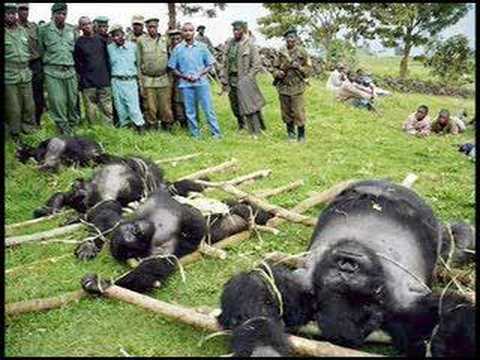
The Rwandan government, in its official response to the UN Group of Experts, said that the phone calls between Rwandan officials and Congolese individuals had “deliberately been taken out of context” and that those made by Kabarebe were “aimed at avoiding a return to violence and [to] promote political dialogue.”
Congolese Tutsi civilians, including businessmen and civilian leaders, also said they were under intense pressure to support the M23. Some have done so voluntarily, but others have refused and faced threats or intimidation. “It’s as if they [the Rwandans] have a knife to our throats,” one Congolese Tutsi businessman said.
Abuses by Other Armed Groups in Eastern Congo
Since the start of the M23 rebellion, the FDLR and other Congolese armed groups, including the Raia Mutomboki militia, have also increased their military activities, expanding their areas of control and killing hundreds of civilians in other parts of North Kivu and South Kivu, according to the UN and local human rights activists. These militias appear to have taken advantage of rising ethnic tensions and the security vacuum created by the Congolese army’s focus on the M23 rebels.
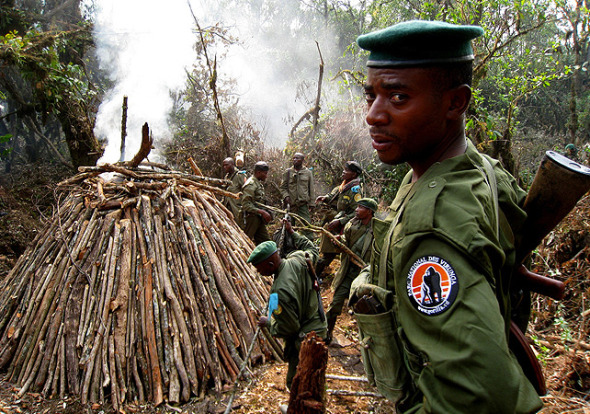
Rangers seeking and shutting down another plant via the illegal trade in Charcoal that’s funding the war. Every plantation that they locate the rangers are then punished by the rebels that then attack the Gorillas and later massacre them
Some of the militias, such as the Mai Mai Sheka – whose leader, Ntabo Ntaberi Sheka, is sought on a Congolese arrest warrant for crimes against humanity for mass rape – have also received support from Rwandan military officials or M23 leaders to conduct military operations against the Congolese army or the FDLR, according to UN officials and the UN Group of Experts.
Some of the most intense fighting has been between the Congolese armed group Raia Mutomboki (meaning “outraged citizens” in Swahili) and the FDLR. Residents and local human rights activists in Masisi, Walikale, Kalehe, and Shabunda territories of North and South Kivu provinces say that hundreds of civilians have been attacked during the fighting this year as each side accused the local population of supporting its enemies.On August 29, Pillay, the UN high commissioner for human rights, condemned the killings and massacres perpetrated by both groups. “The sheer viciousness of
these murders is beyond comprehension,” she said in a statement. “In some cases, the attacks against civilians may constitute crimes against humanity.”
The M23 has sought to ally with some of the armed groups active in eastern Congo, providing them with either periodic or sustained support, including weapons and ammunition, and on occasion organizing coordinated attacks.
For example, in early September, Mai Mai Sheka combatants attacked and took control of Pinga, a town bordering Masisi and Walikale territories, with the support of the M23, according to UN officials.
M23 leaders and Rwandan officials who provided weapons, ammunition, and other support to Congolese armed groups, either directly or indirectly, may be complicit in violations of the laws of war committed by these groups.
Abuses by Congolese Armed Forces
During operations against the M23 rebels, Congolese armed forces have also committed abuses against civilians in Rutshuru territory and Goma, including arbitrary arrests of ethnic Tutsi assumed to be M23 supporters, in addition to the mistreatment of detainees, at least one of whom was killed.
Some of those detained by Congolese soldiers had no apparent connections to the M23, but may have been targeted because they were Rwandan or were from the Tutsi ethnic group.
Between late May and early July, for example, Congolese soldiers detained five Rwandan children, ages 12 to 17, in separate incidents in Kibumba and Goma, at the border with Rwanda. The children were taken to the military prison at the headquarters of the 802nd Regiment at Camp Katindo, in Goma. The guards told the other prisoners, mostly army soldiers, to beat the children. One boy, 17, told Human Rights Watch that the other prisoners said, “Since you are Rwandan, we’re going to beat you to death.” At night, the children were beaten and hung from the ceiling for hours “like monkeys.” They were deprived of food and were not told of any charges or questioned by magistrates.

By mid-July, one of the children, Daniel Masengesho, about 16, became very ill. “We told the prison guard that he was very sick and would die here,” one of the boys told Human Rights Watch. “The guard responded, ‘Shut up. He is a Rwandan. Let him die slowly.’” The boys repeatedly asked the guards to take him to the hospital, but they refused. On July 23, Masengesho died. The next day, the army took the four other boys by motorcycle to the Rwandan border. Congolese immigration authorities questioned them after seeing their weak state, gave them food, and brought them to the hospital in Goma for medical treatment.
Congolese authorities responded promptly, and within days arrested Maj. Tharcisse Banuesize Chiragaga, the Congolese army officer responsible for detaining the five children. On August 17, a military court convicted him and sentenced him to five years in prison for arbitrary arrest, torture, falsification of documents, and illegal detention leading to the death of one detainee.
Although Congolese officials tried to return the boys to Rwanda, Rwandan government officials have refused to accept them, saying they are unable to confirm that they were Rwandan citizens. This has also occurred with Rwandan defectors from the M23, who continue to be held in Congolese military prisons or in the custody of UN peacekeepers.
As the Congolese army soldiers retreated north from their positions in Kiwanja, Rutshuru territory, on July 25, following an M23 offensive, the soldiers took a number of detainees with them. Human Rights Watch received several reports that four people in their custody may have been killed by soldiers near the Congolese military position at “Pont Mabenga.” Congolese judicial officials should urgently investigate this incident, Human Rights Watch said.
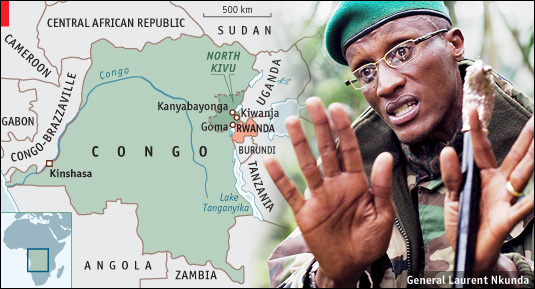
INTERNATIONAL ANIMAL RESCUE FOUNDATION IS APPEALING TO ANYONE THAT KNOW’S OF THIS MAN’S GEOGRAPHICAL LOCATION TO CONTACT US ANONYMOUSLY “PIC RIGHT” - THIS INDIVIDUAL IS WANTED AND MUST BE ARRESTED
Congolese soldiers were also responsible for widespread looting. In Rutshuru and Kiwanja on July 8 and 25, Congolese army soldiers looted homes and forced dozens of civilians to transport their belongings as they retreated in the face of M23 rebel offensives.
The Virunga national park at this moment we are still unsure of if environmentalists can move in to secure the area however what we are aware of is that many rangers left the National Park in fear of their lives. This has then prompted concerns for the Gorillas there and at the main Virunga Gorilla rehabilitation centre of which is still in danger should armed militants decide on moving back to the Goma area of which they captured pilfering, murdering and raping many women and children.
The situation flared rapidly in December 2012 which we reported on within our African affairs page here https://www.facebook.com/pages/International-Animal-Rescue-Foundation-World-Action-South-Africa/199685603444685 the reports can be seen if you scroll down to December 2012.
The M23 rebel’s commander a vicious and ruthless bloody mercenary hell bent on power and control stated on November 29th 2012“My soldiers began to retreat from Masisi yesterday. We will go via Goma and then after that we will retreat to 20 kilometres (12 miles) past Goma toward Rutshuru,” Makenga told The Associated Press. “I think that by Friday we will be able to complete this.”
M23 rebel’s may have retreated for now of which they are being supported by the Rwandan government however not all of them have left the area and have opted for wearing civilian clothing hiding within the hills. To make matters even more worrying for ourselves and other international and inland conservations “Gorilla families” have been reported as vanishing with some ten critically endangered Gorillas found dead with gunshot wounds, and this is not the first time such an emotional discovery by the remaining heavily armed rangers have located in this national park.
In 2009 the war against “rebels and rangers” took a nasty and very upsetting turn that saw the very man whom is trying to keep the rebels out of the park arrested and charged for the deaths of Gorillas that was one hundred per cent corruption related all for the bloody charcoal trade.
SHOCKING;
The report that went viral on August 2009 stated the rangers the very people that where protecting the Gorillas and their natural habitat where to blame for the killings of the Gorillas of which where discovered lying like human corpses, some with their hands on their hearts where they had been shot and others curled up like babies in the foetus position that indicated aggressive and systematic bloody brutal and barbaric abuse had taken place just as a “warning”.
Press and media had reported the rangers where working with the militants which was completely untrue, the rangers had nothing to do with the murders of which it is seen in “the rangers eyes” as a brother and sister lost, a member of their family, mother or father. Why would anyone though kill such stunning and magnificent creatures? Sadly for power and control over land that the militants want.
The killings of the gorilla’s reported here http://www.independent.co.uk/environment/nature/rangers-v-rebels-fight-to-save-rare-gorillas-1767926.html were traced back to the corrupt circle protecting the charcoal trade, which produces 120,000 sacks of charred forest wood every month. Investigators found that rangers and their associates in the armed militias murdered the animals as a warning to their protectors not to interfere. To think that charcoal is the main reason why Gorillas that have lived on earth for some million + years are being slaughtered to hit the emotion senses of those trying to protect the animals and to back off from the jungles is quite worrying and we are 90% certain that the rebels are going to come back as they previously have done at the beginning of 2000 then 2008-09 and now deep in the hills they are back with rangers and rebels fighting for the rights of two separate issues.

The M23 rebel group is made up of hundreds of soldiers who deserted the Congolese army in April. Since then they have occupied numerous villages and towns in mineral-rich eastern Congo, culminating in the seizing of the crucial, provincial capital of Goma. Although they claim to be fighting because the Congolese government has not upheld their end of a March 23, 2009 peace deal, an in-depth report by the United Nations Group of Experts says that M23 is a Rwandan proxy fighting in order to control eastern Congo’s lucrative mines.
Where there is money there is happiness as they say and with Congo’s lucrative mines then these blood thirsty militants are not going to stop at anything or anyone. It was also reported in November the Prime Minister Rt Honourable David Cameroon has ceased all imports of aid going into the Congo as the militants where stealing the aid and either selling it at copious prices or keeping it for themselves to fuel their rage. http://edition.cnn.com/2012/11/30/world/africa/congo-uk-rwanda-rebels/index.html
It’s estimated that 210 Gorillas are living in the Virunga National Park, a Unesco World Heritage site quoted on the 27th May 2012 of which we have seen an entire family of ten individuals wiped out already. The forest (national park) the holds what the defectors of the Congolese army require to fund their mass killings and power taking that’s displaced at least 40,000 people since the beginning of April 2012 and that’s simply trees which the militants forces hack down then burn to turn into charcoal thus selling to then fund their mass genocide.
Tourism was up in the area of the park that rocketed from zero to 3,000 people a year, however that’s now fallen leaving the park ill maintained and the rangers fighting a war with funding that’s left the Gorillas in serious harms length. However as quoted above in this are the rangers see the Gorillas as their family and some rangers heavily armed to the teeth have stayed although it’s not enough.
I have highlighted the important concerns that the Gorilla’s face however habitual loss is the main concern along with Ebola that is wiping the gorilla species out rapidly.
- The park’s dense forest is rapidly being depleted of its trees to satisfy the almost insatiable demand here for charcoal, which is used for cooking and heating by the millions of people living in this troubled region. The lucrative charcoal trade is not only wreaking havoc on the park but also on its most famous inhabitants, the rare mountain gorillas.
- “The gorillas have become a hindrance for the charcoal trade,” said Emmanuel de Merode, director of Wildlife Direct, a conservation group based in the Democratic Republic of Congo and Kenya that supports the park rangers working in Virunga.
- The park has been torn apart over the years by a procession of armed groups—from ragtag rebel militias to foreign armies—fighting over its natural riches which are now placing the 700 mountain rare Gorialla species in serious danger.
WORRYING;
Report recently released stated -
The charcoal is mostly made inside the forest by small-scale producers, Virunga rangers say. After a tree is cut down, the large branches are used to build a makeshift dome, which is covered with mud and set on fire. The mud makes the wood burn more strongly and form charcoal, a process that takes a couple of days.
The producers are organized into local associations, which de Merode and other sources working in the area claim are controlled by Congolese military officials. The officials exact a tax on both the charcoal’s production and its transportation, the sources claim.
A strong military presence is clearly visible in and around Virunga National Park, with soldiers manning frequent roadblocks and mingling with villagers. The soldiers have reportedly not received paychecks in years, and rangers say some may turn to the charcoal trade and other illegal activities to support themselves and their families.
“The military is put in the park because of the armed bandits that operate there, but they’re not paid, so they start making charcoal instead,” said Virunga ranger Paulin Ngobobo, in his office in Goma. Ngobobo has been in charge of Virunga’s southern sector, where the gorillas live, for just over a year.
“We’ll get a report from a military commander saying we cannot patrol the park for a certain time because of military maneuvers, but what they’re actually doing is cutting down trees and poaching,” he said. A military official in Kinshasa, who did not want to be identified, admitted that military personnel in eastern Congo operate in large part independently from the government.
Other political observers say they believe the involvement in the charcoal trade by military officials stationed in eastern Congo is probably done without Kinshasa’s approval.
RANGERS ATTACKED;
Report recently released stated -
Confronting the people in the trade is a dangerous business, as Ngobobo has repeatedly learned. Earlier this year, while lecturing villagers about the threats of the charcoal industry to Virunga, Ngobobo was arrested by military officials, stripped of his shirt, and flogged in front of the crowd, he said. In addition to such alleged reprisals, Ngobobo also faces challenges in convincing local villagers to shun the charcoal business.
“Everyone is making money off this trade,” he said. “The population is very poor. It’s impossible for them to see the value of the park. They see it as another obstacle.” Ngobobo also has to battle what he says are some corrupt officials within the park service, who are allegedly involved in the charcoal trade as well.
It’s a problem Ngobobo refers to as “internal poaching.” “Most of the park officials risk their lives to protect the park, [but] there are some people in the park service who are in collaboration with the military and the poachers,” he said. Shortly after Ngobobo posted an article on WildlifeDirect’s blog on the illegal charcoal trade, he was arrested and placed in the custody of a military tribunal in Goma for two days on charges of negligence.
According to court documents, Ngobobo has been accused of neglect in the death of a Chinese tourist who fell into a nearby volcano. He is also charged with furnishing false information about the charcoal trade and obstructing the investigation into the gorilla killings. Ngobobo says the charges are politically motivated, brought against him by officials involved in the charcoal trade who want to see him removed.
In a telephone interview with National Geographic News, Ngobobo’s former supervisor, Honore Mashagiru, dismissed those allegations. “People say things, but where the proof is?” he said. “It’s not true. It’s not true.” Mashagiru said Ngobobo has become the target of the charcoal traders because “he has not communicated well with the community about the issue.” Ngobobo is still facing court charges and must report daily to the tribunal.
Meanwhile, Norbert Mushenzi, a park service director who has been in charge of the northern sector of Virunga, has been assigned to Ngobobo’s post to protect the gorillas. In recent days, Mushenzi, who also has a history of speaking out against the charcoal traders, and his rangers have detained about 50 women whom they caught making charcoal in the park.
The Gorillas natural habitat is being destroyed due to “war” and “poverty caused by war” of which the militants and the poor are destroying large habitual areas of forest then burning this, these areas are where the Gorillas reside and should the rangers try to protect these areas which in turn is “fuelling the war” as charcoal is financing illegal arms deals from China and the United States then the Gorillas are killed on the order of the narcissistic deranged General Bosco Ntaganda nicknamed the “terminator”.

INTERNATIONAL ANIMAL RESCUE FOUNDATION IS APPEALING TO ANYONE THAT KNOWS THIS LEADER TO PLEASE GIVE HIS LOCATION AND DETAILS TO OURSELVES OR INTERPOL. BOTH MEN PICTURED ABOVE AND TOP ARE WANTED
PLEASE NOTE;
We are going to continue to report on this CONSERVATION CRIME until these two leaders are captured or taken out International Animal Rescue Foundation is offering a $34,000 reward for the exact location, wear bouts, to any information that will pinpoint these “individuals” for immediate arrest by international and European intelligence agencies.
All information will be held anonymously and reward money shall be paid to you on receipt of banking details and the arrest of these two criminals, if at the end of 6 months there is no credible intelligence then the reward money shall be increased “BY” $60,000 = $94,000 we will access and share all information to law enforcement in the United States and the European Union.
Email the CICU (Conservation Investigations Crime Unit) at;
Please note that the CICU will not contact you back unless your information is credible, should information be credible then you will be contacted via other sources of communication.
PLEASE SHARE THIS NEWS FEED WORLD WIDE WITH YOUR FRINDS, FAMILY, AND WORK STAFF.
The killings of innocent women, children flora and fauna must cease NOW!.
BEFORE YOU BELIEVE IN PROTECTING ANY OF THESE MEN PLEASE READ THE ARTICLE EXTRACT BELOW;
At a remote hospital in Rwanguba, Rutshuru, a nine-year-old girl lies in a small concrete room. She was raped while trying to flee the fighting. Others are being treated for bullet wounds. Lt Col Kazarama, confirmed “many” civilian deaths, as is often the case in the DR Congo.

